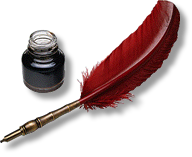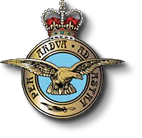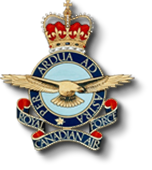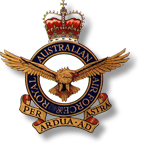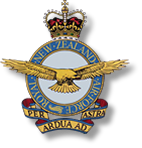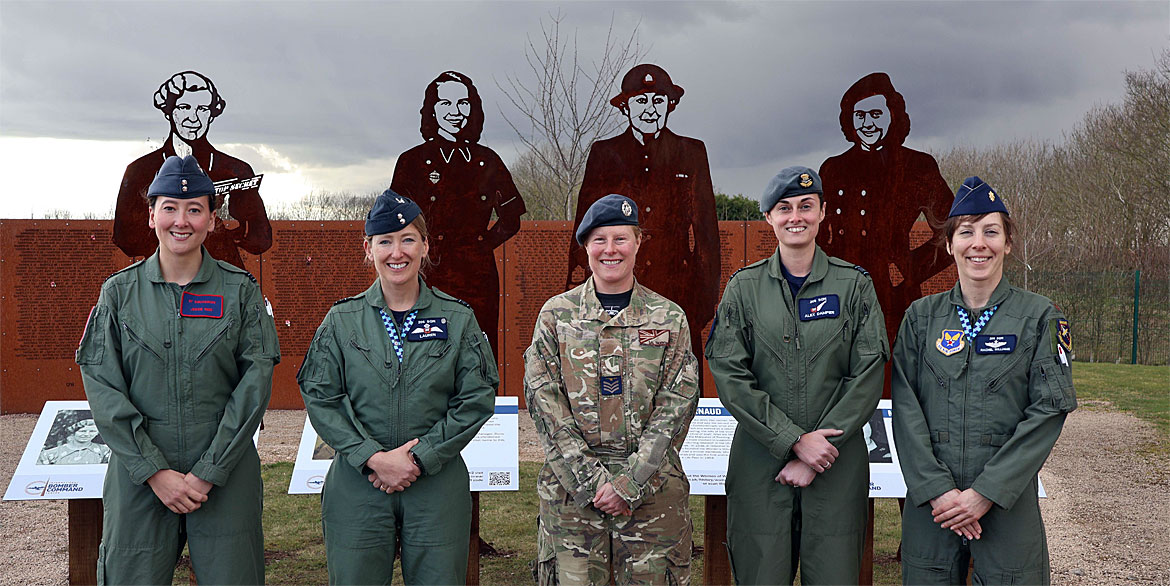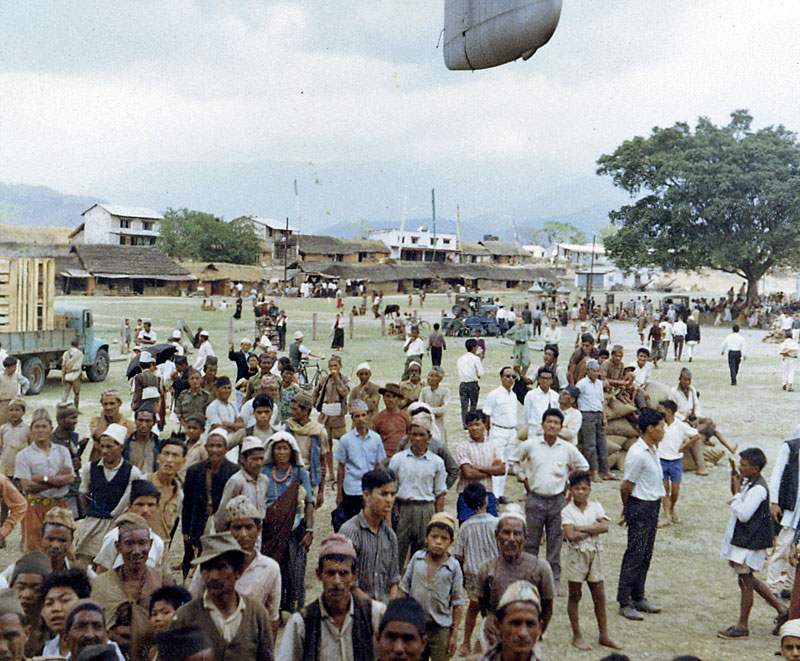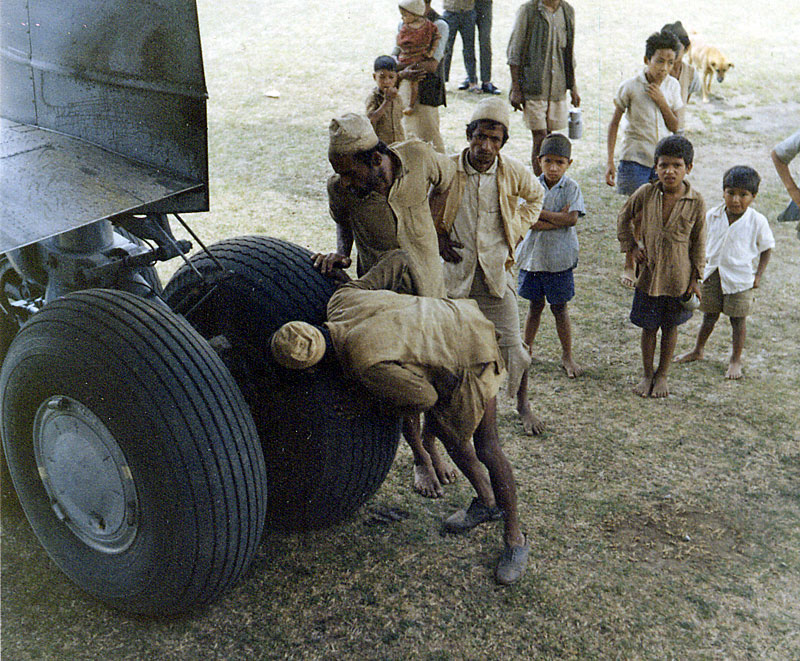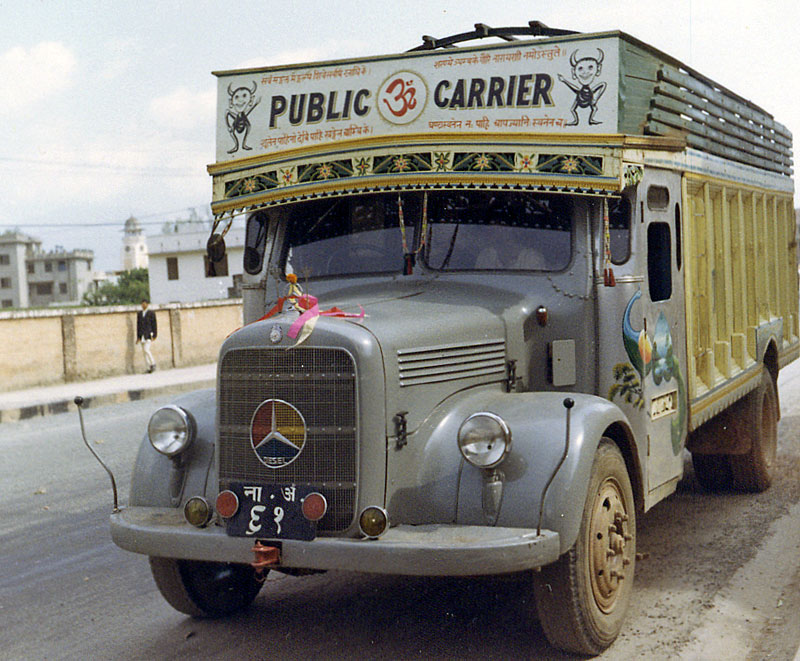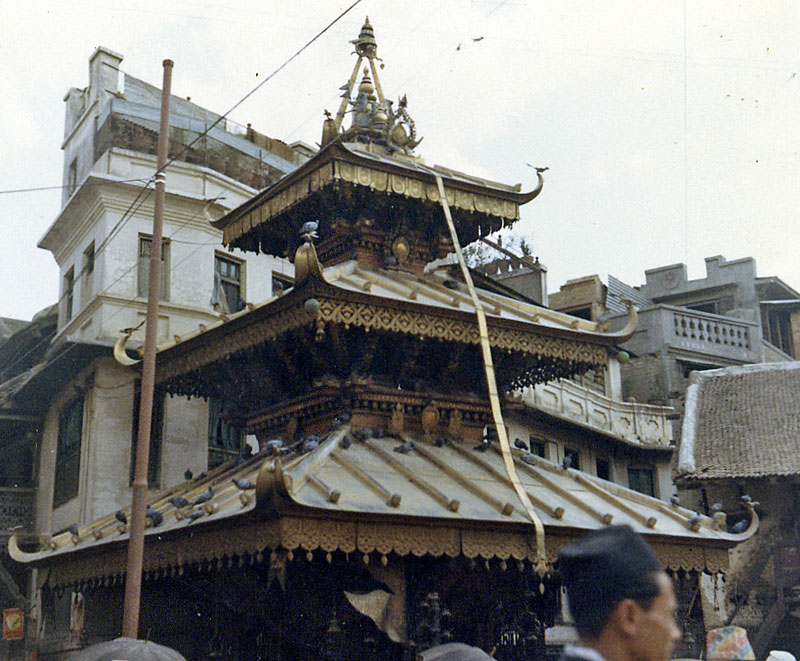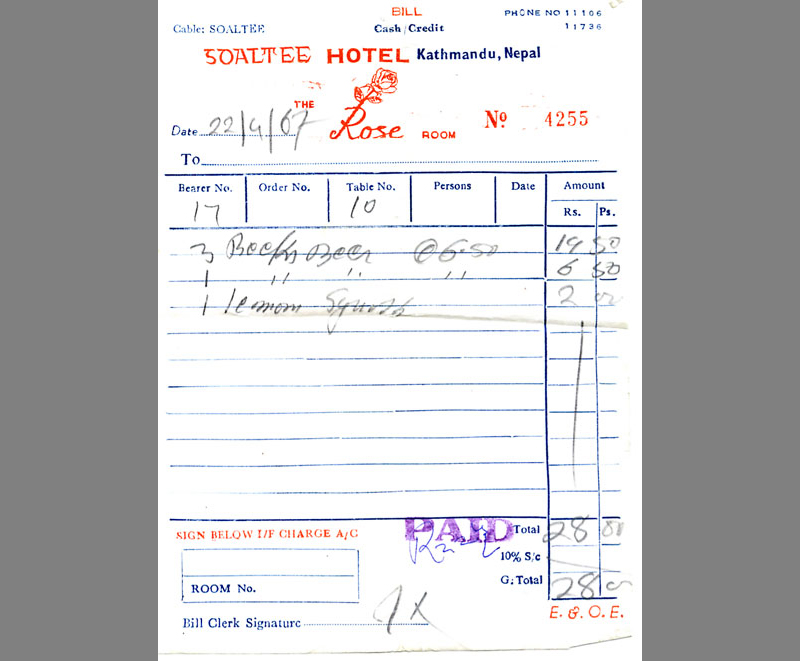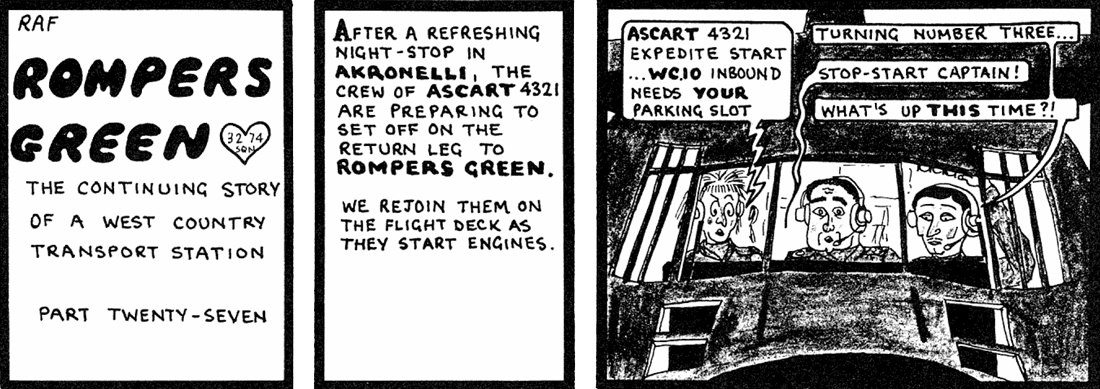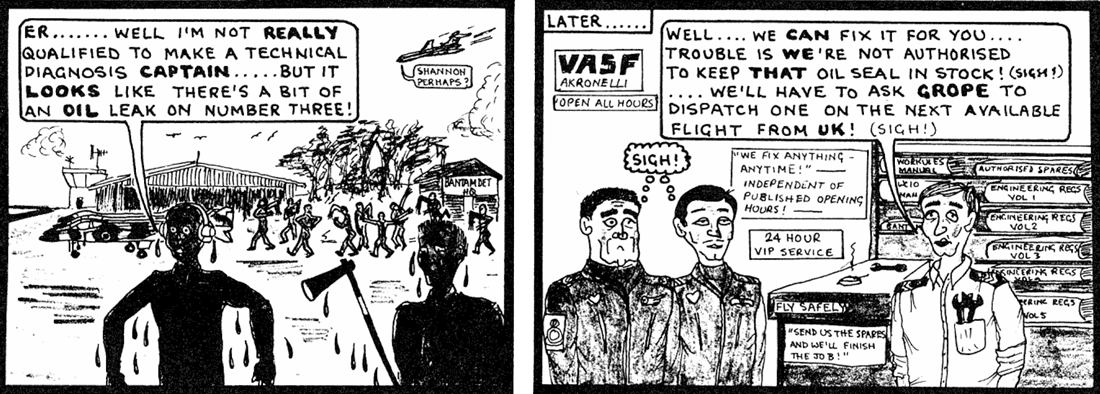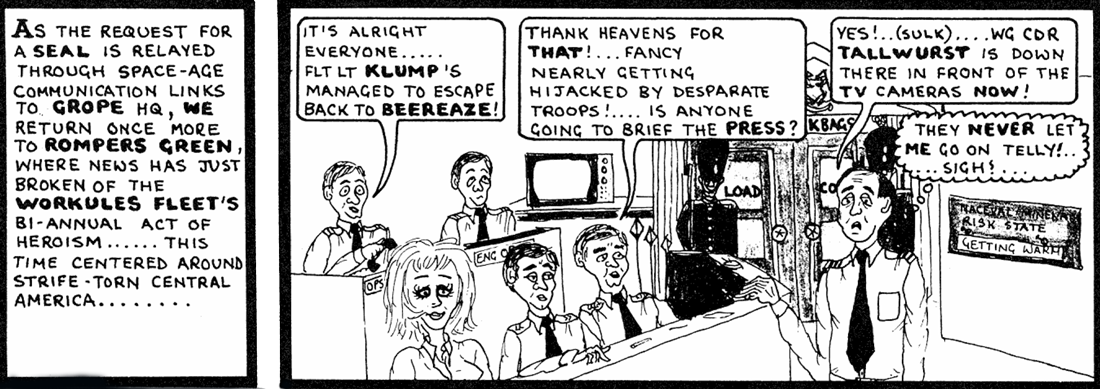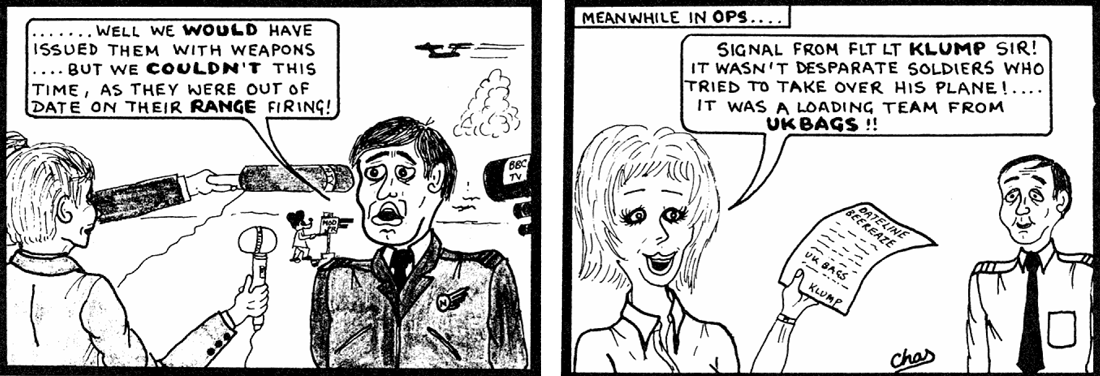

OPERATION BABYLIFT
Remembering the mission to save children of war
Remembering the mission to save children of war
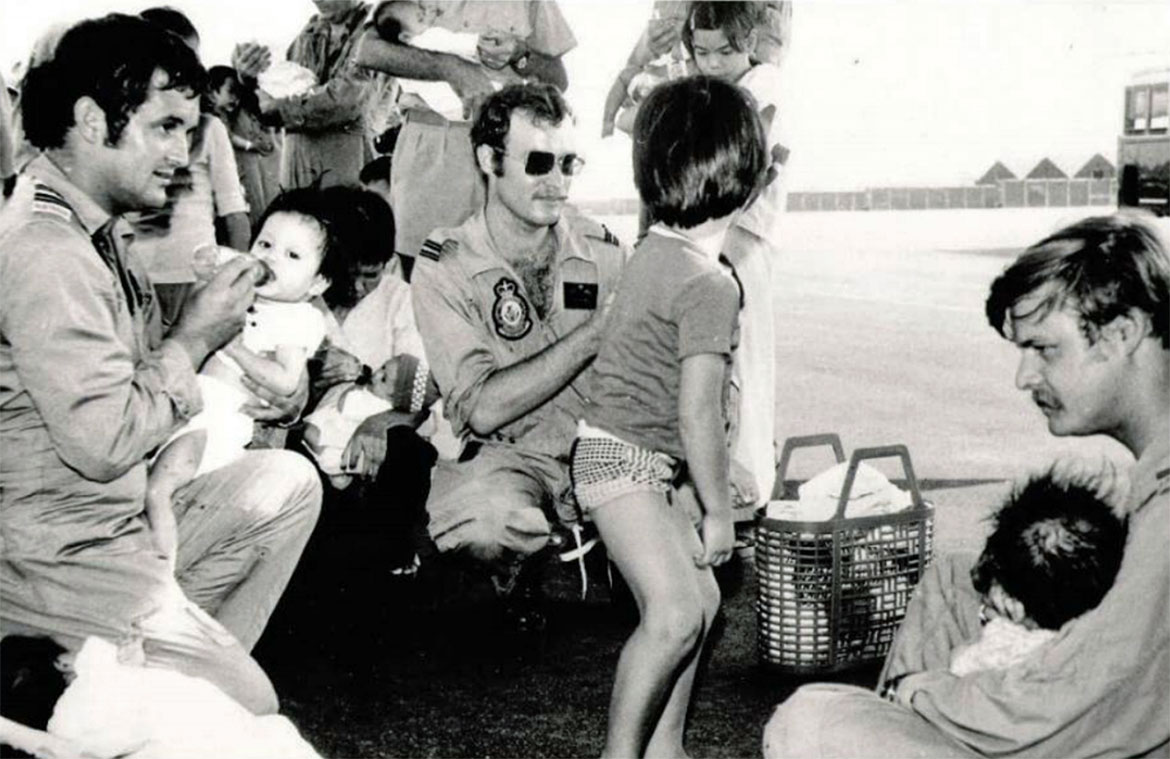
It has been 50 years since the coalition evacuation of Vietnamese war orphans. On April 2, 1975, the United States announced its plans to evacuate to America 2,000 Vietnamese war orphans and children fathered by American servicemen, where it was hoped they would be adopted. Australia's intention to mount a similar effort was made public later that day by Prime Minister Gough Whitlam, who announced that RAAF aircraft would evacuate about 200 children from Saigon in Vietnam to Bangkok in Thailand, where they would be met by a Qantas airliner to bring them to Australia.
This announcement triggered a flurry of activity at RAAF Base Butterworth in Malaysia the next day, with four aeromedical teams from 4 RAAF Hospital placed on alert to deploy to Saigon the next morning for Operation Babylift. That night, hospital staff busily lined cut-down packing cases with foam rubber bases to carry babies on board the aircraft.
The American program got off to a tragic start on April 4 when a United States Air Force C-5A Galaxy aircraft with 243 children on board crashed soon after taking off from Saigon. The crew was attempting to return to the airport following a pressurisation failure when the Galaxy crashed two kilometres short of the runway, bounced across the 150-metre-wide Saigon River and exploded on impact. Around 200 people - 143 of them young children mostly under 12 months' old — lost their lives.
The first of two RAAF C-130 Hercules aircraft departed Saigon with 87 orphans on board shortly after the Galaxy had taken off (but before it had crashed). "The babies were simply laid side by side, five to a medevac litter, with a bottle of boiled water put in their mouths. This was to keep them sucking and adjust their ears to changing air pressure," a RAAF nursing sister said. "A tie-down strap was used to secure them for take-off. It seems pretty rudimentary in retrospect, but at the time this was the simplest way of coping with such large numbers."
As the crew of the second RAAF C-130 aircraft were preparing to depart Saigon, they became aware of the crash of the Galaxy. It was not immediately known if the crash had possibly been caused by an act of sabotage or a bomb. The C-130 and everything loaded on it were carefully scrutinised for suspicious items or tampering.
When the second RAAF C-130 safely joined the first in Bangkok, 194 children had been evacuated. They were met by wives of Australian diplomats and Thai flight attendants, who assisted the RAAF nurses to care for the children. The children were then transferred to a Qantas Boeing 747 airliner that had been chartered by the Australian Government to bring the orphans to Australia.
"We used cardboard cartons as improvised cots for the babies," a RAAF nursing sister who accompanied the orphans on the Qantas flight said. "Every available space in the aircraft was soon filled to capacity, with the very sick orphans placed to the rear of the aircraft to receive intensive nursing. On arrival at Tullamarine [in Melbourne] in the early morning, amid tight security, the very ill children were transferred first to waiting ambulances."
On April 17, another two RAAF aircraft evacuated a further 77 orphans during a second airlift. The babies and children evacuated by the RAAF and Qantas during Operation Babylift were later adopted by Australian families and became members of the Australian community.
This announcement triggered a flurry of activity at RAAF Base Butterworth in Malaysia the next day, with four aeromedical teams from 4 RAAF Hospital placed on alert to deploy to Saigon the next morning for Operation Babylift. That night, hospital staff busily lined cut-down packing cases with foam rubber bases to carry babies on board the aircraft.
The American program got off to a tragic start on April 4 when a United States Air Force C-5A Galaxy aircraft with 243 children on board crashed soon after taking off from Saigon. The crew was attempting to return to the airport following a pressurisation failure when the Galaxy crashed two kilometres short of the runway, bounced across the 150-metre-wide Saigon River and exploded on impact. Around 200 people - 143 of them young children mostly under 12 months' old — lost their lives.
The first of two RAAF C-130 Hercules aircraft departed Saigon with 87 orphans on board shortly after the Galaxy had taken off (but before it had crashed). "The babies were simply laid side by side, five to a medevac litter, with a bottle of boiled water put in their mouths. This was to keep them sucking and adjust their ears to changing air pressure," a RAAF nursing sister said. "A tie-down strap was used to secure them for take-off. It seems pretty rudimentary in retrospect, but at the time this was the simplest way of coping with such large numbers."
As the crew of the second RAAF C-130 aircraft were preparing to depart Saigon, they became aware of the crash of the Galaxy. It was not immediately known if the crash had possibly been caused by an act of sabotage or a bomb. The C-130 and everything loaded on it were carefully scrutinised for suspicious items or tampering.
When the second RAAF C-130 safely joined the first in Bangkok, 194 children had been evacuated. They were met by wives of Australian diplomats and Thai flight attendants, who assisted the RAAF nurses to care for the children. The children were then transferred to a Qantas Boeing 747 airliner that had been chartered by the Australian Government to bring the orphans to Australia.
"We used cardboard cartons as improvised cots for the babies," a RAAF nursing sister who accompanied the orphans on the Qantas flight said. "Every available space in the aircraft was soon filled to capacity, with the very sick orphans placed to the rear of the aircraft to receive intensive nursing. On arrival at Tullamarine [in Melbourne] in the early morning, amid tight security, the very ill children were transferred first to waiting ambulances."
On April 17, another two RAAF aircraft evacuated a further 77 orphans during a second airlift. The babies and children evacuated by the RAAF and Qantas during Operation Babylift were later adopted by Australian families and became members of the Australian community.

From: Jerry Allen, Cheltenham, Glos
Subject: Down Route and Unserviceable
Hi Tony, I have one for you.
Kim and I had saved our Green Shield Stamps for a trip to Bermuda. It would have been sometime around 1989/90. When our BA flight landed at BDA, I spotted a shiny white VC-10 adorned with little circles, sunning itself in a cozy spot on the airfield. I nudged Kim and said something like, "Any money that aircraft is U/S". Even having recently finished our tour at Dulles, Kim was still quizzical. I reminded her where we were, that BDA was Rate 1's and the late Autumn weather is superb.
Later that evening we wandered into the bar of the hotel where, to our great surprise (!), about 9 people, the males with short hair, were together in a protective armadillo-like huddle sharing a shandy and one bowl of nuts. Not to miss the opportunity, I interrupted the group and said, "You must be from that U/S VC-10". One or two grinned (I did know some of the crew) while others seemed surprised that I had guessed.
Keep up the great work Tony.
Jerry
Subject: Down Route and Unserviceable
Hi Tony, I have one for you.
Kim and I had saved our Green Shield Stamps for a trip to Bermuda. It would have been sometime around 1989/90. When our BA flight landed at BDA, I spotted a shiny white VC-10 adorned with little circles, sunning itself in a cozy spot on the airfield. I nudged Kim and said something like, "Any money that aircraft is U/S". Even having recently finished our tour at Dulles, Kim was still quizzical. I reminded her where we were, that BDA was Rate 1's and the late Autumn weather is superb.
Later that evening we wandered into the bar of the hotel where, to our great surprise (!), about 9 people, the males with short hair, were together in a protective armadillo-like huddle sharing a shandy and one bowl of nuts. Not to miss the opportunity, I interrupted the group and said, "You must be from that U/S VC-10". One or two grinned (I did know some of the crew) while others seemed surprised that I had guessed.
Keep up the great work Tony.
Jerry


From: Chris Goss, Marlow, Bucks
Subject: Down Route and Unserviceable
Hi Tony,
I am fairly sure my first experience was on a C130 XV219 in April 1985. I think it was Derek Baron and Jim Bissell who were with me. It was Exercise Trumpet Dance and we were on the way back from McChord AFB (Tacoma, Washington), we diverted firstly into Winnipeg (13 April) and then Gander (14 April).
The reason for the Gander diversion was definitely due to a faulty direct vision (DV) window. So, off we went expecting to be on our way home the following day. Wrong! They sent a starboard DV window not a port one and it was not until 17 April that the correct one arrived and was fitted.
In the meantime, we had all run out of clean clothes, so off we went to Woolco and bought the cheapest underpants (they were massive and total passion killers) and socks (they lasted a month). Stuck in Gander for 3 days was boring as hell so we were glad to get going.
Then there was C130 XV299 on 2 December 85, Exercise Rum Punch. The heating stuck to bloody hot and all of us were at the back of the ramp in our underwear [Was it the underwear from Woolco Chris?]. We were headed from Gander to Patrick AFB (Cape Canaveral, Florida), but it was so bad that we diverted to Charleston and then jumped on C130 XV299 which was a much more pleasant flight!
All the best
Chris
Subject: Down Route and Unserviceable
Hi Tony,
I am fairly sure my first experience was on a C130 XV219 in April 1985. I think it was Derek Baron and Jim Bissell who were with me. It was Exercise Trumpet Dance and we were on the way back from McChord AFB (Tacoma, Washington), we diverted firstly into Winnipeg (13 April) and then Gander (14 April).
The reason for the Gander diversion was definitely due to a faulty direct vision (DV) window. So, off we went expecting to be on our way home the following day. Wrong! They sent a starboard DV window not a port one and it was not until 17 April that the correct one arrived and was fitted.
In the meantime, we had all run out of clean clothes, so off we went to Woolco and bought the cheapest underpants (they were massive and total passion killers) and socks (they lasted a month). Stuck in Gander for 3 days was boring as hell so we were glad to get going.
Then there was C130 XV299 on 2 December 85, Exercise Rum Punch. The heating stuck to bloody hot and all of us were at the back of the ramp in our underwear [Was it the underwear from Woolco Chris?]. We were headed from Gander to Patrick AFB (Cape Canaveral, Florida), but it was so bad that we diverted to Charleston and then jumped on C130 XV299 which was a much more pleasant flight!
All the best
Chris


Largest all-female RAF flypast takes place
An all-female A400M Atlas crew from RAF Brize Norton have taken part in a historic flypast over the International Bomber Command Centre (IBCC), alongside a Prefect T1 and Eurofighter Typhoon. This was to mark the unveiling of the new Women in War exhibition at the Memorial Spire.
Every aircraft in the flypast was flown by an all-female crew, making this the largest flypast performed solely by female aircrew. The Women in War exhibition features ten steel silhouettes of women during wartime, created by the team from Standing with Giants who were responsible for the D-Day display in Normandy in 2024.
The ten women were chosen by the IBCC to represent the contribution, courage, and leadership shown by women at all levels during the Second World War.
The Atlas, flown by 206 Test & Evaluation Squadron from RAF Brize Norton, was flown by Squadron Leader Stewart and Major Williams, with Air Loadmaster Sergeant Thornton and Flight Test Engineer, Squadron Leader Dampier completing the crew.
Squadron Leader Stewart, who previously flew an all-female crew over Wembley Arena for the Lionesses' Euro Final said: “Today was really important to me because it gave us a chance to honour the work that women have done before us. One of the statues that was unveiled today was Joan Curran who invented what today we know as aircraft countermeasures. Being a test pilot on 206 Squadron and working on the future defensive capabilities of the aircraft, to commemorate and celebrate the pioneering work of women in defence that came before was so important to me. It was a fantastic atmosphere on the flight deck and everyone onboard was really proud to put on a good show for the IBCC."
The flypast was enjoyed by those attending the unveiling of the silhouettes at the IBCC, with the crews of the Atlas and Prefect landing at nearby RAF Waddington to meet the guests on the ground.
raf.mod.uk
Every aircraft in the flypast was flown by an all-female crew, making this the largest flypast performed solely by female aircrew. The Women in War exhibition features ten steel silhouettes of women during wartime, created by the team from Standing with Giants who were responsible for the D-Day display in Normandy in 2024.
The ten women were chosen by the IBCC to represent the contribution, courage, and leadership shown by women at all levels during the Second World War.
The Atlas, flown by 206 Test & Evaluation Squadron from RAF Brize Norton, was flown by Squadron Leader Stewart and Major Williams, with Air Loadmaster Sergeant Thornton and Flight Test Engineer, Squadron Leader Dampier completing the crew.
Squadron Leader Stewart, who previously flew an all-female crew over Wembley Arena for the Lionesses' Euro Final said: “Today was really important to me because it gave us a chance to honour the work that women have done before us. One of the statues that was unveiled today was Joan Curran who invented what today we know as aircraft countermeasures. Being a test pilot on 206 Squadron and working on the future defensive capabilities of the aircraft, to commemorate and celebrate the pioneering work of women in defence that came before was so important to me. It was a fantastic atmosphere on the flight deck and everyone onboard was really proud to put on a good show for the IBCC."
The flypast was enjoyed by those attending the unveiling of the silhouettes at the IBCC, with the crews of the Atlas and Prefect landing at nearby RAF Waddington to meet the guests on the ground.
raf.mod.uk
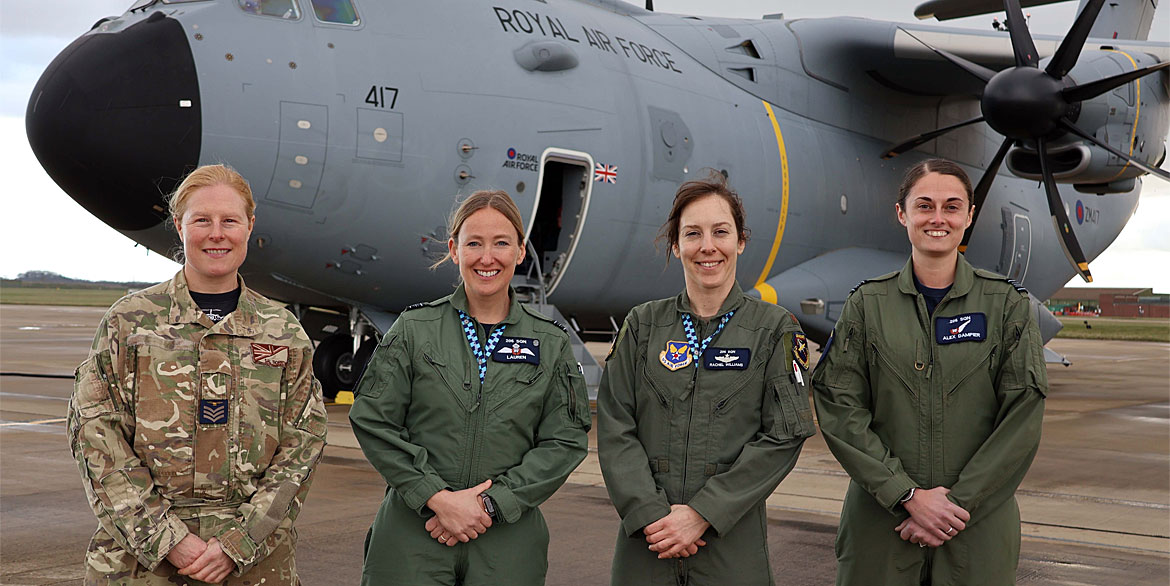

From: Paul “Taff” Kelly, Lyneham, Wilts
Subject: Down Route and Unserviceable
Hi Tony,
Back in the day (1992-96), Phil Overson and I were tasked with an Albert on a recovery job to San Diego (SAN). Firstly though, we flew from LYE to Goose Bay (YYR) to rescue a u/s Herc. We arrived in a snow storm and spotted the u/s Herc half buried in the white stuff. Phil and I offloaded all of the recovery equipment.
Ray Beastall (at that time stationed at YYR), came out to greet us and told us that there was a revision to our itinerary. Our original task had been reallocated and we were to stay with the u/s Herc. We spent several days assisting the movers at YYR. We were now to recover via Washington (IAD) and the now serviceable Herc was reroled to side guidance. We bid a fond farewell to Ray and his team; we had been well looked after.
On arrival at IAD we were met by the RAFLO and shown the load destined for the UK. Because of our late arrival, there was no ACHE available and we had to manually shuffle the current load on the a/c with the additional cargo in order for it to trim - many hours of hard labour - what a job, crack on and get it sorted! Following that, we retired to the bar for some well-earned bevvies.
Sgt Taff Kelly
p.s. RTB with a nice journey across the pond.
p.p.s God bless Albert!
Subject: Down Route and Unserviceable
Hi Tony,
Back in the day (1992-96), Phil Overson and I were tasked with an Albert on a recovery job to San Diego (SAN). Firstly though, we flew from LYE to Goose Bay (YYR) to rescue a u/s Herc. We arrived in a snow storm and spotted the u/s Herc half buried in the white stuff. Phil and I offloaded all of the recovery equipment.
Ray Beastall (at that time stationed at YYR), came out to greet us and told us that there was a revision to our itinerary. Our original task had been reallocated and we were to stay with the u/s Herc. We spent several days assisting the movers at YYR. We were now to recover via Washington (IAD) and the now serviceable Herc was reroled to side guidance. We bid a fond farewell to Ray and his team; we had been well looked after.
On arrival at IAD we were met by the RAFLO and shown the load destined for the UK. Because of our late arrival, there was no ACHE available and we had to manually shuffle the current load on the a/c with the additional cargo in order for it to trim - many hours of hard labour - what a job, crack on and get it sorted! Following that, we retired to the bar for some well-earned bevvies.
Sgt Taff Kelly
p.s. RTB with a nice journey across the pond.
p.p.s God bless Albert!
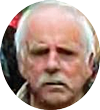

From: Dougie Russell, Carlisle
Subject: Down Route and Unserviceable
Tony,
It was sometime between August and December 1990, when I was I was JNCO i/c UKMAMS Stores and the Gulf War was raging.
Subject: Down Route and Unserviceable
Tony,
It was sometime between August and December 1990, when I was I was JNCO i/c UKMAMS Stores and the Gulf War was raging.
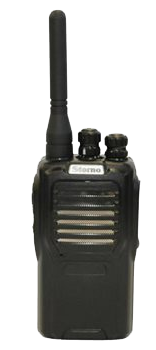
I took an overnight road trip from Lyneham to North Luffenham to collect some upgraded Storno Radios. I had no warning at all and was very surprised to see the MFO boxes marked: "By Safe Hand of Cpl Russell" and they were to be delivered to MAMS teams positioned around the Gulf.
The first priority was get myself to the Medical Centre for an armful of injections followed in quick order by a visit to the RAF Regiment to update my weapons training.
This was going to be a 3-day clockwise re-supply trip on a Herc. The first part was on schedule, deliveries accomplished and we were to night stop at Seeb in Oman. I was greeted by Derek Grayson who was the SNCO at the time. Then things started to go awry - there was a 48 hour delay as the Herc got sick and had to fly back to Akrotiri (flight crew only).
The next Herc that arrived was going around the Gulf in an anti-clockwork pattern so I spent the time helping the team that were there until the arrival of a third Herc and blow me down this one went u/s too and had to return to Akrotiri (again, flight crew only - no pax).
This was now getting beyond a joke - my poor wife was wondering where I was and MAMS Ops had no idea! Eventually I did get back to Lyneham. So, 3 days turned into 7, but I did get to stay at the Intercontinental Hotel in Seeb!
Regards,
Dougie
The first priority was get myself to the Medical Centre for an armful of injections followed in quick order by a visit to the RAF Regiment to update my weapons training.
This was going to be a 3-day clockwise re-supply trip on a Herc. The first part was on schedule, deliveries accomplished and we were to night stop at Seeb in Oman. I was greeted by Derek Grayson who was the SNCO at the time. Then things started to go awry - there was a 48 hour delay as the Herc got sick and had to fly back to Akrotiri (flight crew only).
The next Herc that arrived was going around the Gulf in an anti-clockwork pattern so I spent the time helping the team that were there until the arrival of a third Herc and blow me down this one went u/s too and had to return to Akrotiri (again, flight crew only - no pax).
This was now getting beyond a joke - my poor wife was wondering where I was and MAMS Ops had no idea! Eventually I did get back to Lyneham. So, 3 days turned into 7, but I did get to stay at the Intercontinental Hotel in Seeb!
Regards,
Dougie


RNZAF flight delivers much-needed medical chairs to Samoa
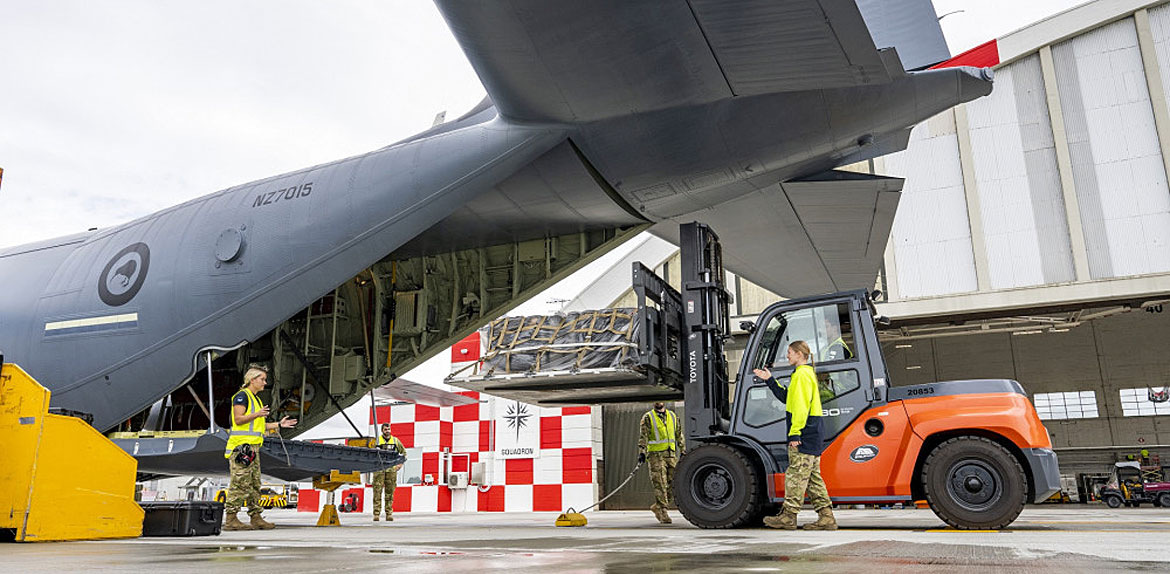
A Royal New Zealand Air Force (RNZAF) C-130J Hercules has delivered specialised medical chairs to Samoa. The five bulky chairs are designed for patients receiving chemotherapy or dialysis treatment and were donated by Christchurch’s Forté Health Hospital. The delivery was facilitated by Rotary New Zealand.
The Hercules left RNZAF Base Auckland on Wednesday [March 19] on its way to the United States, with a scheduled stop in Apia.
Forté has been donating medical equipment to the Pacific Islands since 2020, as part of a project organised by Rotary New Zealand World Community Service. Forté Hospital Manager Angela Ross says the chairs are high-quality equipment and they were grateful they could be given a second life. “We know the donation of these day-stay chairs, along with our many other donations over the years, make an enormous difference to healthcare staff, patients and communities across the Pacific. It’s pretty special,” Ms Ross said.
Rotary New Zealand’s executive director Stuart Batty says he is delighted the RNZAF can fly the chairs to Samoa. “For the past 25 years Rotary has been sending shipping container-loads of mostly medical and educational equipment to the Pacific countries,” he said. “We got them in the container but we thought we might need to stack things on them and it could be a problem. So I thought I would see if the RNZAF could take them and lo and behold they were able to. It’s fantastic.”
The chairs would likely be used at Apia’s main hospital, which had dialysis and cancer wards, Mr Batty said. “It’s so great the chairs were able to be flown over so quickly after my request. There aren’t too many aircraft which can move bulky equipment like the chairs. The Hercules is perfect for the job.”
No. 40 Squadron Commanding Officer, Wing Commander Brad Scott, says he is pleased the squadron can lend a hand. “In situations where we have spare capacity it is a great way of helping our Pacific neighbours. “To be able to offer to move the chairs that will benefit people in need is a fantastic opportunity and we are happy to be able to support charities such as Rotary New Zealand and Forté Health Hospital with the flight.”
nzdf.mil.nz
The Hercules left RNZAF Base Auckland on Wednesday [March 19] on its way to the United States, with a scheduled stop in Apia.
Forté has been donating medical equipment to the Pacific Islands since 2020, as part of a project organised by Rotary New Zealand World Community Service. Forté Hospital Manager Angela Ross says the chairs are high-quality equipment and they were grateful they could be given a second life. “We know the donation of these day-stay chairs, along with our many other donations over the years, make an enormous difference to healthcare staff, patients and communities across the Pacific. It’s pretty special,” Ms Ross said.
Rotary New Zealand’s executive director Stuart Batty says he is delighted the RNZAF can fly the chairs to Samoa. “For the past 25 years Rotary has been sending shipping container-loads of mostly medical and educational equipment to the Pacific countries,” he said. “We got them in the container but we thought we might need to stack things on them and it could be a problem. So I thought I would see if the RNZAF could take them and lo and behold they were able to. It’s fantastic.”
The chairs would likely be used at Apia’s main hospital, which had dialysis and cancer wards, Mr Batty said. “It’s so great the chairs were able to be flown over so quickly after my request. There aren’t too many aircraft which can move bulky equipment like the chairs. The Hercules is perfect for the job.”
No. 40 Squadron Commanding Officer, Wing Commander Brad Scott, says he is pleased the squadron can lend a hand. “In situations where we have spare capacity it is a great way of helping our Pacific neighbours. “To be able to offer to move the chairs that will benefit people in need is a fantastic opportunity and we are happy to be able to support charities such as Rotary New Zealand and Forté Health Hospital with the flight.”
nzdf.mil.nz

From: Stephen Davey, Tadcaster, North Yorks
Subject: Down Route and Unserviceable
Tony,
The following story is true and to spare any embarrassment I have purposely excluded the names of the individuals concerned (except my own of course!).
Brize Norton, circa early 1973 and our team consisting of one corporal and three airmen were tasked with loading a VC-10 for a flight to Dulles. The corporal, myself and one other were loading the front freight hold and waiting for our driver (also on our team) to arrive with the 12,000lb forklift with more freight on the pallet,
The forklift arrived and my corporal ordered me to marshal the vehicle up to the freight hold (now you must remember at this time it was Movements policy that only corporals and above should marshal vehicles in close proximity to the aircraft). I asked the corporal if he should do the marshaling but he replied that he was rather busy and would I mind. Always willing to assist, I positioned myself outside the belly hold on the left side of the aircraft whilst the forklift approached the aircraft at an alarming rate of knots at which point I raised my right arm and shouted at the top of my voice "STOP!"
Now it was a dark night and raining, the ASP lights were on the other side of the aircraft and the power set was blasting out noisily! The end result was that that slave pallet connected with a pair of silver servicing steps which I couldn't move out of the way quickly enough and the steps punctured the VC-10 fuselage just to the right of the forward freight door.
The upshot of all this was the aircraft was declared unserviceable and an airframe change was required. I won't bore you with the hoo-ha that this sh!t show created but the corporal, me and the forklift driver were all charged. I received 7 days jankers and they were both fined (can't remember how much). I still believe to this day that I was crapped on and it ultimately delayed my eventual promotion and it was also this reason why I decided to go back into the supply world.
Many regards,
Steve
Subject: Down Route and Unserviceable
Tony,
The following story is true and to spare any embarrassment I have purposely excluded the names of the individuals concerned (except my own of course!).
Brize Norton, circa early 1973 and our team consisting of one corporal and three airmen were tasked with loading a VC-10 for a flight to Dulles. The corporal, myself and one other were loading the front freight hold and waiting for our driver (also on our team) to arrive with the 12,000lb forklift with more freight on the pallet,
The forklift arrived and my corporal ordered me to marshal the vehicle up to the freight hold (now you must remember at this time it was Movements policy that only corporals and above should marshal vehicles in close proximity to the aircraft). I asked the corporal if he should do the marshaling but he replied that he was rather busy and would I mind. Always willing to assist, I positioned myself outside the belly hold on the left side of the aircraft whilst the forklift approached the aircraft at an alarming rate of knots at which point I raised my right arm and shouted at the top of my voice "STOP!"
Now it was a dark night and raining, the ASP lights were on the other side of the aircraft and the power set was blasting out noisily! The end result was that that slave pallet connected with a pair of silver servicing steps which I couldn't move out of the way quickly enough and the steps punctured the VC-10 fuselage just to the right of the forward freight door.
The upshot of all this was the aircraft was declared unserviceable and an airframe change was required. I won't bore you with the hoo-ha that this sh!t show created but the corporal, me and the forklift driver were all charged. I received 7 days jankers and they were both fined (can't remember how much). I still believe to this day that I was crapped on and it ultimately delayed my eventual promotion and it was also this reason why I decided to go back into the supply world.
Many regards,
Steve


David Powell, Princes Risborough, Bucks
Subject: Down Route and Unserviceable
Hi Tony,
Not quite what you asked for, more a memorable variation of unserviceable and down route...
The year is1965 and I was the easily expendable junior officer in the stores at RAF Changi. The situation was the rotation of a not quite so expendable 3-month detachment supply officer at the small Malaysian forward strip at RAF Kuantan. The problem was a gap of three weeks between his desperately needed going back to the UK and the planned arrival of his successor. The solution was to use me as bridging stop gap, and I was duly tasked with a three-week detachment and report to RAF Seletar at 0600 for a 0700 Monday weekly Beverley resupply departure.
So, after a pretty good party on the Friday night, an even better encore on the Saturday, a more intimate affair on the Sunday and back to Changi for a couple of hours sleep before a Monday 0500 transport pick-up at the Mess. Pick-up on time, arrive RAF Seletar on time, board on time, engines start, engines stop. After a two hour-technical delay we are told to return to our units for another attempt tomorrow. No excuse needed for another very late-night farewell before a couple of hours sleep and an 0500 Tuesday pick-up.
Tuesday morning and this is turning into Ground Hog Day; engine start, engine stop, back tomorrow chaps. And, Ground Hog Day turns into Ground Hog night. Wednesday arrives. Engine start – and they keep going. I actually arrive at RAF Kuantan to be met by my UK returnee desperate to get on with the delayed handover.
One day our paths may cross and I can apologise properly for my very abrupt arrival speech ‘Which Tent? Which camp bed? See you tomorrow!
Best wishes
David Powell F Team UKMAMS 1967-69
Subject: Down Route and Unserviceable
Hi Tony,
Not quite what you asked for, more a memorable variation of unserviceable and down route...
The year is1965 and I was the easily expendable junior officer in the stores at RAF Changi. The situation was the rotation of a not quite so expendable 3-month detachment supply officer at the small Malaysian forward strip at RAF Kuantan. The problem was a gap of three weeks between his desperately needed going back to the UK and the planned arrival of his successor. The solution was to use me as bridging stop gap, and I was duly tasked with a three-week detachment and report to RAF Seletar at 0600 for a 0700 Monday weekly Beverley resupply departure.
So, after a pretty good party on the Friday night, an even better encore on the Saturday, a more intimate affair on the Sunday and back to Changi for a couple of hours sleep before a Monday 0500 transport pick-up at the Mess. Pick-up on time, arrive RAF Seletar on time, board on time, engines start, engines stop. After a two hour-technical delay we are told to return to our units for another attempt tomorrow. No excuse needed for another very late-night farewell before a couple of hours sleep and an 0500 Tuesday pick-up.
Tuesday morning and this is turning into Ground Hog Day; engine start, engine stop, back tomorrow chaps. And, Ground Hog Day turns into Ground Hog night. Wednesday arrives. Engine start – and they keep going. I actually arrive at RAF Kuantan to be met by my UK returnee desperate to get on with the delayed handover.
One day our paths may cross and I can apologise properly for my very abrupt arrival speech ‘Which Tent? Which camp bed? See you tomorrow!
Best wishes
David Powell F Team UKMAMS 1967-69


RAF Logistics Officer Awarded Prestigious Carmen Cup
Flight Lieutenant Courtenay Smith from RAF Brize Norton has been awarded the Carmen’s Royal Air Force Cup for 2024.
The Carmen’s Royal Air Force Cup, founded by the Worshipful Company of Carmen in 2001 recognises the greatest contribution by any officer to operational logistics during the previous year.
Flight Lieutenant Smith attended Plaisterers’ Hall in London in February at the Worshipful Company of Carmen’s annual Defence Awards Dinner, and was presented the Cup by Her Royal Highness, The Princess Royal.
Working in multiple high tempo operational roles, Flight Lieutenant Smith handled several high-priority tasks whilst continuing to balance day-to-day running of Passenger Planning at RAF Brize Norton, working extended hours, and showing exemplary dedication to the success of operations. In her current role as Officer Commanding Air Cargo.
Flight Lieutenant Smith improved working procedures and oversaw large projects, enhancing the working lives of her team.
Flight Lieutenant Smith said: “I can’t believe I was even considered for an award, let alone win it! My team and I have worked incredibly hard over the past year to create something truly special; my thanks go out to them all. It means so much to me to have the honour of accepting this award on behalf of the teams I’ve had the pleasure to work with. The evening of the award ceremony itself was surreal. Having dinner on a top table, in London, with the Princess Royal is something I’ll certainly remember for a long time after I have retired from service”
raf.mod.uk
The Carmen’s Royal Air Force Cup, founded by the Worshipful Company of Carmen in 2001 recognises the greatest contribution by any officer to operational logistics during the previous year.
Flight Lieutenant Smith attended Plaisterers’ Hall in London in February at the Worshipful Company of Carmen’s annual Defence Awards Dinner, and was presented the Cup by Her Royal Highness, The Princess Royal.
Working in multiple high tempo operational roles, Flight Lieutenant Smith handled several high-priority tasks whilst continuing to balance day-to-day running of Passenger Planning at RAF Brize Norton, working extended hours, and showing exemplary dedication to the success of operations. In her current role as Officer Commanding Air Cargo.
Flight Lieutenant Smith improved working procedures and oversaw large projects, enhancing the working lives of her team.
Flight Lieutenant Smith said: “I can’t believe I was even considered for an award, let alone win it! My team and I have worked incredibly hard over the past year to create something truly special; my thanks go out to them all. It means so much to me to have the honour of accepting this award on behalf of the teams I’ve had the pleasure to work with. The evening of the award ceremony itself was surreal. Having dinner on a top table, in London, with the Princess Royal is something I’ll certainly remember for a long time after I have retired from service”
raf.mod.uk
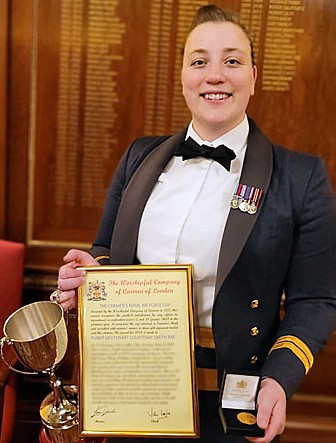


From: Ian Berry, Eastleaze, Swindon, Wilts
Subject: Down Route Delays...
Hi Tony,
What a topic, I'll give you three!
1) I was guesting with Hotel Team (UKMAMS Abingdon) on a Belfast task to Goa to deliver a Sea King helicopter for the Indian Navy. We left the UK on October 23rd 1973, arriving Goa on the 25th. After a night stop we arrived back at the aircraft but had problems starting. It transpired the APU was u/s and had been from leaving Brize, but the flight crew decided to carry the snag. The result was we tried to start using the aircraft batteries but we couldn't start and the batteries went flat. They then had to be removed and taken to the battery bay to be recharged.
Back to the hotel in Punaji which was quite a hike and included a ferry crossing with the coach. We repeated this trip five times after the same results. Meanwhile, MAMS HQ had told us to remain in-situ as another Belfast with a Sea King was arriving on the 30th. The solution for our u/s aircraft was to divert a 70 Sqn C130 from Masirah with a 60 kva power set. By the time we got to the airfield the C130 had landed and we found the crew hot and sticky and in a foul mood. The reason was quite obvious as the aircraft was not carrying a winch and Masirah Movements had used a Tirfor winch [hand powered] which they left on board for the offload. The C130 crew had tried in vain to offload the power set themselves but could not figure out how the winch worked - embarrassing! Power set offloaded, Belfast started and off it departed. Later that day the next one arrived. Once we had offloaded the helicopter we backloaded the power set. The next morning we started first time and flew back to the UK via Masirah to return the power set and then 'slipped' crews in Cyprus and arrived back on the 31st; a memorable trip.
Subject: Down Route Delays...
Hi Tony,
What a topic, I'll give you three!
1) I was guesting with Hotel Team (UKMAMS Abingdon) on a Belfast task to Goa to deliver a Sea King helicopter for the Indian Navy. We left the UK on October 23rd 1973, arriving Goa on the 25th. After a night stop we arrived back at the aircraft but had problems starting. It transpired the APU was u/s and had been from leaving Brize, but the flight crew decided to carry the snag. The result was we tried to start using the aircraft batteries but we couldn't start and the batteries went flat. They then had to be removed and taken to the battery bay to be recharged.
Back to the hotel in Punaji which was quite a hike and included a ferry crossing with the coach. We repeated this trip five times after the same results. Meanwhile, MAMS HQ had told us to remain in-situ as another Belfast with a Sea King was arriving on the 30th. The solution for our u/s aircraft was to divert a 70 Sqn C130 from Masirah with a 60 kva power set. By the time we got to the airfield the C130 had landed and we found the crew hot and sticky and in a foul mood. The reason was quite obvious as the aircraft was not carrying a winch and Masirah Movements had used a Tirfor winch [hand powered] which they left on board for the offload. The C130 crew had tried in vain to offload the power set themselves but could not figure out how the winch worked - embarrassing! Power set offloaded, Belfast started and off it departed. Later that day the next one arrived. Once we had offloaded the helicopter we backloaded the power set. The next morning we started first time and flew back to the UK via Masirah to return the power set and then 'slipped' crews in Cyprus and arrived back on the 31st; a memorable trip.
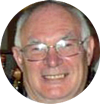
2) UKMAMS had been at Lyneham for some four months in 1974 when, on the 8th June, we left Fairford on a Belfast task. The task was to deliver stores and supplies to Calgary and then collect a consignment of Sparrow Missiles from Pease AFB, New Hampshire, on the way back. On the way out we night stopped at Gander and the Ground Engineer had highlighted the fact that the No.2 engine was using a lot of oil. The next day we carried on to Calgary via Ottawa. Once again the oil consumption was alarming and a signal was sent ordering a new oil pump to be sent to Calgary for our arrival as it needed changing. Airborne again, we crossed over the Great Lakes when the ALM came back to the Stub Deck and advised they were going to shut down No.2 as it was overheating. We all stared out of the windows to watch the event when there was the distinct sound of an engine winding down but on the other side! PAN PAN PAN.... The No.4 engine had failed!
The Regional Controllers asked the Captain what type of aircraft we were and what runway length we needed? Flying across the lakes with Canada on out right and USA on our left, we banked left. We landed at an Airfield in Duluth, Minnesota. The list of spares had grown quite a bit!
After two nights in a Holiday Inn we were told we had to leave as ALL hotel rooms in Duluth were booked for a large convention. We were all getting quite frantic when accommodation was found for us. To this day I will always remember it... St Scholastica's College for Trainee Priests! We were stranded in Duluth for a total of eight days in which time we met quite a few locals and the aircraft captain was even interviewed on local TV. Duluth, Minnestota was right on the state border with Superior, Wisconsin, the other side of the bridge. Trivia you may think but the bars stayed open longer in the other State. Eventually salvation arrived in the form of a C130 from 242 OCU Thorney Island which brought out a replacement engine as well as a Tyne engine change team. We finally left Duluth on our way to Calgary on the 17th June. All went smoothly from then on and we eventually arrived back in the UK on the 20th June. Another memorable trip.
The Regional Controllers asked the Captain what type of aircraft we were and what runway length we needed? Flying across the lakes with Canada on out right and USA on our left, we banked left. We landed at an Airfield in Duluth, Minnesota. The list of spares had grown quite a bit!
After two nights in a Holiday Inn we were told we had to leave as ALL hotel rooms in Duluth were booked for a large convention. We were all getting quite frantic when accommodation was found for us. To this day I will always remember it... St Scholastica's College for Trainee Priests! We were stranded in Duluth for a total of eight days in which time we met quite a few locals and the aircraft captain was even interviewed on local TV. Duluth, Minnestota was right on the state border with Superior, Wisconsin, the other side of the bridge. Trivia you may think but the bars stayed open longer in the other State. Eventually salvation arrived in the form of a C130 from 242 OCU Thorney Island which brought out a replacement engine as well as a Tyne engine change team. We finally left Duluth on our way to Calgary on the 17th June. All went smoothly from then on and we eventually arrived back in the UK on the 20th June. Another memorable trip.
3) It was still 1974 and on the 1st December I was tasked with a quick four day trip to Calgary on a C130 from Lyneham. After a night in Goose Bay all was going well until an hour out of Calgary we had a sheared hydraulic pump and an engine had to be shut down. The Ground Engineer again was confident that it was not a great problem to fix. Transpired there was contamination (shavings) in the whole system, and after two days the aircraft was wheeled into a Hangar. From then on things dragged on slowly. After a few days we were informed our allowances were changing to 'actuals' and this really amounted to the equivalent of a pay cut! I had an aunt who lived in Victoria, Vancouver island, and as the serviceability prognosis was not good I got permission to 'leave the scene'. Paying my own way I flew to Victoria via Vancouver on Pacific Western. When I returned it was on Air Canada via Vancouver and Kelowna. I managed four days with my aunt and cousins. By the 15th December another C130 from Lyneham arrived with a purging trolley and eventually our Herc was fixed. By now though, the on-board oxygen had evaporated and we had to fly up to CFB Namao to pick up some LOX. We eventually arrived back at Lyneham on the 18th December, some 14 days late and laden with Christmas presents.
Ian
Ian
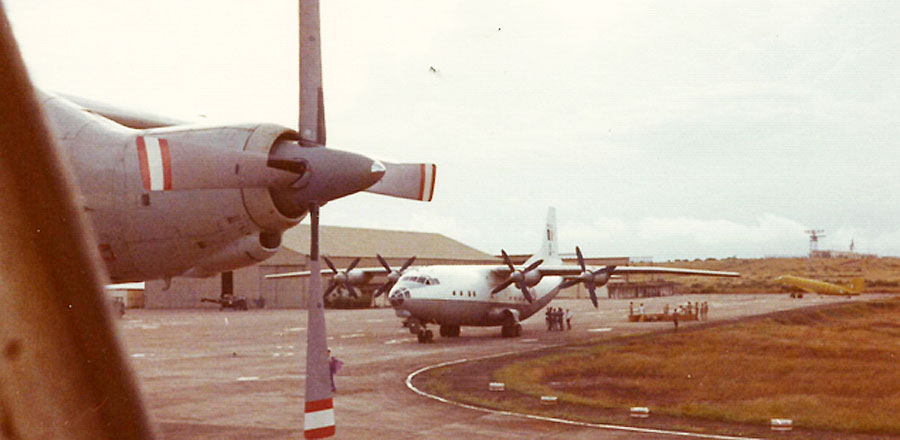
The view from the Belfast window on arrival at the Indian Naval Air Station Hansa in Goa.
There is an Indian Air Force AN12 and C47 Dakota
There is an Indian Air Force AN12 and C47 Dakota
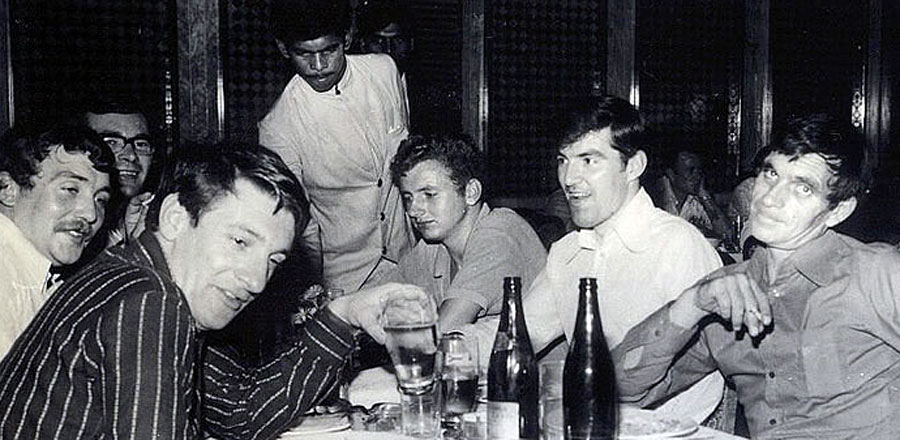
In the hotel in Punaji - in the foreground is Gerry Keyworth, to his left is Alan "Boot" Pratt then myself.
Seated on the right are Ian Place, Tim Newstead and D K Henderson.
Seated on the right are Ian Place, Tim Newstead and D K Henderson.
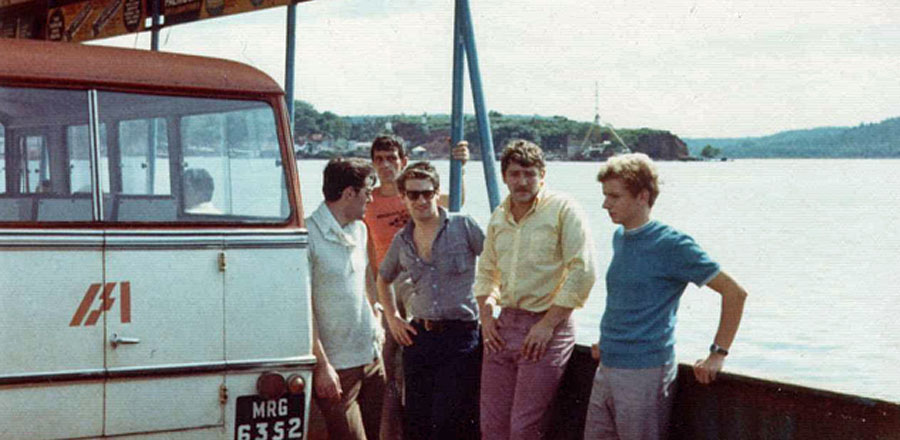
On the Dabolim Ferry with the Air India coach - Tim, DK, Gerry, Boot and Ian - I was behind the camera
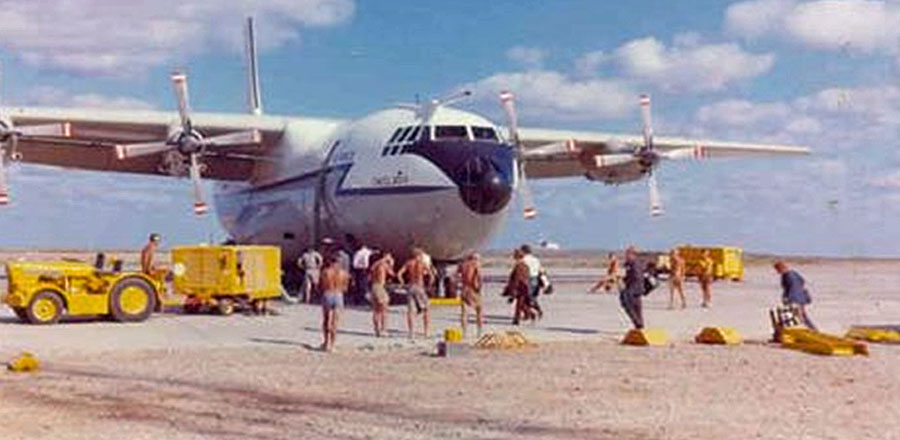
The Belfast at Masirah - we had just dropped off the power unit on our way home
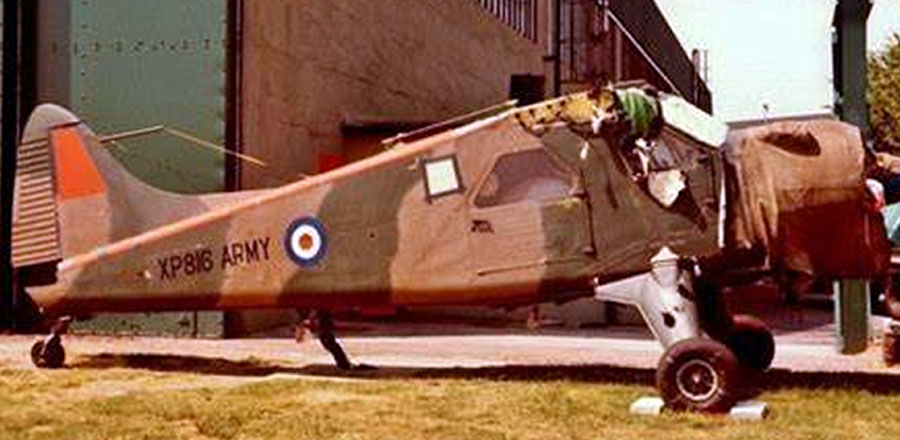
The C130 load for Calgary was an Army Air Corps Beaver - the wings came too!

The RAF deployed one of its A400M aircraft from Chile on reconnaissance missions over Antarctica
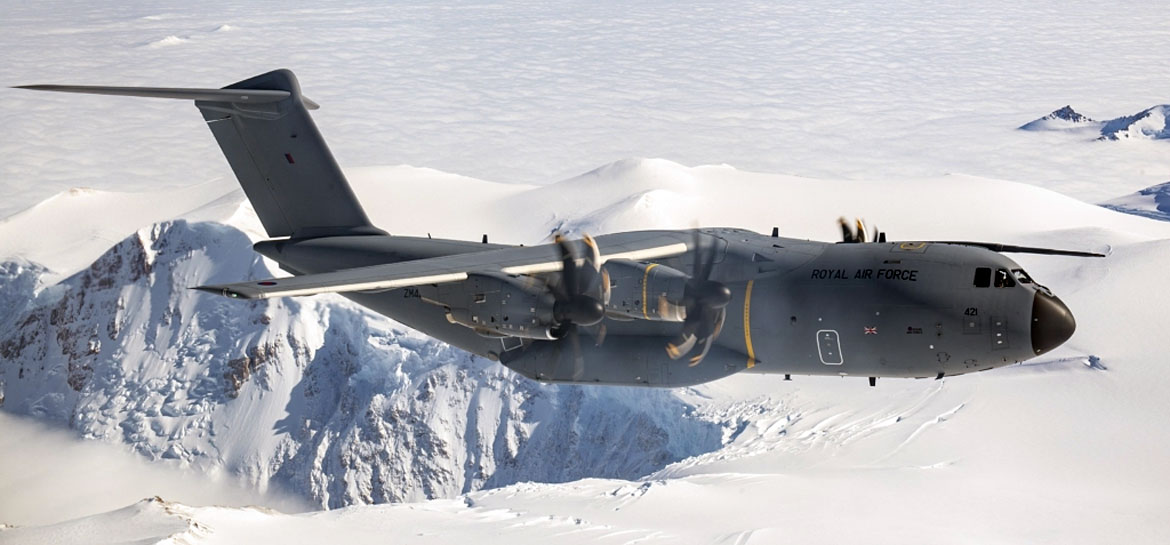
With the purpose of supporting the British Antarctic Survey (BAS) forward operations, between February 13 and 15, the Royal Air Force (RAF) carried out Operation “Austral Endurance,” consisting of a series of reconnaissance missions over Union Glacier in Antarctica. These operations were conducted by an Airbus A400M Atlas tactical transport aircraft deployed from Punta Arenas, Chile, with the support of a Voyager refueling aircraft deployed from the Malvinas Islands.
The aircraft, registered as ZM421, departed from Mount Pleasant Air Base en route to the city of Punta Arenas, Chile, where it arrived on February 13. After completing the stopover, the aircraft took off again, heading for Antarctica.
For these long-range missions, the RAF was supported by a Voyager KC3 refueling aircraft, responsible for in-flight fuel supply. This combination allowed the A400M to reach extremely remote areas, making it the southernmost mission conducted by the RAF in recent years. The aircraft operated beyond the 79th parallel south in a key operation for scientific research and environmental monitoring, ensuring the safety of scientists in the region.
Based at the Mount Pleasant Military Complex, located on Soledad Island (Malvinas Islands), the A400M aircraft participate in aerial reconnaissance missions and support BAS operations. In 2023, the RAF deployed an A400M to these latitudes for the first time, marking the first occasion that an aircraft of this type took part in cargo drop operations, a task previously performed by C-130 Hercules aircraft.
Operation “Austral Endurance” 2023 aimed primarily at supplying fuel and other provisions to BAS. For this, the assigned A400M (Flight 1312) conducted airdrops over the forward operating station “Sky Blu,” located in southern Palmer Land at 75° south latitude and 1,320 nautical miles from Mount Pleasant. A total delivery of 300 fuel drums was planned, successfully completed over three drops.
Union Glacier has gained significant relevance over the past decade, as it is considered a gateway to the Antarctic continent. Since 2008, the company Antarctic Logistics & Expeditions LLC (ALE), which supports extreme tourism and private expeditions to the South Pole, has developed a blue ice runway in the area, allowing the landing of large aircraft. Additionally, Chile inaugurated the Joint Scientific Polar Station Glaciar Unión, operated by the Chilean Antarctic Institute (INACH) and the Armed Forces, strengthening its scientific presence in the region.
The RAF missions from the Malvinas Islands in support of Antarctic research reinforce the British strategy of continuously operating from this strategic archipelago in the South Atlantic. Argentina, meanwhile, maintains its legitimate claim of sovereignty over the Malvinas Islands, occupied by the United Kingdom since 1833.
zona-militar.com
The aircraft, registered as ZM421, departed from Mount Pleasant Air Base en route to the city of Punta Arenas, Chile, where it arrived on February 13. After completing the stopover, the aircraft took off again, heading for Antarctica.
For these long-range missions, the RAF was supported by a Voyager KC3 refueling aircraft, responsible for in-flight fuel supply. This combination allowed the A400M to reach extremely remote areas, making it the southernmost mission conducted by the RAF in recent years. The aircraft operated beyond the 79th parallel south in a key operation for scientific research and environmental monitoring, ensuring the safety of scientists in the region.
Based at the Mount Pleasant Military Complex, located on Soledad Island (Malvinas Islands), the A400M aircraft participate in aerial reconnaissance missions and support BAS operations. In 2023, the RAF deployed an A400M to these latitudes for the first time, marking the first occasion that an aircraft of this type took part in cargo drop operations, a task previously performed by C-130 Hercules aircraft.
Operation “Austral Endurance” 2023 aimed primarily at supplying fuel and other provisions to BAS. For this, the assigned A400M (Flight 1312) conducted airdrops over the forward operating station “Sky Blu,” located in southern Palmer Land at 75° south latitude and 1,320 nautical miles from Mount Pleasant. A total delivery of 300 fuel drums was planned, successfully completed over three drops.
Union Glacier has gained significant relevance over the past decade, as it is considered a gateway to the Antarctic continent. Since 2008, the company Antarctic Logistics & Expeditions LLC (ALE), which supports extreme tourism and private expeditions to the South Pole, has developed a blue ice runway in the area, allowing the landing of large aircraft. Additionally, Chile inaugurated the Joint Scientific Polar Station Glaciar Unión, operated by the Chilean Antarctic Institute (INACH) and the Armed Forces, strengthening its scientific presence in the region.
The RAF missions from the Malvinas Islands in support of Antarctic research reinforce the British strategy of continuously operating from this strategic archipelago in the South Atlantic. Argentina, meanwhile, maintains its legitimate claim of sovereignty over the Malvinas Islands, occupied by the United Kingdom since 1833.
zona-militar.com


From: Mick Craner, Yeovil, Somerset
Subject: Down Route and Unserviceable
Hello Tony,
Here is a story from my Log Book, September 28th 1969. I was detailed for a wonderful trip, which turned out to be more like a well paid holiday.
Hercules XV194 - Lyneham > Gander > Andrews > Chicago > JFK. On the way I picked up a bug and had to see a Medico in New York. I was grounded for a week, much to the delight of the other crew members, but so sad for them, we didn't have any pax but we had a D cat AQM on board.
Aunty at Upavon sent a message to the crew: "Come home and leave Flt Sgt Craner in New York; he can come home on a VIP Comet in a week's time." The Co-Pilot gave me $3,000 USD from the imprest.
Subject: Down Route and Unserviceable
Hello Tony,
Here is a story from my Log Book, September 28th 1969. I was detailed for a wonderful trip, which turned out to be more like a well paid holiday.
Hercules XV194 - Lyneham > Gander > Andrews > Chicago > JFK. On the way I picked up a bug and had to see a Medico in New York. I was grounded for a week, much to the delight of the other crew members, but so sad for them, we didn't have any pax but we had a D cat AQM on board.
Aunty at Upavon sent a message to the crew: "Come home and leave Flt Sgt Craner in New York; he can come home on a VIP Comet in a week's time." The Co-Pilot gave me $3,000 USD from the imprest.
On the morning of the Hercules departure, I was feeling ok so I rang departures at JFK to be informed that the RAF A/C had departed two hours ago. I was staying in The Royal Manhattan Hotel, so I got myself a really nice breakfast.
So, it was time to tour New York City. First stop, the Empire State Building, then Staten Island and the Statue of Liberty.
Following that I had a nice lunch and a stroll up Broadway. I found a great pub and following several G&Ts I made my way back to the hotel for a nap and to get ready for evening drinks and entertainment.
The next day I visited Central Park and Times Square... and so it went on trying my best to spend the imprest.
So, it was time to tour New York City. First stop, the Empire State Building, then Staten Island and the Statue of Liberty.
Following that I had a nice lunch and a stroll up Broadway. I found a great pub and following several G&Ts I made my way back to the hotel for a nap and to get ready for evening drinks and entertainment.
The next day I visited Central Park and Times Square... and so it went on trying my best to spend the imprest.

At the end of the week I received a message from Aunty at Upavon to proceed to a Hotel (can't remember the name) and make myself known to the Captain of a VIP Comet and come home. I did this and next day flew in style to Gander were we went U/S for 3 days! It was a wonderful end to a trip with the extra allowances.
I never did pay back the $3,000 - you can't make this stuff up!
Regards young man,
Mick
I never did pay back the $3,000 - you can't make this stuff up!
Regards young man,
Mick
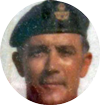
While the RAF is much smaller than it once was, it remains one of the most potent air forces in Europe, with a broad range of capabilities. The RAF has a mix of both US and European aircraft in service. Even some American aircraft have extensive British DNA; for example, 15% of the F-35 Lightning II components are made in Britain, including the Rolls-Royce LiftSystem found on the F-35B. For the RAF, range matters, especially given that the Royal Air Force deploys to conflicts far from home.
In the following frames are the RAF's ten longest-range aircraft.
simpleflying.com
In the following frames are the RAF's ten longest-range aircraft.
simpleflying.com
Top 10 Active RAF Aircraft with the Longest Range
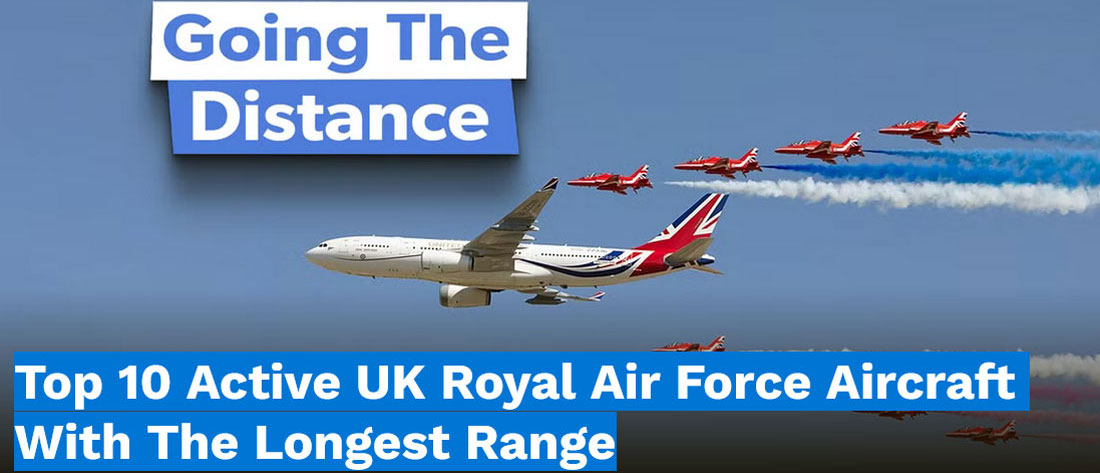
Airspeed: Mach 0.84
Operated by: Red Arrows
Inventory: 28
The BAe Hawk is one of the RAF's most iconic aircraft flying today. It is a fully aerobatic, low-wing, transonic, two-seat training aircraft used by the Red Arrows, the RAF Aerobatic Team. They are also equipped to an operational standing and are capable of undertaking a war role with the ability to carry AIM-9L Sidewinder air-to-air missiles. The Hawks are expected to remain in service until 2030.
The Hawk has a ferry range of around 1,565 miles. This is farther than the RAF's F-35Bs, which have a ferry range of around 900 miles, although the F-35Bs may be able to fly further when equipped with drop tanks. The F-35B is the STOVL variant of the F-35 family and has the shortest range of the three variants.
Operated by: Red Arrows
Inventory: 28
The BAe Hawk is one of the RAF's most iconic aircraft flying today. It is a fully aerobatic, low-wing, transonic, two-seat training aircraft used by the Red Arrows, the RAF Aerobatic Team. They are also equipped to an operational standing and are capable of undertaking a war role with the ability to carry AIM-9L Sidewinder air-to-air missiles. The Hawks are expected to remain in service until 2030.
The Hawk has a ferry range of around 1,565 miles. This is farther than the RAF's F-35Bs, which have a ferry range of around 900 miles, although the F-35Bs may be able to fly further when equipped with drop tanks. The F-35B is the STOVL variant of the F-35 family and has the shortest range of the three variants.
BAe Hawk T Mk1
Around 1,565 mile ferry range
Around 1,565 mile ferry range
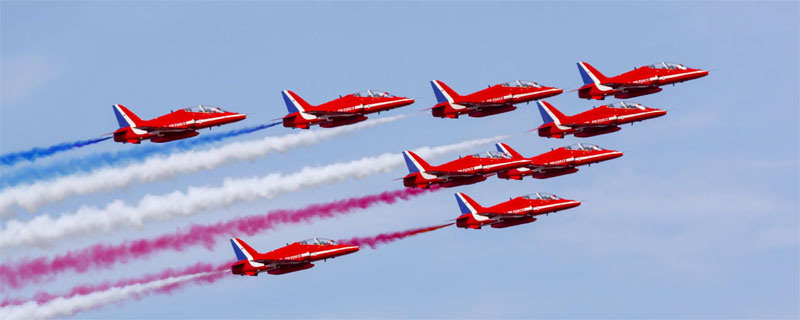

Typhoon FQR.Mk 4 (Eurofighter)
2,350-mile ferry range with three drop tanks
2,350-mile ferry range with three drop tanks
Airspeed: Mach 1.8
Operated by: 1 (F) Squadron, 12 Squadron, 29 Squadron, 3 (F) Squadron, 4 RAF Police & Security Squadron (Typhoon), 6 Squadron II (AC) Squadron, IX (B) Squadron Typhoon Display Team, XI (F) Squadron, XLI Test and Evaluation Squadron
Inventory: 107 (active)
The Eurofighter Typhoon is regarded as one of the most capable fourth-generation fighter jets in service today. It is built by a European consortium made up of the United Kingdom, Germany, Italy, and Spain. In RAF service, they serve alongside the stealthy F-35B Lightning II; the Typhoon is known as the 'thug' and the F-35B as the 'assassin.'
The Typhoon was initially deployed in the air-to-air role and was developed to overmatch Soviet fighters. Now the aircraft is a multirole fighter with a potent capability set. The RAF states, "Although Typhoon has flown precision attack missions in all its combat deployments to date, its most essential role remains the provision of quick reaction alert (QRA) for UK and Falkland Islands airspace." They have a range of 1,800 miles or a combat range of around 863 miles in a ground hi-lo-hi role or a 373-mile ground attack lo-lo-lo role. The ferry range with 3 drop tanks is 2,350 miles.
Operated by: 1 (F) Squadron, 12 Squadron, 29 Squadron, 3 (F) Squadron, 4 RAF Police & Security Squadron (Typhoon), 6 Squadron II (AC) Squadron, IX (B) Squadron Typhoon Display Team, XI (F) Squadron, XLI Test and Evaluation Squadron
Inventory: 107 (active)
The Eurofighter Typhoon is regarded as one of the most capable fourth-generation fighter jets in service today. It is built by a European consortium made up of the United Kingdom, Germany, Italy, and Spain. In RAF service, they serve alongside the stealthy F-35B Lightning II; the Typhoon is known as the 'thug' and the F-35B as the 'assassin.'
The Typhoon was initially deployed in the air-to-air role and was developed to overmatch Soviet fighters. Now the aircraft is a multirole fighter with a potent capability set. The RAF states, "Although Typhoon has flown precision attack missions in all its combat deployments to date, its most essential role remains the provision of quick reaction alert (QRA) for UK and Falkland Islands airspace." They have a range of 1,800 miles or a combat range of around 863 miles in a ground hi-lo-hi role or a 373-mile ground attack lo-lo-lo role. The ferry range with 3 drop tanks is 2,350 miles.

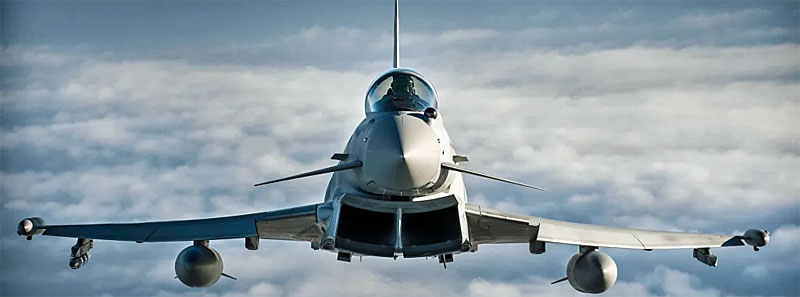
Shadow R1
Max range of 2,660 miles
Max range of 2,660 miles
Airspeed: 245 knots (cruising)
Operated by: 14 Squadron, 54 Squadron
Inventory: 6 expanding to 8
The Shadow R1 is the RAF military designation for the modified Beechcraft King Air 350CER aircraft. The RAF selected the King Air 350 as a special missions platform against an urgent need to improve intelligence gathering in Afghanistan. Initially, the RAF acquired four King Airs under the Urgent Operational Requirement and later expanded the fleet to six Shadow R1. This is to be further expanded to eight.
According to the RAF, through its combination of sensors, the Shadow contributes to the comprehensive intelligence gathering of the RAF's ISTAR Force. It is particularly valuable to ground commanders. Beechcraft King Air A350 ERs have a normal range of around 2,160 miles, but they have a maximum range of 2,660 miles.
Operated by: 14 Squadron, 54 Squadron
Inventory: 6 expanding to 8
The Shadow R1 is the RAF military designation for the modified Beechcraft King Air 350CER aircraft. The RAF selected the King Air 350 as a special missions platform against an urgent need to improve intelligence gathering in Afghanistan. Initially, the RAF acquired four King Airs under the Urgent Operational Requirement and later expanded the fleet to six Shadow R1. This is to be further expanded to eight.
According to the RAF, through its combination of sensors, the Shadow contributes to the comprehensive intelligence gathering of the RAF's ISTAR Force. It is particularly valuable to ground commanders. Beechcraft King Air A350 ERs have a normal range of around 2,160 miles, but they have a maximum range of 2,660 miles.

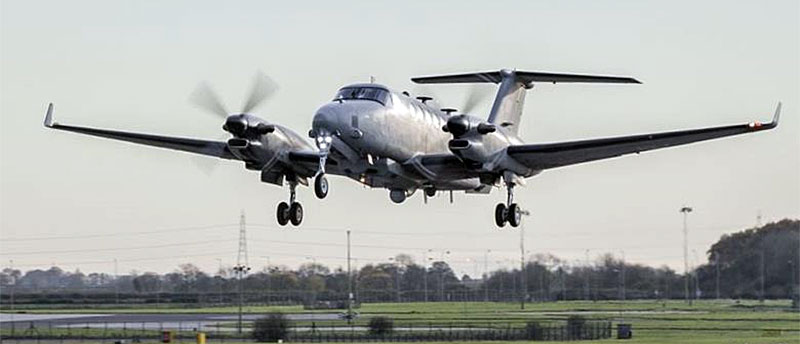
E-7 Wedgetail AEW Mk1
Max range of 2,660 miles
Max range of 2,660 miles
Airspeed: 460 knots (cruising)
Operated by: 8 Squadron (future)
Inventory: 3 on order with plans to increase to 5
The E-7 Wedgetail was developed by the United States for the Royal Australian Air Force. However, the aircraft has become a popular AWACS platform, with the Royal Air Force and other US allies buying it. The US Air Force is also purchasing large numbers of them to replace its aging fleet of E-3 Sentries. They have a range of over 3,450 miles and are based on the Boeing 737 passenger jet.
The RAF has three Wedgetails on order and these are expected to be delivered in 2025. In September 2024, Simple Flying reported that Boeing had completed the first test flight for the first British Wedgetail . They provide 5th Generation Airborne Early Warning and Control capability with a Multi-role Electronically Scanned Array.
Operated by: 8 Squadron (future)
Inventory: 3 on order with plans to increase to 5
The E-7 Wedgetail was developed by the United States for the Royal Australian Air Force. However, the aircraft has become a popular AWACS platform, with the Royal Air Force and other US allies buying it. The US Air Force is also purchasing large numbers of them to replace its aging fleet of E-3 Sentries. They have a range of over 3,450 miles and are based on the Boeing 737 passenger jet.
The RAF has three Wedgetails on order and these are expected to be delivered in 2025. In September 2024, Simple Flying reported that Boeing had completed the first test flight for the first British Wedgetail . They provide 5th Generation Airborne Early Warning and Control capability with a Multi-role Electronically Scanned Array.

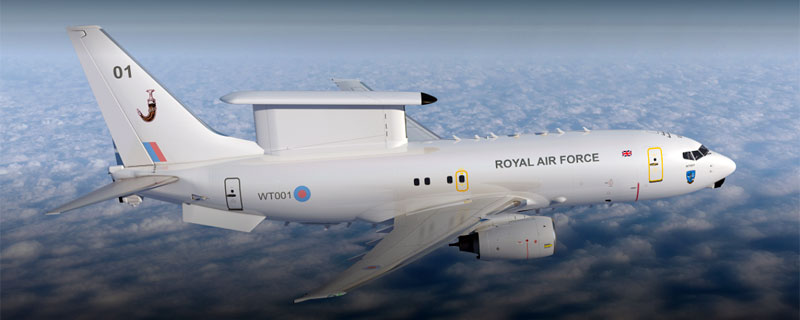

RC-135W Rivet Joint
Around 3,900 miles range
Around 3,900 miles range
Airspeed: 470 knots
Operated by: 51 Squadron, 54 Squadron
Inventory: 3
The Boeing RC-135W Rivet Joint is a large reconnaissance aircraft based on the C-135 Stratolifter dedicated to electronic surveillance. Its advanced sensors are designed to 'soak up' electronic emissions from communications, radar, and other systems. The aircraft is found in both the US Air Force and the Royal Air Force.
For the purposes of sensor and system upgrades, the three British Rivet Joints are considered an extension of the US Air Force's fleet. This ensures they remain up to date. The RAF says, "RC-135W Rivet Joint employs multidiscipline Weapons System Officer (WSO) and Weapons System Operator (WSOp) specialists whose mission is to survey elements of the electromagnetic spectrum in order to derive intelligence for commanders."
Operated by: 51 Squadron, 54 Squadron
Inventory: 3
The Boeing RC-135W Rivet Joint is a large reconnaissance aircraft based on the C-135 Stratolifter dedicated to electronic surveillance. Its advanced sensors are designed to 'soak up' electronic emissions from communications, radar, and other systems. The aircraft is found in both the US Air Force and the Royal Air Force.
For the purposes of sensor and system upgrades, the three British Rivet Joints are considered an extension of the US Air Force's fleet. This ensures they remain up to date. The RAF says, "RC-135W Rivet Joint employs multidiscipline Weapons System Officer (WSO) and Weapons System Operator (WSOp) specialists whose mission is to survey elements of the electromagnetic spectrum in order to derive intelligence for commanders."
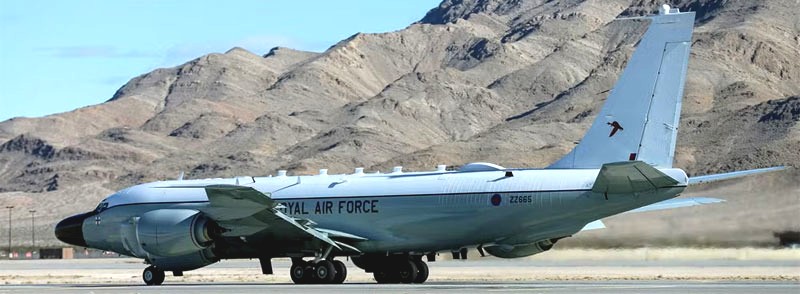

Poseidon MPA1 (P-8A)
4,500-mile ferry range
4,500-mile ferry range
Airspeed: 490 knots
Operated by: 120 Squadron, 201 Squadron, 42 (TB) Squadron
Inventory: 9
The Boeing P-8A Poseidon is the world's most common maritime patrol aircraft and has both anti-surface and anti-submarine capabilities. They also serve surveillance and search and rescue missions. They were developed by the United States Navy to replace its aging fleet of P-3 Orion aircraft based on the old Lockheed L-188 Electra aircraft.
The RAF has a fleet of nine P-8A Poseidons in service, and these feature an APY-10 radar with modes for high-resolution mapping, an acoustic sensor system, and more. They carry torpedoes for engaging sub-surface targets. Based on the Boeing 737 Next Generation airliner, they have a maximum speed of 490 knots and a ferry range of 4,500 miles.
Operated by: 120 Squadron, 201 Squadron, 42 (TB) Squadron
Inventory: 9
The Boeing P-8A Poseidon is the world's most common maritime patrol aircraft and has both anti-surface and anti-submarine capabilities. They also serve surveillance and search and rescue missions. They were developed by the United States Navy to replace its aging fleet of P-3 Orion aircraft based on the old Lockheed L-188 Electra aircraft.
The RAF has a fleet of nine P-8A Poseidons in service, and these feature an APY-10 radar with modes for high-resolution mapping, an acoustic sensor system, and more. They carry torpedoes for engaging sub-surface targets. Based on the Boeing 737 Next Generation airliner, they have a maximum speed of 490 knots and a ferry range of 4,500 miles.
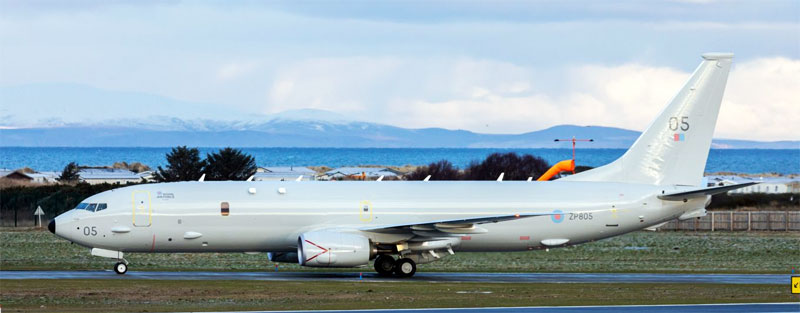

Airbus A400M Atlas
Over 4,710-mile range
Over 4,710-mile range
Airspeed: 400 knots
Operated by: 206 Test and Evaluation Squadron, 30 Squadron, LXX Squadron, XXIV Squadron
Inventory: 22
The A400M Atlas is the largest military aircraft currently in production by Airbus and the Europeans. The Atlas is a tactical/strategic airlifter able to carry a 37-tonne payload over 2,300 miles to remote airfields, including semi-prepared strips. In contrast to the jet-powered Super Galaxy and Globemaster, the Atlas is a turboprop.
The A400M is able to accommodate as many as 116 fully-equipped troops or transport military equipment like vehicles, helicopters (including the Chinook), and more. A total of 130 A400M Atlas aircraft have been built with Germany, France, Italy, and the United Kingdom as the main customers. The RAF has received all the 22 Atlas transports it ordered.
Operated by: 206 Test and Evaluation Squadron, 30 Squadron, LXX Squadron, XXIV Squadron
Inventory: 22
The A400M Atlas is the largest military aircraft currently in production by Airbus and the Europeans. The Atlas is a tactical/strategic airlifter able to carry a 37-tonne payload over 2,300 miles to remote airfields, including semi-prepared strips. In contrast to the jet-powered Super Galaxy and Globemaster, the Atlas is a turboprop.
The A400M is able to accommodate as many as 116 fully-equipped troops or transport military equipment like vehicles, helicopters (including the Chinook), and more. A total of 130 A400M Atlas aircraft have been built with Germany, France, Italy, and the United Kingdom as the main customers. The RAF has received all the 22 Atlas transports it ordered.
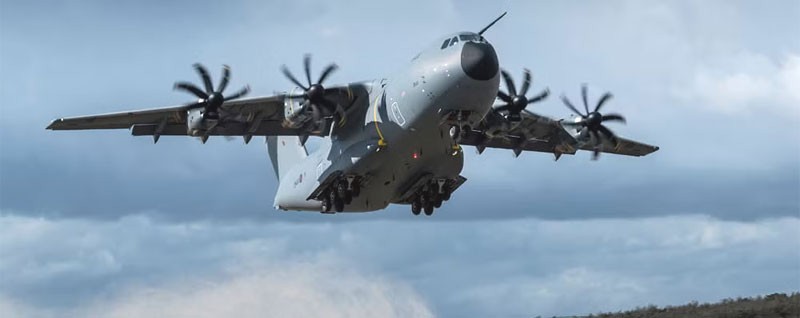

C-17 Globemaster III
Over 5,180-mile range with 100,000 lbs payload
Over 5,180-mile range with 100,000 lbs payload
Airspeed: 450 knots (at 28,000 feet)
Operated by: 99 Squadron, XXIV Squadron
Inventory: 8
The C-17 Globemaster III is the second-largest Western strategic airlift aircraft (after the C-5M Super Galaxy). It is capable of rapid, strategic delivery of troops and cargo anywhere in the world. They are able to transport 100,000 lbs of freight over 5,180 miles while flying at above 35,000 feet.
C-17s have also been designed to operate out of small and austere airfields and fly into runways as short as 3,500 feet long and just 90 feet wide. Boeing's production of C-17s has shut down, but there are some export markets reportedly interested in purchasing the airlifter, causing Boeing to ponder restarting production from time to time.
Operated by: 99 Squadron, XXIV Squadron
Inventory: 8
The C-17 Globemaster III is the second-largest Western strategic airlift aircraft (after the C-5M Super Galaxy). It is capable of rapid, strategic delivery of troops and cargo anywhere in the world. They are able to transport 100,000 lbs of freight over 5,180 miles while flying at above 35,000 feet.
C-17s have also been designed to operate out of small and austere airfields and fly into runways as short as 3,500 feet long and just 90 feet wide. Boeing's production of C-17s has shut down, but there are some export markets reportedly interested in purchasing the airlifter, causing Boeing to ponder restarting production from time to time.
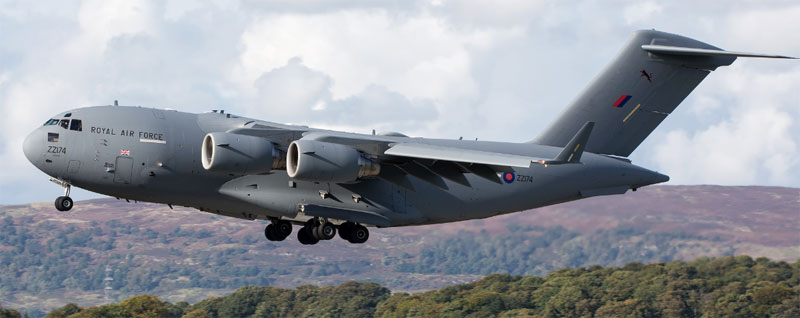

Envoy IV CC Mk 1
Over 5,450-mile range
Over 5,450-mile range
Airspeed: Mach 0.84–0.87
Operated by: XXXII Squadron
Inventory: 2
The RAF designated its two new Dassault 900LX aircraft as Envoy IV CC Mk1 . These were purchased to replace the RAF's aging BAe146 aircraft that retired in 2022. The role of these two military business jets is Command Support Air Transport (CSAT), which is the transport of high-ranking military personnel and small items of mission-critical freight.
The RAF notes, "A recapitalised CSAT fleet, based on a modern and efficient medium-sized business aircraft, will reduce carbon emissions compared to delivering CSAT with previous fleet of BAe 146 aircraft or repurposing larger aircraft. High-quality synthetic training facilities will minimise the requirement for live training sorties and the associated carbon emissions."
Operated by: XXXII Squadron
Inventory: 2
The RAF designated its two new Dassault 900LX aircraft as Envoy IV CC Mk1 . These were purchased to replace the RAF's aging BAe146 aircraft that retired in 2022. The role of these two military business jets is Command Support Air Transport (CSAT), which is the transport of high-ranking military personnel and small items of mission-critical freight.
The RAF notes, "A recapitalised CSAT fleet, based on a modern and efficient medium-sized business aircraft, will reduce carbon emissions compared to delivering CSAT with previous fleet of BAe 146 aircraft or repurposing larger aircraft. High-quality synthetic training facilities will minimise the requirement for live training sorties and the associated carbon emissions."
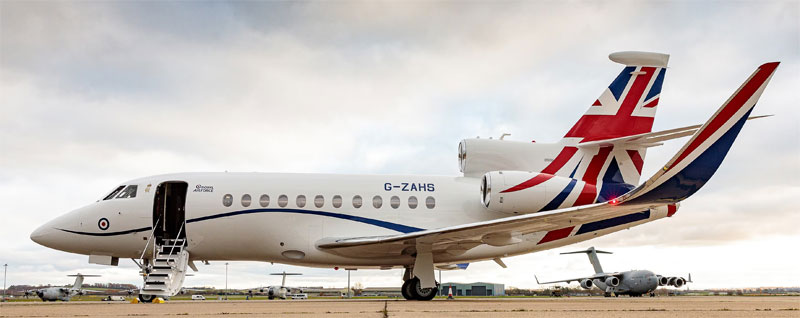

Voyager A330 MRTT
9,200 miles range at maximum fuel
9,200 miles range at maximum fuel
Airspeed: Mach 0.86
Operated by: 10 Squadron, 101 Squadron
Inventory: 9 (plus five operated by AirTanker Services for 14 total)
The Voyager is the RAF's only air-to-air refueling aircraft, but it is often prominently used. The United States dominates the world of aerial refueling, boasting an astonishing 75% of the world's total fleet. As with other tankers, the Voyager can also be used as a strategic air transport and can carry up to 291 personnel, plus room for freight. They have a mission range delivering around 132,000 lbs of fuel in five hours at 573 miles. Their maximum range with maximum fuel is 9,200 miles.
"Voyager" is the RAF name for the popular Airbus A330 MRTT (Multi Role Tanker Transport). The A330 MRTT is the most popular non-American tanker, with around 15 countries having placed orders for around 82 aircraft (of which around 62 have been delivered). It competes with the Boeing KC-46A Pegasus on the export market.
Operated by: 10 Squadron, 101 Squadron
Inventory: 9 (plus five operated by AirTanker Services for 14 total)
The Voyager is the RAF's only air-to-air refueling aircraft, but it is often prominently used. The United States dominates the world of aerial refueling, boasting an astonishing 75% of the world's total fleet. As with other tankers, the Voyager can also be used as a strategic air transport and can carry up to 291 personnel, plus room for freight. They have a mission range delivering around 132,000 lbs of fuel in five hours at 573 miles. Their maximum range with maximum fuel is 9,200 miles.
"Voyager" is the RAF name for the popular Airbus A330 MRTT (Multi Role Tanker Transport). The A330 MRTT is the most popular non-American tanker, with around 15 countries having placed orders for around 82 aircraft (of which around 62 have been delivered). It competes with the Boeing KC-46A Pegasus on the export market.
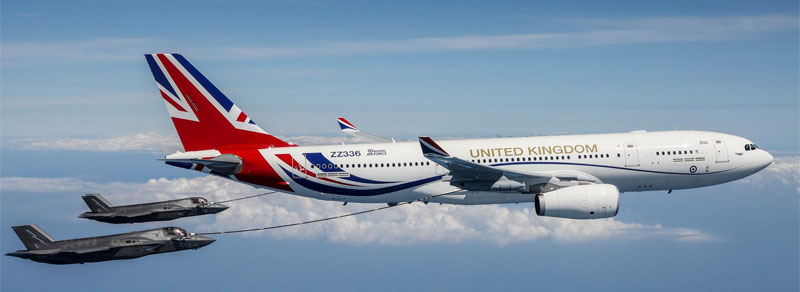

From: Ian Russell, Algarve
Subject: U/S Down Route
Hi Tony,
Mine is a somewhat hazy recollection (age, not alcohol), of going U/S down route, involving a C130 task I was on via Bermuda in the early 1980's.
We arrived at Bermuda and (apparently) our Fat Albert had suffered a technical problem. So, we invoked the services of the local RN rep. Soon we were accommodated in the Hamilton Princess Hotel for a night or two until such time as our aircraft became serviceable by means of a spare being sent out on civair. What a lovely hotel, but with quite a strict dress code at the time.
Cut a long story short, I didn’t have a jacket to wear in the hotel bar (unlike most of my team who must have known about the distinct possibility of going U/S in Bermuda). So, I hired a taxi back to the aircraft and opened Fat Albert with the (secret location) key and retrieved my jacket. It was only then that I discovered that my taxi driver was completely pi$$ed on Bacardi rum. Fortunately, we made it back.
Next day we all decided to explore Hamilton. The majority decided to explore the many bars, but three of us wandered around and found the local fire station where we got chatting with some of the firefighters. Their ‘tender’ was a magnificent old style American ladder type vehicle. We had a great time that afternoon riding around Hamilton as guests on the tender.
That evening, we met a crowd of American girls who had just passed their exams and were on something like a ‘spring break’ post exam holiday. They loved the way we called our C130 an ‘aircraft’ rather than an airplane. We were invited to a beach party next evening. However, the spare arrived earlier than expected and we had to depart before any beach parties.
The worst part? We had such a heavy load that we had to circle to gain height and had full view of the beach parties taking place below us… without us!
Thanks for your continued great work.
Ian
Subject: U/S Down Route
Hi Tony,
Mine is a somewhat hazy recollection (age, not alcohol), of going U/S down route, involving a C130 task I was on via Bermuda in the early 1980's.
We arrived at Bermuda and (apparently) our Fat Albert had suffered a technical problem. So, we invoked the services of the local RN rep. Soon we were accommodated in the Hamilton Princess Hotel for a night or two until such time as our aircraft became serviceable by means of a spare being sent out on civair. What a lovely hotel, but with quite a strict dress code at the time.
Cut a long story short, I didn’t have a jacket to wear in the hotel bar (unlike most of my team who must have known about the distinct possibility of going U/S in Bermuda). So, I hired a taxi back to the aircraft and opened Fat Albert with the (secret location) key and retrieved my jacket. It was only then that I discovered that my taxi driver was completely pi$$ed on Bacardi rum. Fortunately, we made it back.
Next day we all decided to explore Hamilton. The majority decided to explore the many bars, but three of us wandered around and found the local fire station where we got chatting with some of the firefighters. Their ‘tender’ was a magnificent old style American ladder type vehicle. We had a great time that afternoon riding around Hamilton as guests on the tender.
That evening, we met a crowd of American girls who had just passed their exams and were on something like a ‘spring break’ post exam holiday. They loved the way we called our C130 an ‘aircraft’ rather than an airplane. We were invited to a beach party next evening. However, the spare arrived earlier than expected and we had to depart before any beach parties.
The worst part? We had such a heavy load that we had to circle to gain height and had full view of the beach parties taking place below us… without us!
Thanks for your continued great work.
Ian


Number of British Forces Personnel Levels Revealed
he UK Armed Forces currently have a combined full-time trained strength of 127,036 personnel, according to the latest data from the Ministry of Defence.
In response to a written question from Carla Lockhart MP of the Democratic Unionist Party, Parliamentary Under-Secretary of State for Defence Luke Pollard directed attention to the most recent personnel statistics, published on the government’s website.
As of 1 January 2025, the UK Armed Forces’ Full-Time Trained Strength (FTTS) across all branches stood as follows:
Royal Navy & Royal Marines: 28,085 personnel
Army: 71,151 personnel
Royal Air Force: 27,800 personnel
Total Armed Forces: 127,036 personnel
Alongside full-time personnel, the UK’s reserve forces play a crucial role in national defence. According to the Ministry of Defence, the Trained Future Reserves 2020 Strength (FR20) numbers stand at:
Maritime Reserve: 2,610 personnel
Army Reserve: 23,897 personnel
Royal Air Force Reserve: 2,758 personnel
Total Reserves: 29,265 personnel
The latest personnel figures come as the UK Armed Forces continue efforts to modernise and address recruitment challenges. The Army has recently been working to stabilise numbers, while the Royal Navy and Royal Air Force are investing in new capabilities to maintain operational readiness.
The Ministry of Defence regularly reviews personnel levels, ensuring the UK remains prepared for emerging threats while meeting international commitments. These figures are updated quarterly and can be accessed via the government’s official statistics page.
ukdefencejournal.org.uk
In response to a written question from Carla Lockhart MP of the Democratic Unionist Party, Parliamentary Under-Secretary of State for Defence Luke Pollard directed attention to the most recent personnel statistics, published on the government’s website.
As of 1 January 2025, the UK Armed Forces’ Full-Time Trained Strength (FTTS) across all branches stood as follows:
Royal Navy & Royal Marines: 28,085 personnel
Army: 71,151 personnel
Royal Air Force: 27,800 personnel
Total Armed Forces: 127,036 personnel
Alongside full-time personnel, the UK’s reserve forces play a crucial role in national defence. According to the Ministry of Defence, the Trained Future Reserves 2020 Strength (FR20) numbers stand at:
Maritime Reserve: 2,610 personnel
Army Reserve: 23,897 personnel
Royal Air Force Reserve: 2,758 personnel
Total Reserves: 29,265 personnel
The latest personnel figures come as the UK Armed Forces continue efforts to modernise and address recruitment challenges. The Army has recently been working to stabilise numbers, while the Royal Navy and Royal Air Force are investing in new capabilities to maintain operational readiness.
The Ministry of Defence regularly reviews personnel levels, ensuring the UK remains prepared for emerging threats while meeting international commitments. These figures are updated quarterly and can be accessed via the government’s official statistics page.
ukdefencejournal.org.uk
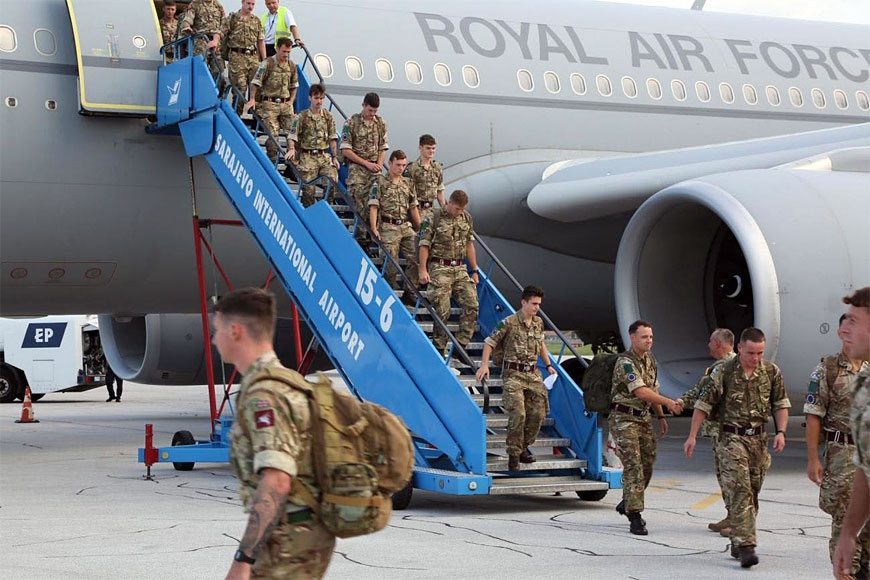

From: Mike Lefebvre, Burton, NB
Subject: The Peruvian Earthquake
Tony, thanks for the reminder of years gone by.
In 1970, I flew from Ottawa, where 436 SQN C130's were based (prior to the move to Trenton) to pick up a replacement Buffalo aircraft wing and take it to Lima, Peru. The Buffalos, based in Trenton, had been involved in evacuations from very high altitude landing areas following an earthquake and deadly avalanche. They were subjected to unprepared landing strips with approaches above the normal operating altitude. Buffalos are not a pressurized aircraft.
So, our Buffalo search and rescue aircraft were involved in evacuations for the duration of the recovery from the devastated areas. The dates are quite different from yours [Ed: I was involved with the aftermath; supplies for rebuilding].
Our itinerary:
23 June: Ottawa to Trenton to collect the wing and then on to Panama City for the night.
24 June: Panama City to Lima, Peru.
26 June: Lima to Panama City then on to Eglin AFB, Florida.
27 June: Eglin AFB to Trenton, then back home to Ottawa.
A total of 33 hours flying time
Thanks for your commitment to unite us.
Mike
Subject: The Peruvian Earthquake
Tony, thanks for the reminder of years gone by.
In 1970, I flew from Ottawa, where 436 SQN C130's were based (prior to the move to Trenton) to pick up a replacement Buffalo aircraft wing and take it to Lima, Peru. The Buffalos, based in Trenton, had been involved in evacuations from very high altitude landing areas following an earthquake and deadly avalanche. They were subjected to unprepared landing strips with approaches above the normal operating altitude. Buffalos are not a pressurized aircraft.
So, our Buffalo search and rescue aircraft were involved in evacuations for the duration of the recovery from the devastated areas. The dates are quite different from yours [Ed: I was involved with the aftermath; supplies for rebuilding].
Our itinerary:
23 June: Ottawa to Trenton to collect the wing and then on to Panama City for the night.
24 June: Panama City to Lima, Peru.
26 June: Lima to Panama City then on to Eglin AFB, Florida.
27 June: Eglin AFB to Trenton, then back home to Ottawa.
A total of 33 hours flying time
Thanks for your commitment to unite us.
Mike

RAF Brize Norton Nightshoot
RAF Brize Norton hosted a small evening photoshoot at the beginning of March. The event organised by the station and Threshold.aero was held to raise funds for the Royal Air Forces Association, one of the principal charities supporting the RAF community. The shoot saw all three of Brize Norton’s operational types arranged for the shoot plus some special guests from the wider support trades at the base.
Conditions for the photoshoot could not have been better with a sunny afternoon giving way to the most spectacular sunset enhanced enormously by the bright Moon and planet Venus shining through the darkening sky. A welcome contribution came from the station’s fire department with a rather spectacular water and fire-retardant spraying equipment which left plenty of reflections on the apron!
Such an event could not have been achieved without the excellent and friendly support of RAF Brize Norton’s military and civilian personnel or indeed the Threshold.Aero team. I’m sure all the photographers went home happy and hope that plenty of funds were raised for the Royal Air Forces Association.
air-shows.org.uk
Conditions for the photoshoot could not have been better with a sunny afternoon giving way to the most spectacular sunset enhanced enormously by the bright Moon and planet Venus shining through the darkening sky. A welcome contribution came from the station’s fire department with a rather spectacular water and fire-retardant spraying equipment which left plenty of reflections on the apron!
Such an event could not have been achieved without the excellent and friendly support of RAF Brize Norton’s military and civilian personnel or indeed the Threshold.Aero team. I’m sure all the photographers went home happy and hope that plenty of funds were raised for the Royal Air Forces Association.
air-shows.org.uk

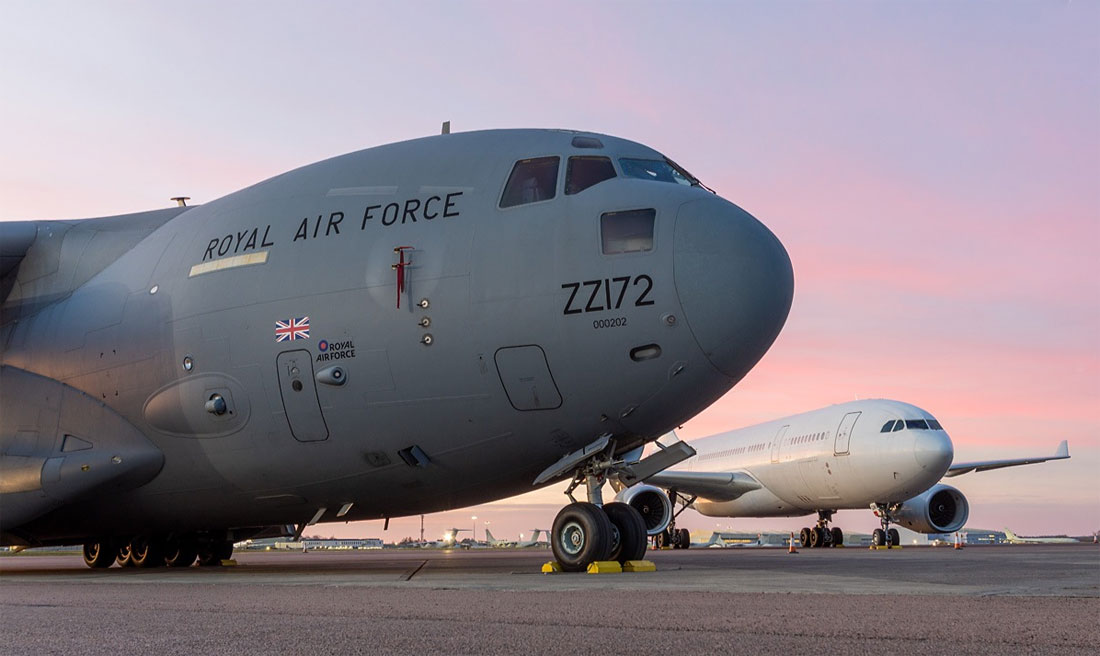
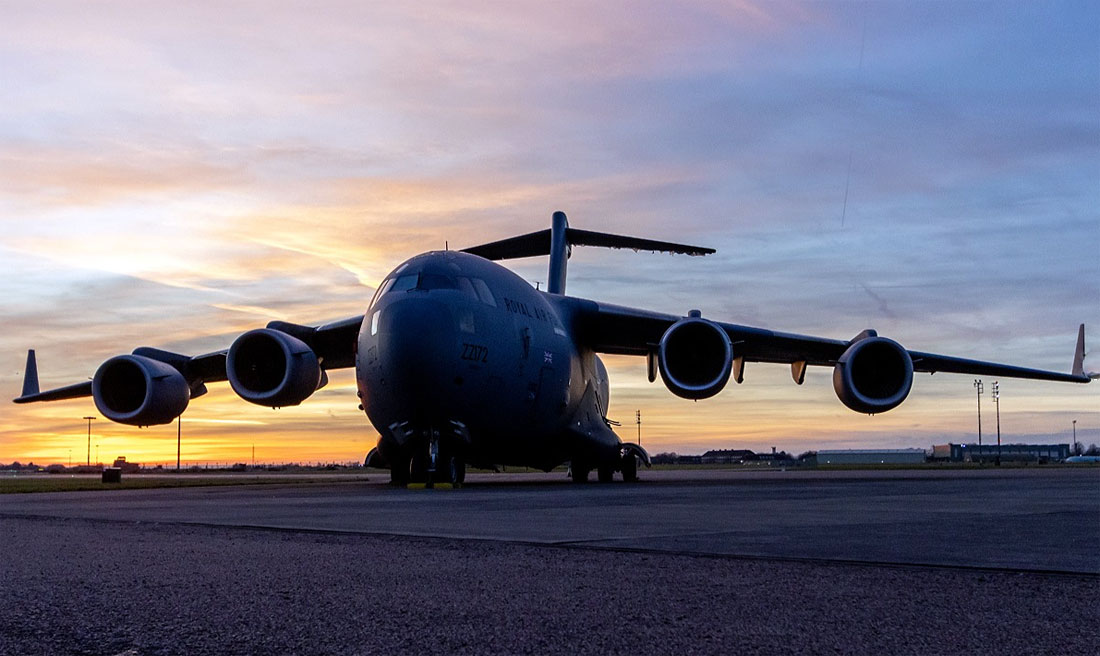
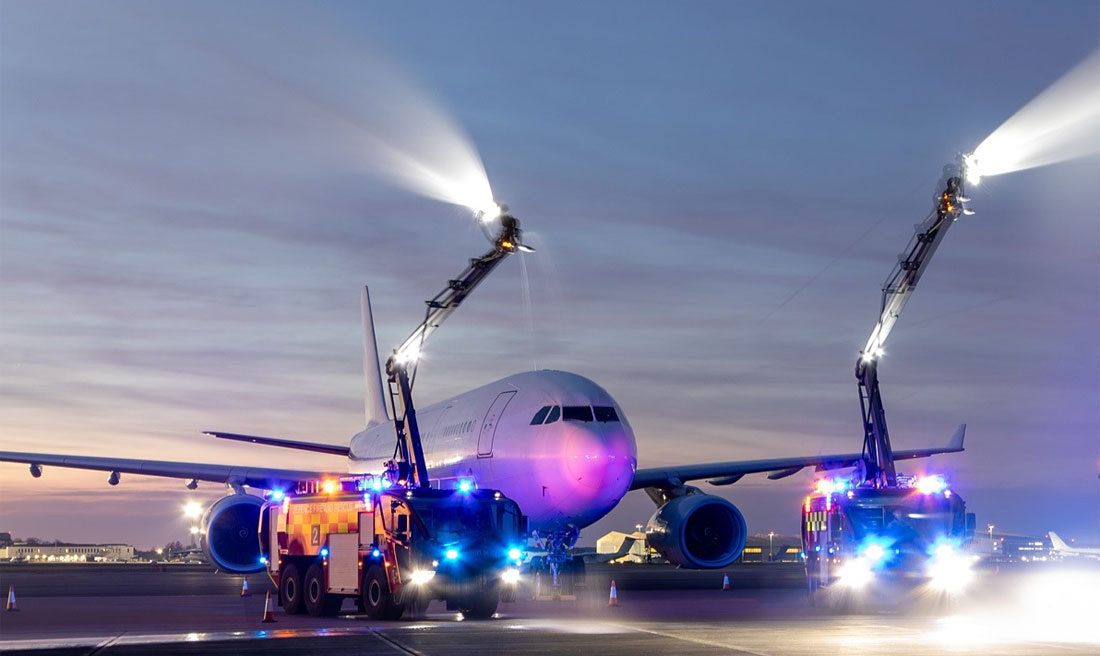
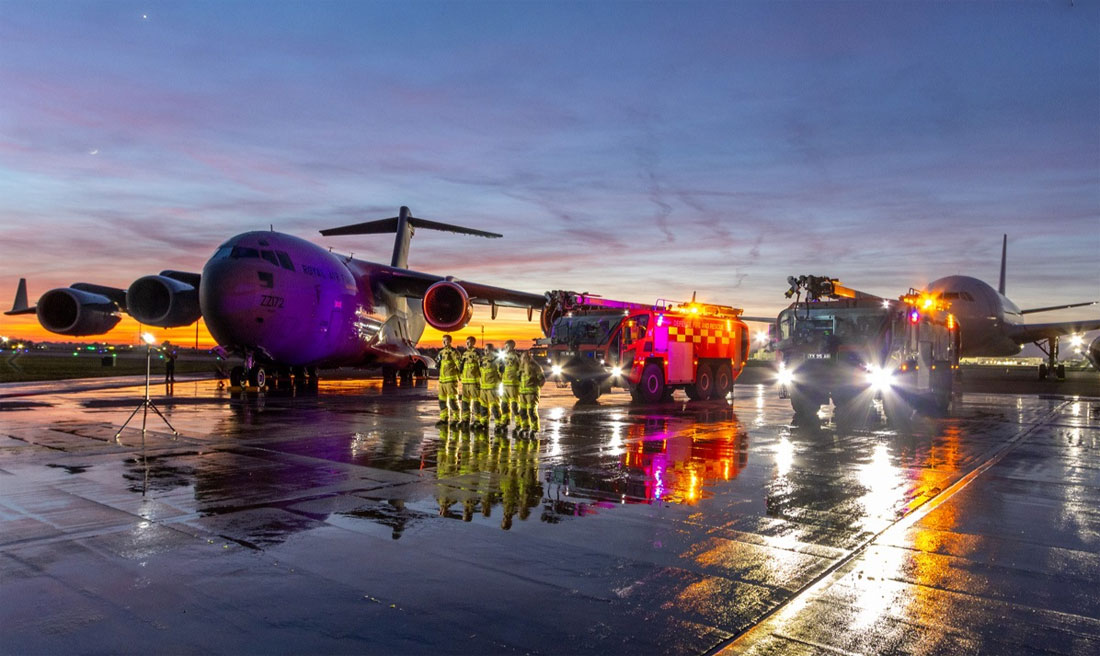
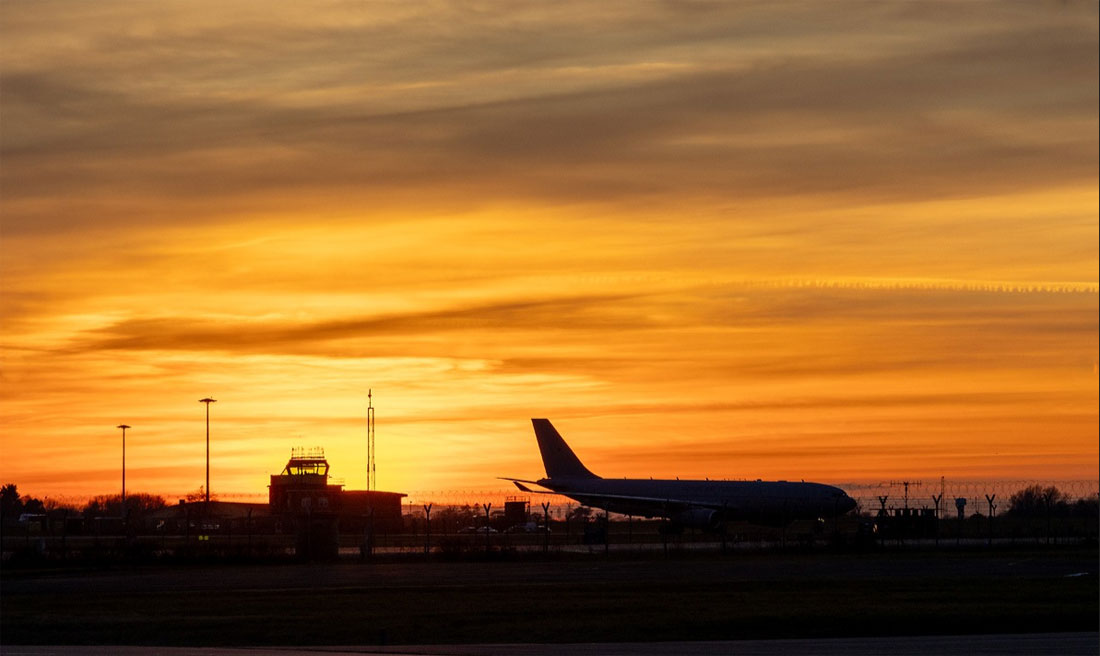
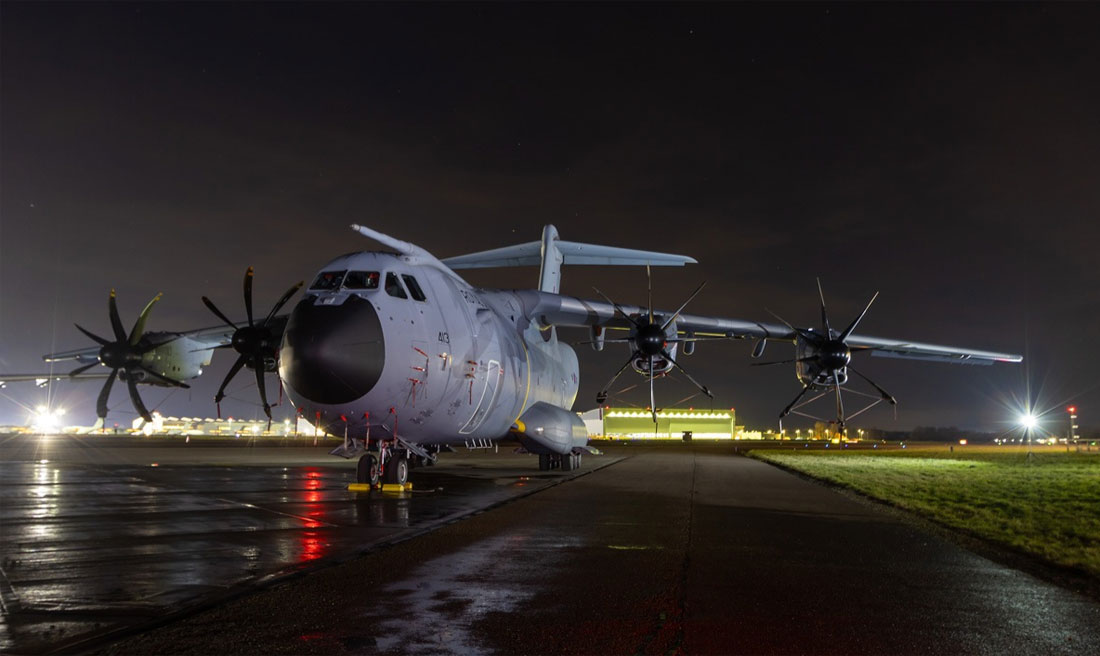
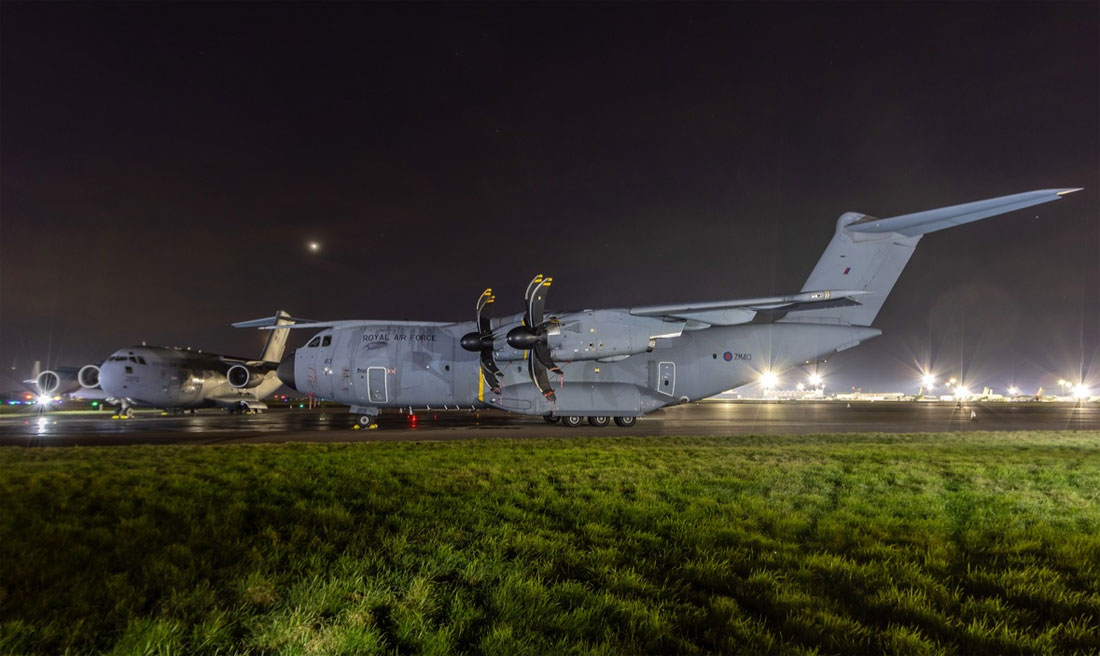
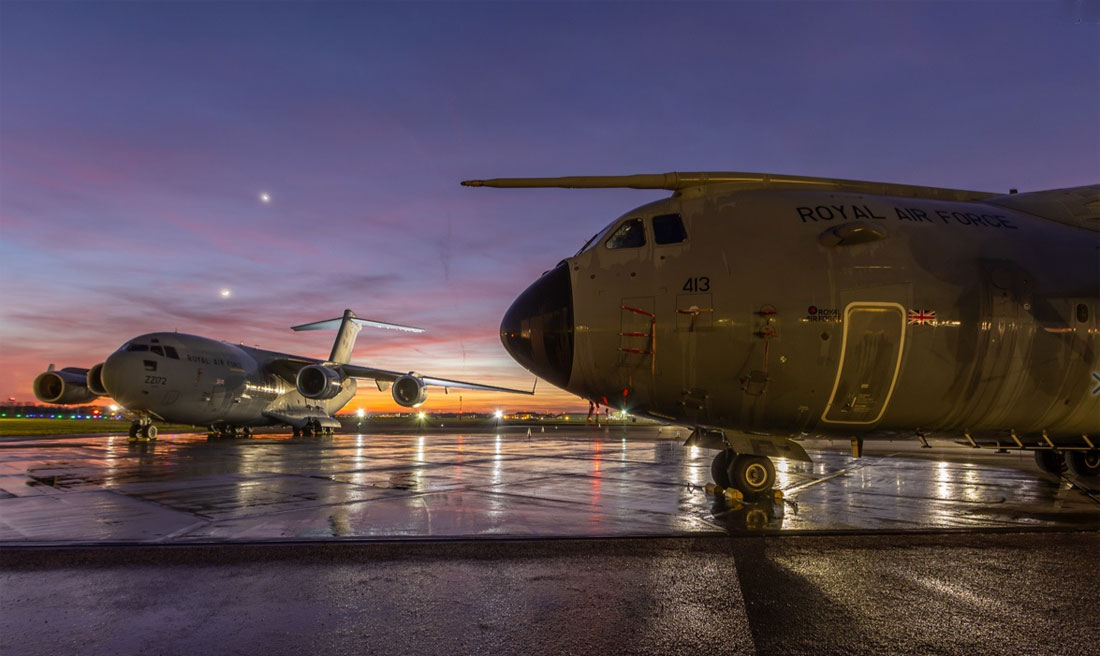
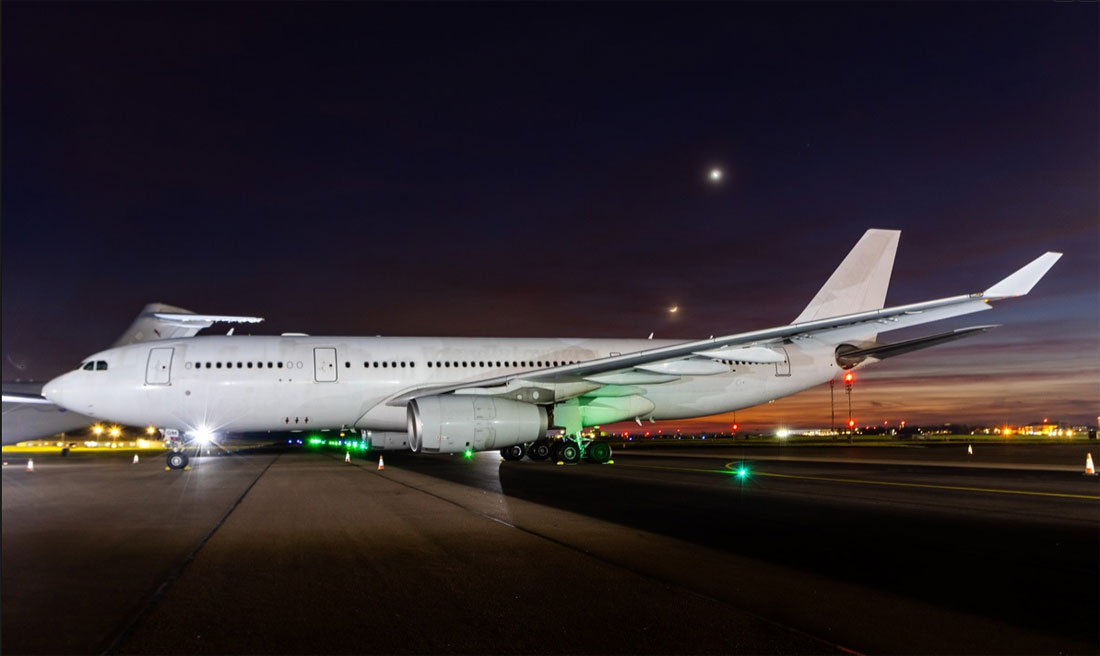

From: Barry Tappenden, Shortstown, Beds
Subject: Down Route and Unserviceable
Good Morning Tony,
April 1967 - The team was tasked to deliver some "goods" from Singapore to the newly constructed airfield in Kathmandu via Calcutta. Well, it wasn't the aircraft that went unserviceable but the dual aircrew.
When in Calcutta it would seem that all of the flight crew members indulged themselves on steak, salad and water, whereas one member of the ground crew and I had curry and beer. The outcome was that they all went down with "Calcutta tummy" when we reached Kathmandu. Everyone was confined to the hotel under the doctor's orders - except the two curry eaters!
The whole event lasted for 7 days where I and my fellow compatriot toured the exotic images of Kathmandu and that large mountain called Everest (no, we didn't get to climb it!) After the final member of the crew recovered, we headed back to Singapore avoiding Calcutta.
Best regards
Barry
Subject: Down Route and Unserviceable
Good Morning Tony,
April 1967 - The team was tasked to deliver some "goods" from Singapore to the newly constructed airfield in Kathmandu via Calcutta. Well, it wasn't the aircraft that went unserviceable but the dual aircrew.
When in Calcutta it would seem that all of the flight crew members indulged themselves on steak, salad and water, whereas one member of the ground crew and I had curry and beer. The outcome was that they all went down with "Calcutta tummy" when we reached Kathmandu. Everyone was confined to the hotel under the doctor's orders - except the two curry eaters!
The whole event lasted for 7 days where I and my fellow compatriot toured the exotic images of Kathmandu and that large mountain called Everest (no, we didn't get to climb it!) After the final member of the crew recovered, we headed back to Singapore avoiding Calcutta.
Best regards
Barry
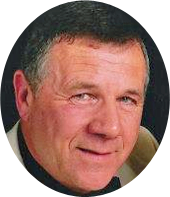
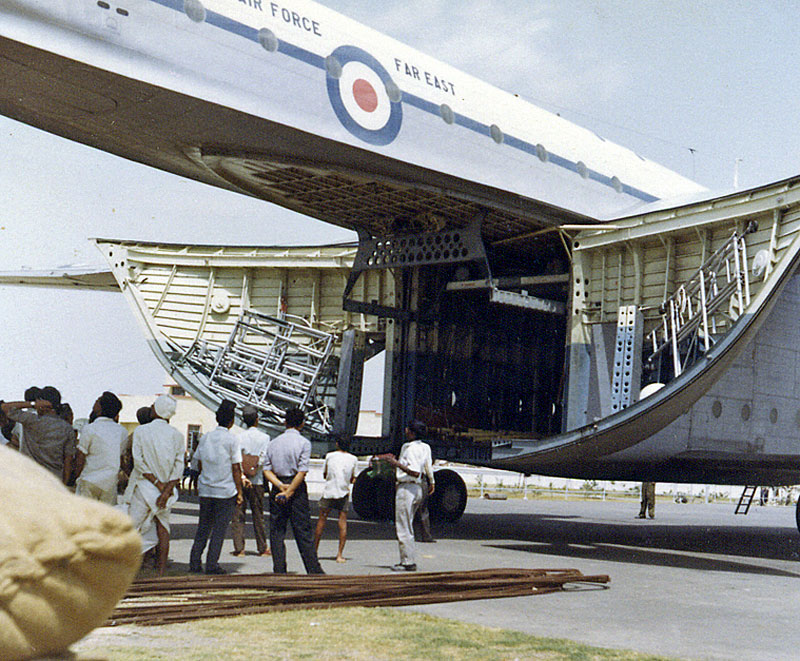

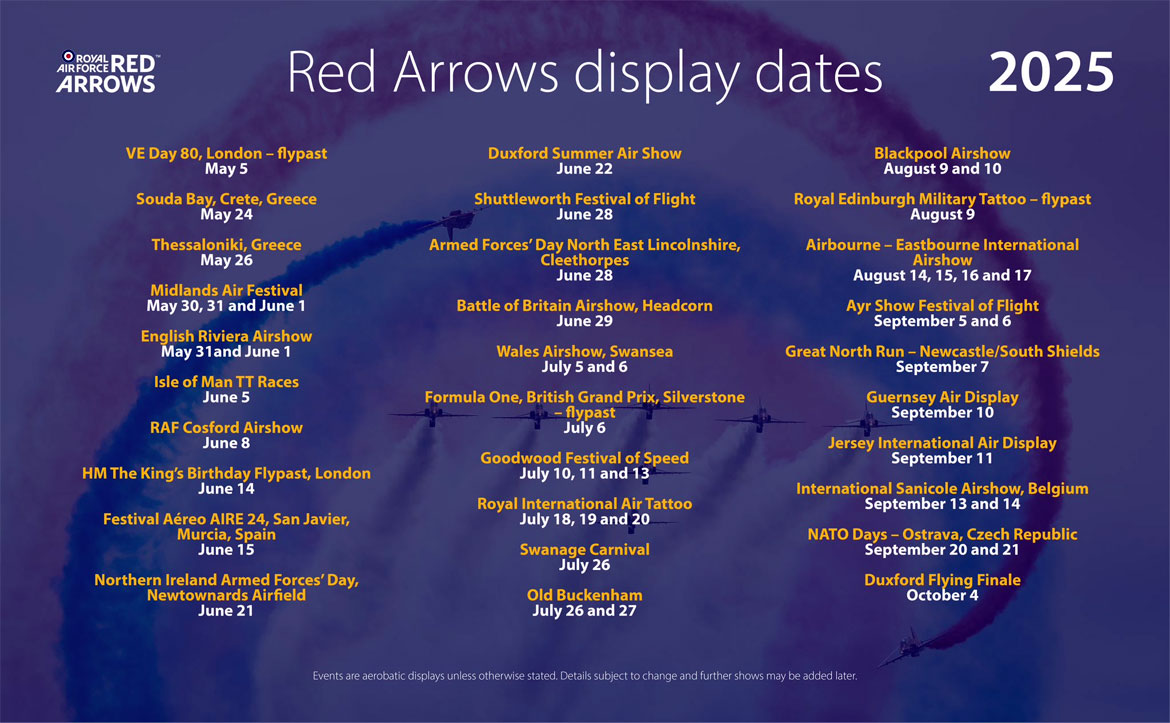
From: Jim Griffiths, Purton, Wilts
Subject: Brian Muir
Hi Tony,
I volunteer with Blind Veterans UK as a visitor and Brian has the rather dubious honour of having me as his home visitor - he lives in Cricklade, just down from me in Purton. He has been going through the mill a bit in the last few years; visual cortex disorder giving him poor eyesight, breathing difficulties and the poor bugger had to suffer 4 strokes last year leaving him wheelchair-bound and partially paralysed. For a feisty little Scot who loved his sport, he is finding his advancing years somewhat tedious to say the least. We chat most Tuesdays and I always try to get him to send me away with tasking to research some topic before my next visit. This time it was, "Jim, find me some MAMS photos of personalities around 1968".
Brian served at Cottesmore, Benson, Fairford as well as long spells in Cyprus and Germany, some as Administrator [to Movements at times] and as PA to the Station Commander in other roles. I've trawled your esteemed newsletter and noted down a few names from around the period, but rather than fire names at Brian, it would be great to show him an image or two. Anyway, your help would be gratefully received and Brian, no doubt, would send his very best to anyone out that there he may know.
Very best regards,
Jim Griffiths [SAC RAF Retd]
Ed: I just happen to have a few passport photos of squadron members from about that time period Jim (don't ask!), which you'll find in the following frames.
Subject: Brian Muir
Hi Tony,
I volunteer with Blind Veterans UK as a visitor and Brian has the rather dubious honour of having me as his home visitor - he lives in Cricklade, just down from me in Purton. He has been going through the mill a bit in the last few years; visual cortex disorder giving him poor eyesight, breathing difficulties and the poor bugger had to suffer 4 strokes last year leaving him wheelchair-bound and partially paralysed. For a feisty little Scot who loved his sport, he is finding his advancing years somewhat tedious to say the least. We chat most Tuesdays and I always try to get him to send me away with tasking to research some topic before my next visit. This time it was, "Jim, find me some MAMS photos of personalities around 1968".
Brian served at Cottesmore, Benson, Fairford as well as long spells in Cyprus and Germany, some as Administrator [to Movements at times] and as PA to the Station Commander in other roles. I've trawled your esteemed newsletter and noted down a few names from around the period, but rather than fire names at Brian, it would be great to show him an image or two. Anyway, your help would be gratefully received and Brian, no doubt, would send his very best to anyone out that there he may know.
Very best regards,
Jim Griffiths [SAC RAF Retd]
Ed: I just happen to have a few passport photos of squadron members from about that time period Jim (don't ask!), which you'll find in the following frames.
Does anyone know Sgt Brian Muir from around 1968?

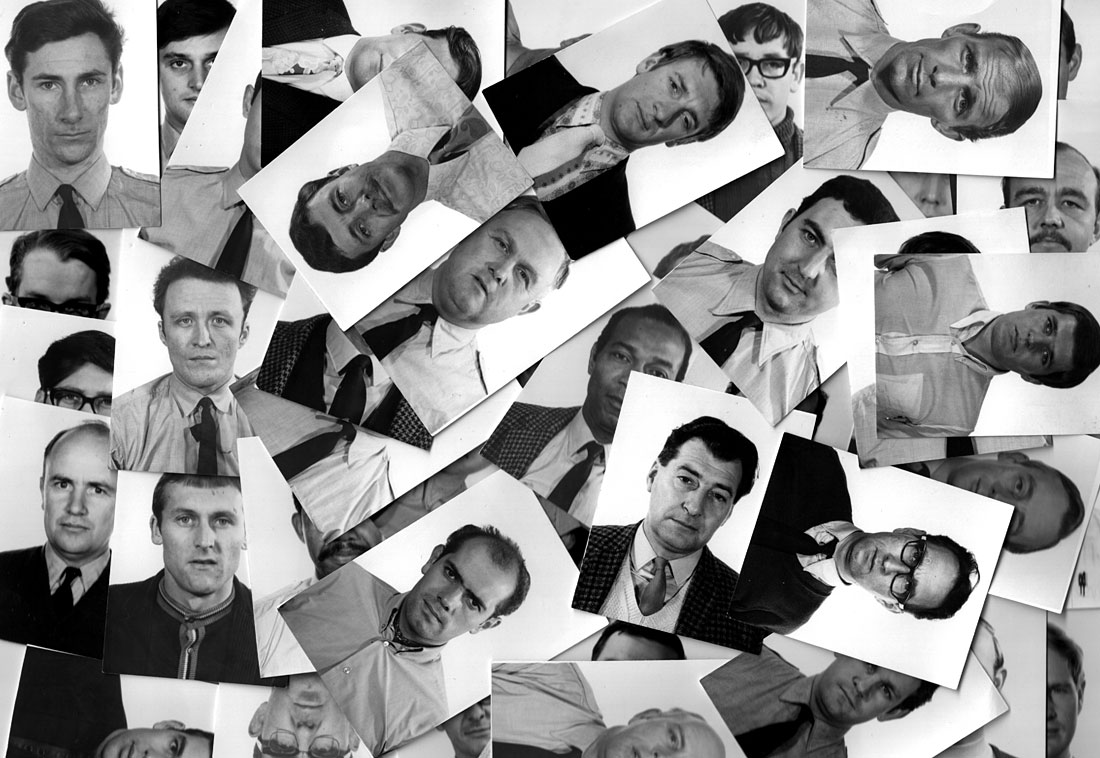
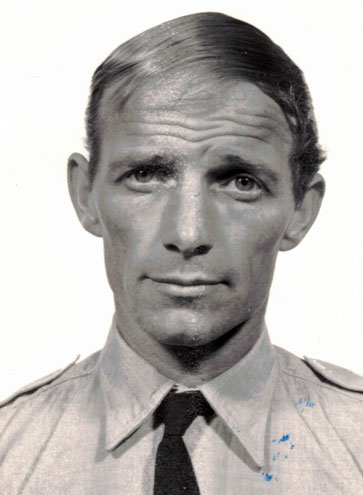
Tony Barrell
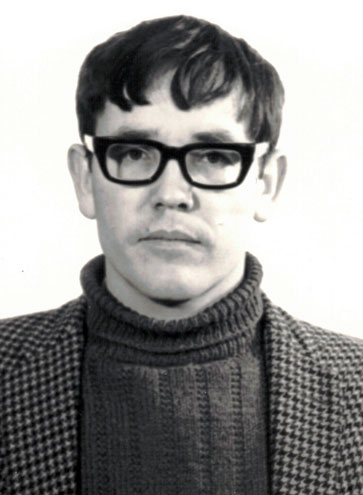
John Bell
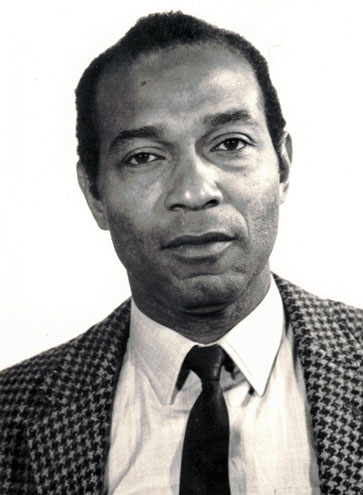
"Bernie" Bernard
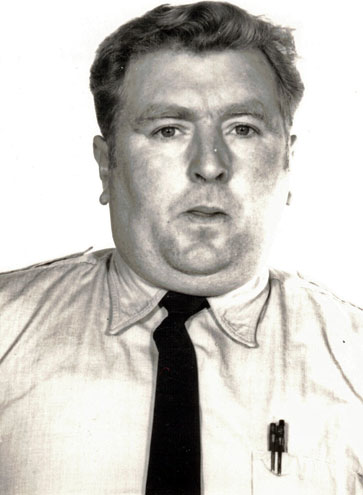
"Tommy" Blues
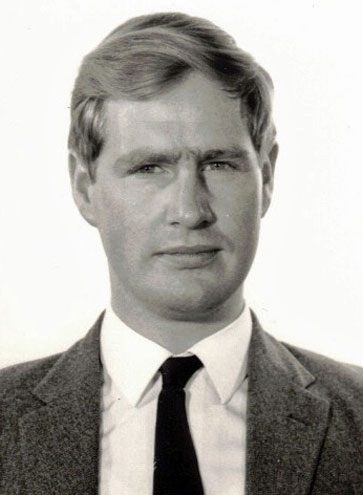
Brian Clucas
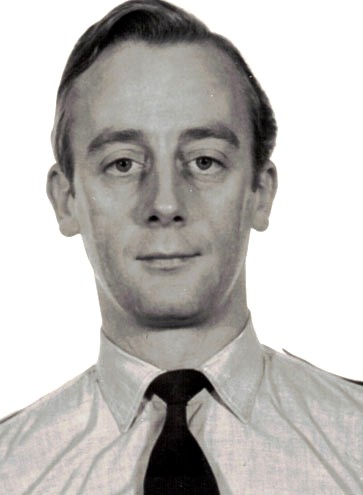
Charles Collier
Dave Constable
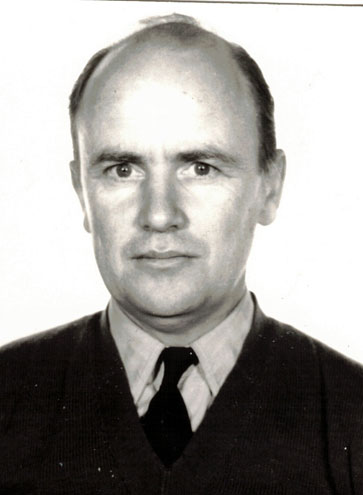
Merv Corke
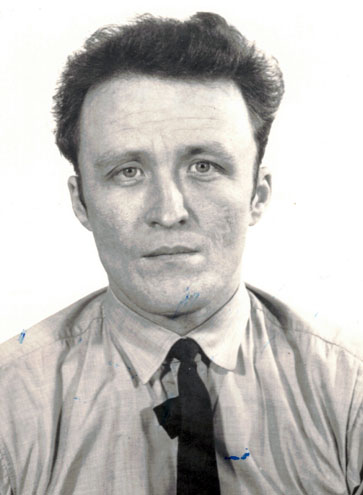
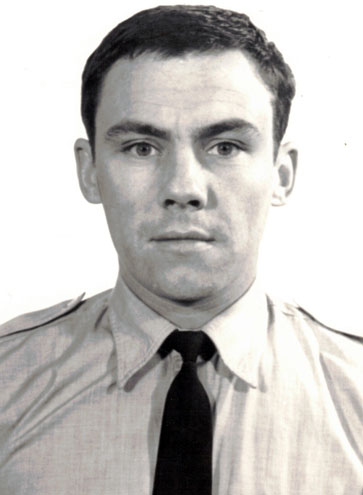
Hugh Curran
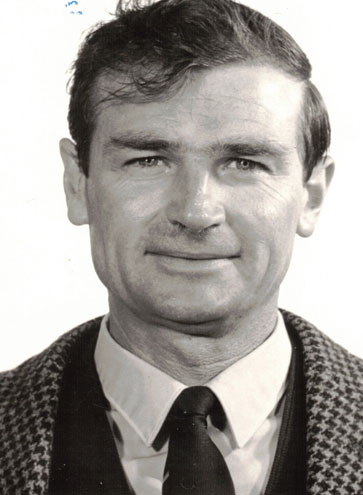
Chas Dalgleish
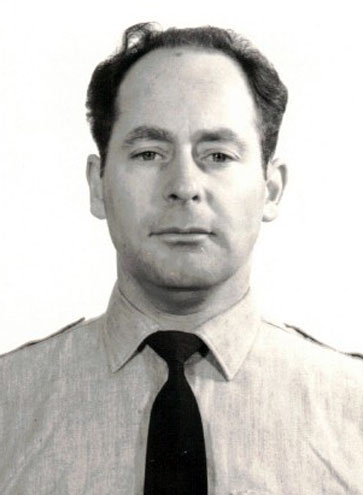
Dave Eggleton
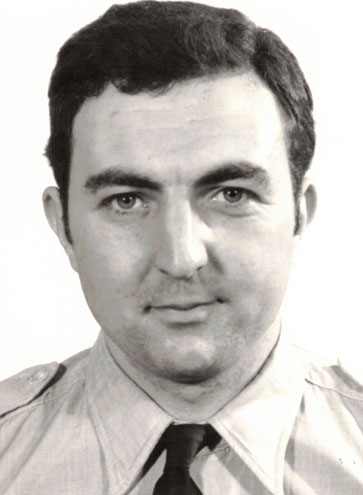
Keri Eynon
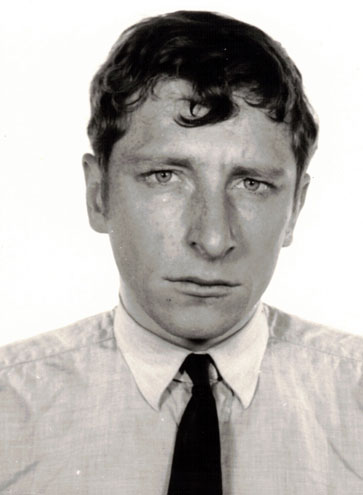
Bob Ford
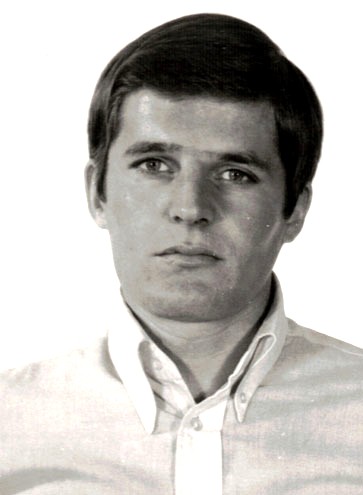
Tony Gale
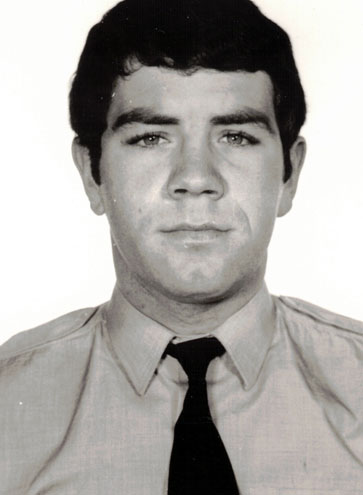
Jim Gallagher
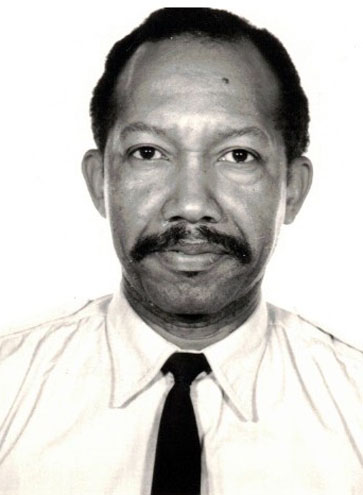
Ivan Gervais
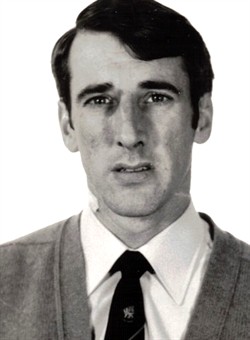
Gordon Gourdie
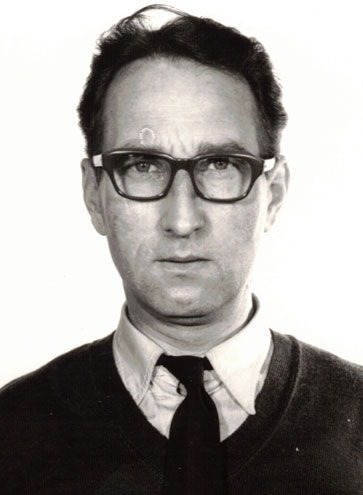
Rocky Hudson
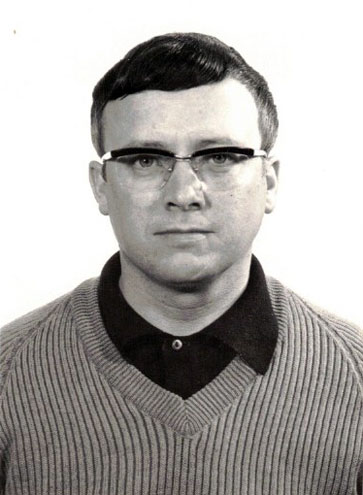
Ben Johnson
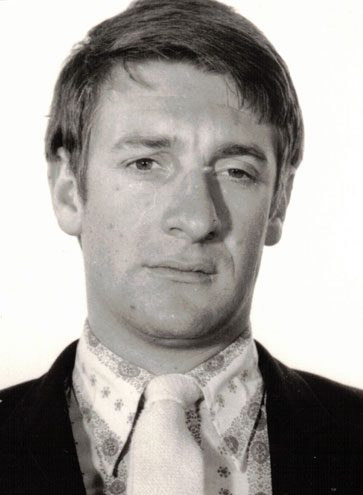
Gerry Keyworth
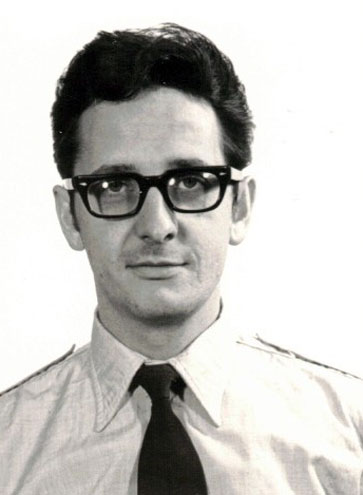
Fred Kitts
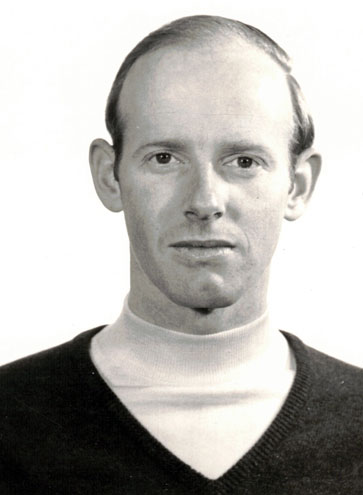
Paul Knight
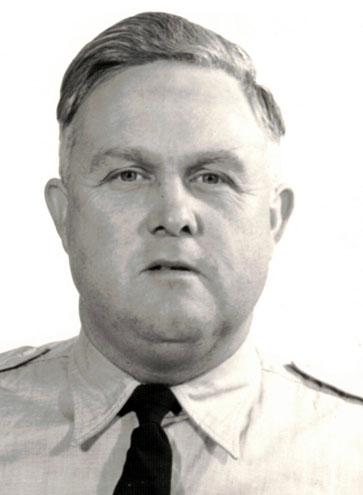
Tony "Chomper" Lamb
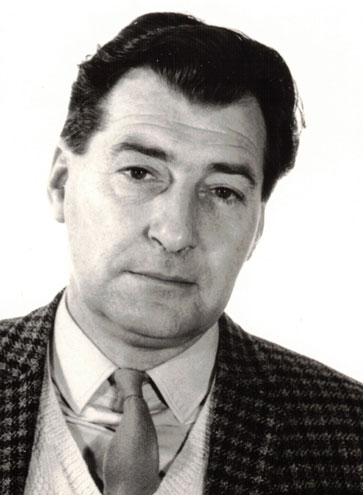
Eddie Leonard
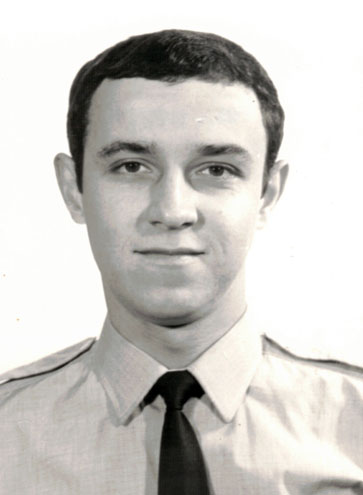
George Lynes
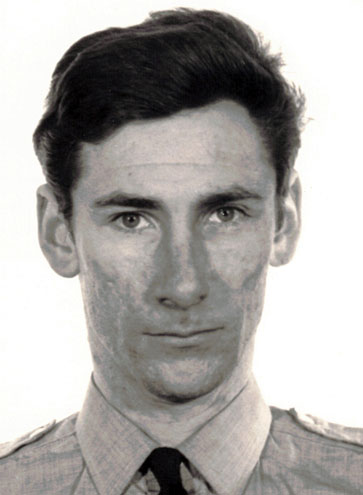
Harry Manning
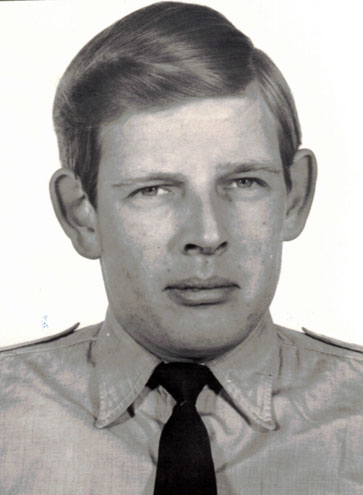
Jim Marchant
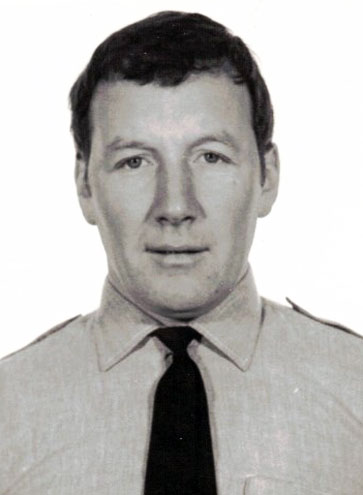
Ross McKerron
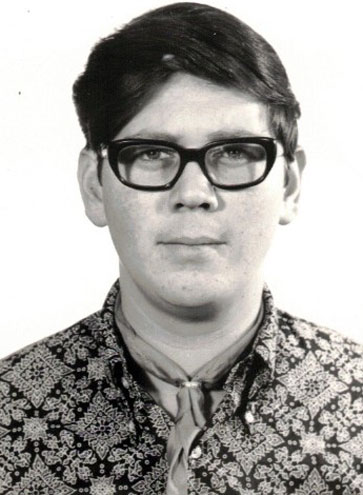
Ted "Inaps" Moore
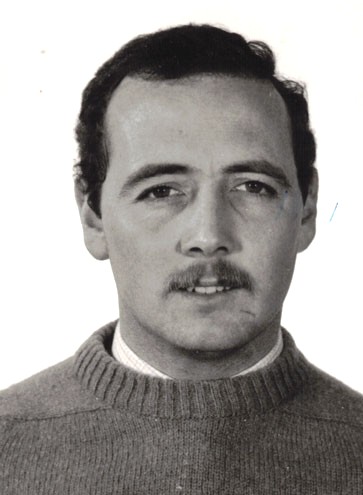
Tony Moore
Glenn Morton
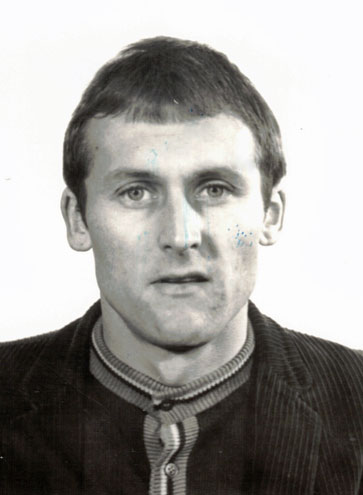
Eddie Mottram
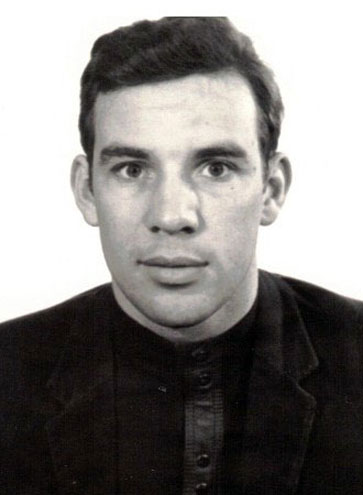
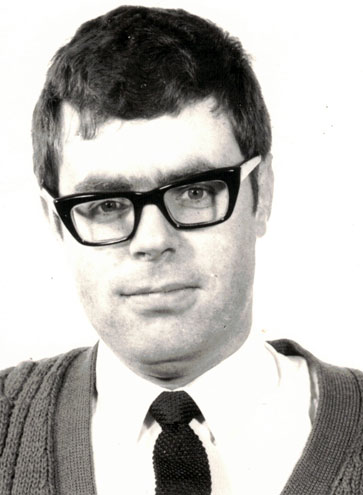
Alan "Polly" Parkin
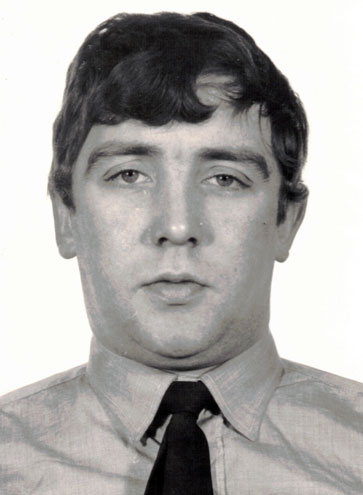
Alan "Boot" Pratt
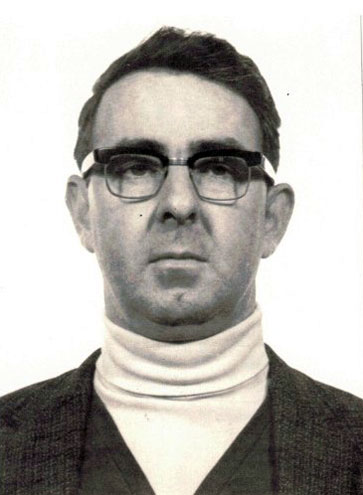
Tony Pyne
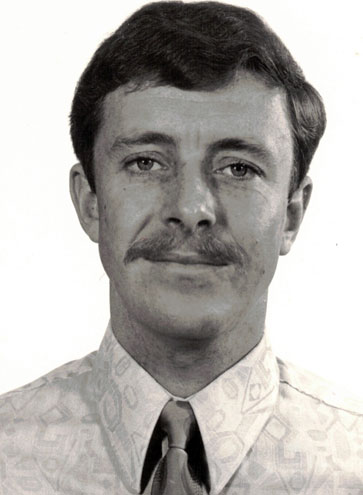
Steve Richmond
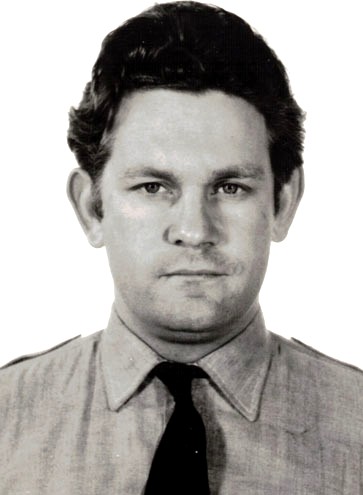
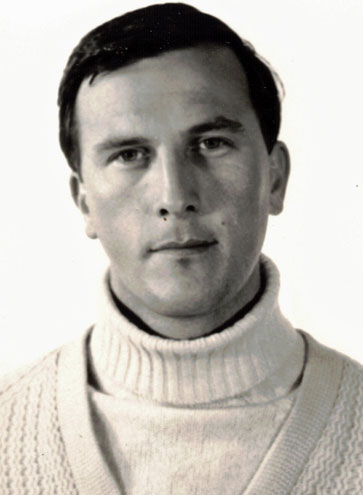
Pete Simpson
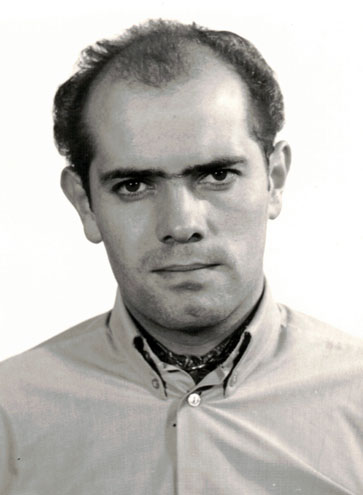
"Troop" John Smith
Paul Steiner
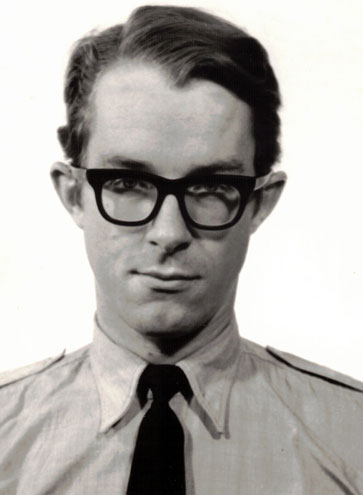
Keith Simmonds
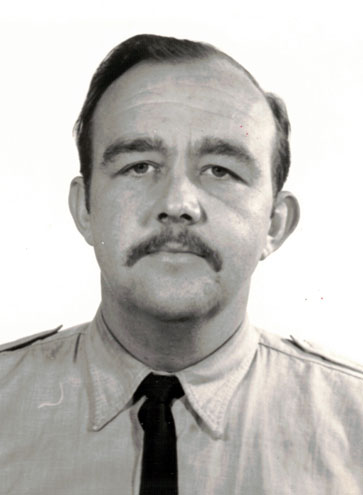
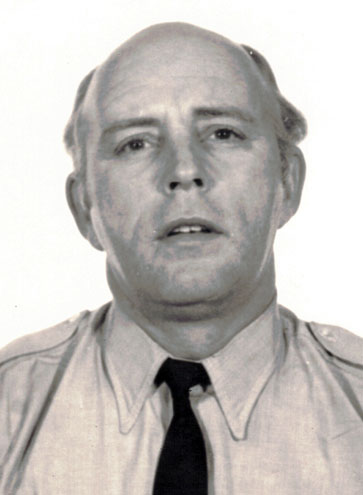
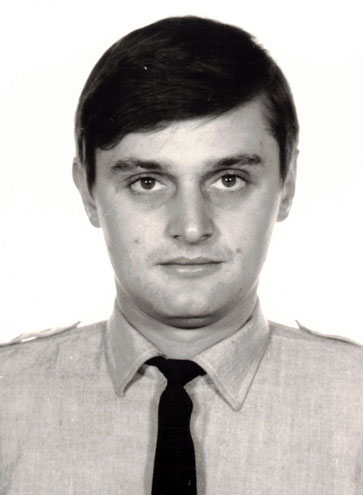
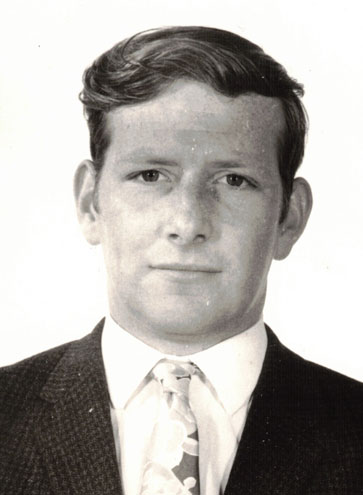
Don Stewart
Al Storey
Bob Thacker
Peter 'Hammy' Thompson
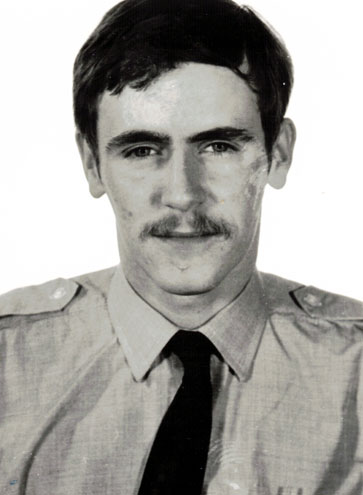
Bob Tring
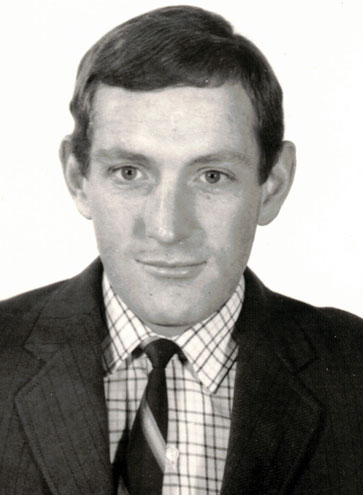
Chris Twyman
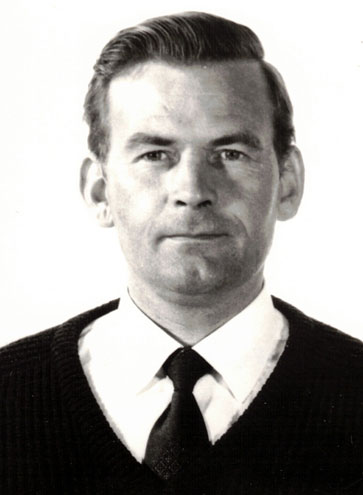
Don Wickham
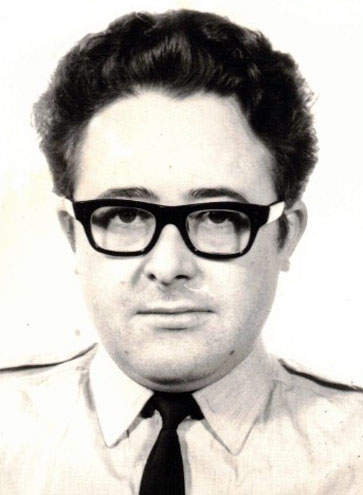
Dave Wilkes
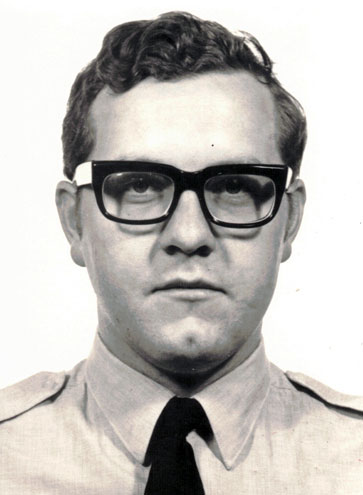
Dave Wright
Tony Willis
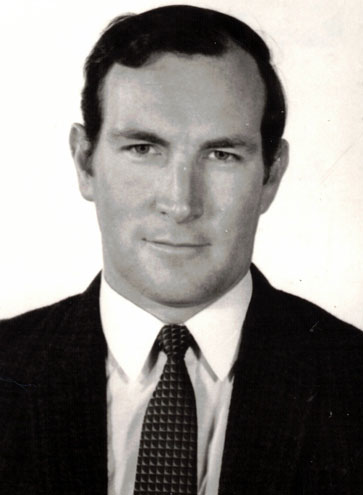



Goodbye flypasts mark end of long and illustrious career for RAF Pumas
On 26 March, RAF Benson waved off Puma helicopters for the last time as they embarked on their farewell flight around the UK. The Puma helicopter has been the work horse of the Royal Air Force for over five decades.
Introduced into service in 1971, the Puma quickly became a key asset, known for its agility, speed, and versatility. Over the years, it has been deployed in various Operations and humanitarian missions.
In recent history it has seen service in Kenya 2009 to 2011 where they supported UK exercises and in Afghanistan 2015 to 2021. It has also provided support in the Caribbean as a part of Operation RUMAN after Hurricane Irma in September 2017. During COVID it took part in Operation RESCRIPT in 2020, providing vital aid to those in need. Up until March 2025, it has been involved in enduring operations in Cyprus and Brunei.
To name a few, the Farewell Tour took the Puma to several key locations:
RAF Benson: The home base for the Puma fleet, RAF Benson, has been the heart of operations and training for these helicopters. The farewell flight's first and final stop was a tribute to the countless hours of service and training conducted here.
Northern Ireland: The Puma played a crucial role during the Troubles, providing essential support and transport. The visit to Northern Ireland was a poignant reminder of the helicopter's contributions to peacekeeping efforts.
Kensington Palace: To honour Prince Michael of Kent’s distinguished connection to RAF Benson and the Puma fleet.
Cranwell, Halton, Honington, Shawbury and Stanta training area: All sights of significance for the Aircrew that have intertwined history with the Helicopter.
Boscombe Down and Airbus Kidlington: Sites for significance for the maintenance and operational capabilities of the fleet.
As the helicopter flew over these historic sites, it symbolised the end of an era and the beginning of a new chapter for the RAF. The Puma's drawdown marks the transition to newer technologies, but its legacy will continue to inspire future generations of aviators. For those who have flown and engineered her for over 50 years this is a poignant moment and a chance to reflect on their dedication and service.
The farewell flight was not just a goodbye but a celebration of the Puma's remarkable journey and the countless lives it touched and saved over its distinguished career.
Wing Commander Nick Monahan, Officer Commanding 33 Squadron and Puma Force Commander said, “Each place reflects the rich history and contributions that the Puma has made during its time in service. The aircraft has been a cornerstone of global Defence Operations for more than five decades. We want to celebrate its contribution to supporting our people around the world over the past 54 years.”
Wing Commander Alice Tierney, Station Commander, RAF Benson said, “We recognise and celebrate the dedication of everyone who has served on or supported Puma operations over the last five decades."
raf.mod.uk/bfbs forces news
Introduced into service in 1971, the Puma quickly became a key asset, known for its agility, speed, and versatility. Over the years, it has been deployed in various Operations and humanitarian missions.
In recent history it has seen service in Kenya 2009 to 2011 where they supported UK exercises and in Afghanistan 2015 to 2021. It has also provided support in the Caribbean as a part of Operation RUMAN after Hurricane Irma in September 2017. During COVID it took part in Operation RESCRIPT in 2020, providing vital aid to those in need. Up until March 2025, it has been involved in enduring operations in Cyprus and Brunei.
To name a few, the Farewell Tour took the Puma to several key locations:
RAF Benson: The home base for the Puma fleet, RAF Benson, has been the heart of operations and training for these helicopters. The farewell flight's first and final stop was a tribute to the countless hours of service and training conducted here.
Northern Ireland: The Puma played a crucial role during the Troubles, providing essential support and transport. The visit to Northern Ireland was a poignant reminder of the helicopter's contributions to peacekeeping efforts.
Kensington Palace: To honour Prince Michael of Kent’s distinguished connection to RAF Benson and the Puma fleet.
Cranwell, Halton, Honington, Shawbury and Stanta training area: All sights of significance for the Aircrew that have intertwined history with the Helicopter.
Boscombe Down and Airbus Kidlington: Sites for significance for the maintenance and operational capabilities of the fleet.
As the helicopter flew over these historic sites, it symbolised the end of an era and the beginning of a new chapter for the RAF. The Puma's drawdown marks the transition to newer technologies, but its legacy will continue to inspire future generations of aviators. For those who have flown and engineered her for over 50 years this is a poignant moment and a chance to reflect on their dedication and service.
The farewell flight was not just a goodbye but a celebration of the Puma's remarkable journey and the countless lives it touched and saved over its distinguished career.
Wing Commander Nick Monahan, Officer Commanding 33 Squadron and Puma Force Commander said, “Each place reflects the rich history and contributions that the Puma has made during its time in service. The aircraft has been a cornerstone of global Defence Operations for more than five decades. We want to celebrate its contribution to supporting our people around the world over the past 54 years.”
Wing Commander Alice Tierney, Station Commander, RAF Benson said, “We recognise and celebrate the dedication of everyone who has served on or supported Puma operations over the last five decades."
raf.mod.uk/bfbs forces news

From: Paul “Arfur” English, Swindon, Wilts
Subject: Down Route and Unserviceable
Good morning Tony,
Two stories for you regarding u/s down route... Both were while I was on MSF at Waddington and during Op Deny Flight in the early 90's.
1st was en-route to Gioia Del Colle, Italy. We had a resupply of 1.4 onboard and took a bird strike on approach. We were on ground for a while as the Ground Engineer inspected the No.1 engine. Jeff Alleyne was the Mover in house there at the time. Think we had about 2 hours on ground.
2nd was even better. I was the resident Mover at Aviano. The scheduled C130 arrived and was turned around by myself and my trusty Q-Supp_LL stacker. All was well, including blood samples which were kept in the section fridge (from a RN diver, who sadly lost his life on duty).
Start up went as planned with No.3, then No.4 decided we ain't going home yet. Again Ground Engineer got his spanners to work and told us it was at least 24hrs. Loadie was Karen Clee. I'm chatting to her by the ramp and we discussed options etc. Then the Captain approached us, American exchange Major, USAF. Pleasantries exchanged, I ran him up to Ops, luckily the Ops Officer was a guy I got on well with. A few phone calls made and we were booked into a Hotel.
Great we thought.... wrong! The hotel was up in the Dolomites at a ski resort which technically was closed as it was not skiing season. But Giuseppe must have thought he won lottery with 5 crew, 23 pax and me. Only trouble was it was about 2 hours by coach up to the hotel. All was not lost, as I had bought beer to come home with, a perk of a Mover being supernumerary crew I guess! Crew agreed to sort out a whip round to re-imburse me. I sorted out the blood samples after taking advice.
We got to the hotel no issues. Until the skipper or co pilot tried to check us in. Giuseppe, no parlez English; a little German maybe. Cue Mover! As someone had mentioned to the Loadie en-route to the toilet, I had been to Germany. There's me, surname English who's Welsh by birth, speaking pigeon German to an Italian. Rooms were booked, including single and doubles where necessary. Mama Giuseppe got busy making a huge spaghetti bolognaise for us all.
The skipper declared that his room was the party room and after dinner we retired to his room for a few ales. Much mirth and merriment ensued. My best memory of him apart from being a bloody good egg, was him lobbing me a can of beer and thanking me for my help. As he threw it in my general direction. He said have a "Pork Chop" Arfur. Somewhat aghast at that statement, I said, "Ya crazy yank, it's beer! "True, "came the reply, "but that can has the same calorific value as a pork chop!" The mind boggles.
Following day we were airborne and en-route home, about 24 hours late.
Regards,
Arfur
p.s. we did save some ales for the Ground Engineer.
Subject: Down Route and Unserviceable
Good morning Tony,
Two stories for you regarding u/s down route... Both were while I was on MSF at Waddington and during Op Deny Flight in the early 90's.
1st was en-route to Gioia Del Colle, Italy. We had a resupply of 1.4 onboard and took a bird strike on approach. We were on ground for a while as the Ground Engineer inspected the No.1 engine. Jeff Alleyne was the Mover in house there at the time. Think we had about 2 hours on ground.
2nd was even better. I was the resident Mover at Aviano. The scheduled C130 arrived and was turned around by myself and my trusty Q-Supp_LL stacker. All was well, including blood samples which were kept in the section fridge (from a RN diver, who sadly lost his life on duty).
Start up went as planned with No.3, then No.4 decided we ain't going home yet. Again Ground Engineer got his spanners to work and told us it was at least 24hrs. Loadie was Karen Clee. I'm chatting to her by the ramp and we discussed options etc. Then the Captain approached us, American exchange Major, USAF. Pleasantries exchanged, I ran him up to Ops, luckily the Ops Officer was a guy I got on well with. A few phone calls made and we were booked into a Hotel.
Great we thought.... wrong! The hotel was up in the Dolomites at a ski resort which technically was closed as it was not skiing season. But Giuseppe must have thought he won lottery with 5 crew, 23 pax and me. Only trouble was it was about 2 hours by coach up to the hotel. All was not lost, as I had bought beer to come home with, a perk of a Mover being supernumerary crew I guess! Crew agreed to sort out a whip round to re-imburse me. I sorted out the blood samples after taking advice.
We got to the hotel no issues. Until the skipper or co pilot tried to check us in. Giuseppe, no parlez English; a little German maybe. Cue Mover! As someone had mentioned to the Loadie en-route to the toilet, I had been to Germany. There's me, surname English who's Welsh by birth, speaking pigeon German to an Italian. Rooms were booked, including single and doubles where necessary. Mama Giuseppe got busy making a huge spaghetti bolognaise for us all.
The skipper declared that his room was the party room and after dinner we retired to his room for a few ales. Much mirth and merriment ensued. My best memory of him apart from being a bloody good egg, was him lobbing me a can of beer and thanking me for my help. As he threw it in my general direction. He said have a "Pork Chop" Arfur. Somewhat aghast at that statement, I said, "Ya crazy yank, it's beer! "True, "came the reply, "but that can has the same calorific value as a pork chop!" The mind boggles.
Following day we were airborne and en-route home, about 24 hours late.
Regards,
Arfur
p.s. we did save some ales for the Ground Engineer.

A new member joining us recently is:
Gav Tarplee, Salisbury, Wilts
Welcome to the OBA!


From: Colin Eyre, Bridgend, Glamorgan
Subject: Down Route and Unserviceable
Hi Tony,
Started out as a fairly routine task to go from Fairford to Gütersloh where we would pick up the Scots Guards then on to Gander and finish up at Atkinson (Guyana) to offload. We would then go on to Belize. We had left Fairford on the 30th of June and arrived in Belize on the 3rd of July after night stopping in Gütersloh and Gander. So far all OK. Then things started to go wrong...
July 7th 1969 - Departed Belize on XV296. 1 hour 15 minutes later we were back on the ramp. Night stop 1 night.
July 8th - Taxied out but back on the ramp after 40 minutes. Night stop 3 nights.
July 12th - Departed Belize on XV299. Diverting again but this time to Nassau; could be worse.
July 13th - Departed Nassau but had to return. Lovely hotel with poolside room. Had a problem with the loadmaster who wanted myself and my old mate Sandy Sandiford to get out to the aircraft. We had both bought a hand of bananas in Belize and sad to say they had not survived the heat. We had to dispose of them. Night stop 4 nights.
July 17th - Departed Nassau destination Fairford via Goose Bay. Made it this time. Now I just had to explain to my wife how a job that should have been only a few days turned out to be 17 days.
Hi ho!
Subject: Down Route and Unserviceable
Hi Tony,
Started out as a fairly routine task to go from Fairford to Gütersloh where we would pick up the Scots Guards then on to Gander and finish up at Atkinson (Guyana) to offload. We would then go on to Belize. We had left Fairford on the 30th of June and arrived in Belize on the 3rd of July after night stopping in Gütersloh and Gander. So far all OK. Then things started to go wrong...
July 7th 1969 - Departed Belize on XV296. 1 hour 15 minutes later we were back on the ramp. Night stop 1 night.
July 8th - Taxied out but back on the ramp after 40 minutes. Night stop 3 nights.
July 12th - Departed Belize on XV299. Diverting again but this time to Nassau; could be worse.
July 13th - Departed Nassau but had to return. Lovely hotel with poolside room. Had a problem with the loadmaster who wanted myself and my old mate Sandy Sandiford to get out to the aircraft. We had both bought a hand of bananas in Belize and sad to say they had not survived the heat. We had to dispose of them. Night stop 4 nights.
July 17th - Departed Nassau destination Fairford via Goose Bay. Made it this time. Now I just had to explain to my wife how a job that should have been only a few days turned out to be 17 days.
Hi ho!



From: Ron Turley, Davao
Subject: Down Route and Unserviceable
Hello Tony,
In November 1968, I wandered into the Ops Room and saw that Juliet Team was tasked for a job in the USA. My heart fell when I saw the task was only for two days.
In reading this it needs to remembered that the VC-10 was still very much "shiny fleet" and rarely was utilised in a pure freight role, so we movers did not have a huge amount of experience on it other than throwing bags into the belly hold and struggling with the ventral hold.
THE TEAM: Gerry Meijer, Bob Turner, Hugh Curran, Martin Gledhill, Al Verth and myself. Probably 50 plus years experience between us.
THE TASK: Brize Norton to Dulles. Pick up slip crew and on to Calgary and offload some freight. A one hour turn round then on to McClellan AFB for a night stop where our time would be spent building pallets of Sparrow missile motors and loading the aircraft. Lucky if we got to the hotel, I thought. Then a direct flight of 11 hours back to Brize. In all, less than 48 hrs if we stuck to the schedule.
DULLES: On landing and applying reverse thrust, No 4 Rolls Royce Conway displayed a high temperature warning. Slip crew decided on getting some techies out to take a look. Techies were to fly out on the next schedule. MAMS team gets accommodated in hotel in distinctly dodgy part of town with ladies in high heels looking for rides from passing cars.
Techies arrive and cannot find a problem with number 4 engine but LOx is low and needs replenishment. No LOx at Dulles so plan is to fly to Andrews AFB and pick some up. Yours truly is dispatched to make sure things go smoothly. At Andrews, Ops has problems. "I'm here for the RAF VC-10".
"DC10, Sir?".
"No. VC-10", I say. This is repeated a few times before an understanding is reached. I hang around and am amazed to see President Jimmy Carter wander past. I hadn't seen Air Force One! The VC-10 arrives, gets its LOx and we set off for Calgary. DELAY: 2 days.
Subject: Down Route and Unserviceable
Hello Tony,
In November 1968, I wandered into the Ops Room and saw that Juliet Team was tasked for a job in the USA. My heart fell when I saw the task was only for two days.
In reading this it needs to remembered that the VC-10 was still very much "shiny fleet" and rarely was utilised in a pure freight role, so we movers did not have a huge amount of experience on it other than throwing bags into the belly hold and struggling with the ventral hold.
THE TEAM: Gerry Meijer, Bob Turner, Hugh Curran, Martin Gledhill, Al Verth and myself. Probably 50 plus years experience between us.
THE TASK: Brize Norton to Dulles. Pick up slip crew and on to Calgary and offload some freight. A one hour turn round then on to McClellan AFB for a night stop where our time would be spent building pallets of Sparrow missile motors and loading the aircraft. Lucky if we got to the hotel, I thought. Then a direct flight of 11 hours back to Brize. In all, less than 48 hrs if we stuck to the schedule.
DULLES: On landing and applying reverse thrust, No 4 Rolls Royce Conway displayed a high temperature warning. Slip crew decided on getting some techies out to take a look. Techies were to fly out on the next schedule. MAMS team gets accommodated in hotel in distinctly dodgy part of town with ladies in high heels looking for rides from passing cars.
Techies arrive and cannot find a problem with number 4 engine but LOx is low and needs replenishment. No LOx at Dulles so plan is to fly to Andrews AFB and pick some up. Yours truly is dispatched to make sure things go smoothly. At Andrews, Ops has problems. "I'm here for the RAF VC-10".
"DC10, Sir?".
"No. VC-10", I say. This is repeated a few times before an understanding is reached. I hang around and am amazed to see President Jimmy Carter wander past. I hadn't seen Air Force One! The VC-10 arrives, gets its LOx and we set off for Calgary. DELAY: 2 days.

CALGARY: No problems. Offload completed and take off heading for Sacramento (McClellan AFB). Number 4 engine plays up again and is shut down.
SACRAMENTO: Techies examine engine and declare an engine change is needed. Somewhere in the UK a plot is hatched to load a fresh Conway plus engine change kit onto a C130 already scheduled to go to the US. Engine gets trucked to Lyneham is loaded onto C130 which flogs across the pond and lands, broken, at Gander. Loads are swapped around and much ingenuity is involved before engine and accompanying C130 start heading our way. DELAY: Another 2 days.
SACRAMENTO CONT'D: The C130 arrives and departs almost immediately on its original task leaving us with a shedful of rocket motors, a Conway engine on a stand, a spare stand to drop the u/s engine into and associated kit.
By this stage the imprest is empty and more funds are wired to us by the embassy. While the techies carry out the engine change, we visit San Francisco and buy the obligatory 'I caught the crabs on Fisherman's Wharf' T-shirt. The team also took the rental car around Steve McQueen's Bullitt route and saw the hippy houses in Height Ashbury.
Meanwhile, back at the VC-10, the device - a kind of pulley system that fitted onto the tail fin to lower the engine into the trolley - failed and nearly dropped the engine. Chief techie decides he needs a replacement pulley thing. Many messages pass between California, Brize, Group and a new pulley is found and trucked to LHR to be flown out to San Francisco courtesy of British Airways. DELAY: Another couple of days.
SAN FRANCISCO: Yours truly leaves in large Yank station wagon for the civil airport at San Francisco with some of the team taking in the Golden Gate Bridge on the way. Arrived at cargo terminal and hung around waiting for pulley. And hung around. And hung around some more.
Eventually, British Airways found the errant pulley in Miami. "Would I like it put on the next BA flight to SF?" I was tempted to say we would drive over to Miami to collect the bloody thing but refrained and explained that it was an AOG item and they should get it on the next flight; and they did! DELAY: About another day.
BACK AT SACRAMENTO: So there we were. Engine finally swapped out, a shedful of Sparrow motors, a spare engine on a trolley and an additional trolley and sundry techie stuff plus an additional 3 techie pax all to load on a VC-10 originally tasked to take only the motors.
SACRAMENTO: Techies examine engine and declare an engine change is needed. Somewhere in the UK a plot is hatched to load a fresh Conway plus engine change kit onto a C130 already scheduled to go to the US. Engine gets trucked to Lyneham is loaded onto C130 which flogs across the pond and lands, broken, at Gander. Loads are swapped around and much ingenuity is involved before engine and accompanying C130 start heading our way. DELAY: Another 2 days.
SACRAMENTO CONT'D: The C130 arrives and departs almost immediately on its original task leaving us with a shedful of rocket motors, a Conway engine on a stand, a spare stand to drop the u/s engine into and associated kit.
By this stage the imprest is empty and more funds are wired to us by the embassy. While the techies carry out the engine change, we visit San Francisco and buy the obligatory 'I caught the crabs on Fisherman's Wharf' T-shirt. The team also took the rental car around Steve McQueen's Bullitt route and saw the hippy houses in Height Ashbury.
Meanwhile, back at the VC-10, the device - a kind of pulley system that fitted onto the tail fin to lower the engine into the trolley - failed and nearly dropped the engine. Chief techie decides he needs a replacement pulley thing. Many messages pass between California, Brize, Group and a new pulley is found and trucked to LHR to be flown out to San Francisco courtesy of British Airways. DELAY: Another couple of days.
SAN FRANCISCO: Yours truly leaves in large Yank station wagon for the civil airport at San Francisco with some of the team taking in the Golden Gate Bridge on the way. Arrived at cargo terminal and hung around waiting for pulley. And hung around. And hung around some more.
Eventually, British Airways found the errant pulley in Miami. "Would I like it put on the next BA flight to SF?" I was tempted to say we would drive over to Miami to collect the bloody thing but refrained and explained that it was an AOG item and they should get it on the next flight; and they did! DELAY: About another day.
BACK AT SACRAMENTO: So there we were. Engine finally swapped out, a shedful of Sparrow motors, a spare engine on a trolley and an additional trolley and sundry techie stuff plus an additional 3 techie pax all to load on a VC-10 originally tasked to take only the motors.
There was a bit of a conflab. Nobody had seen a Conway on a trolley loaded onto a VC-10 before. I insisted that I'd heard that every RAF transport type could carry its own engine. Much doubt ensued but it had to be tried. Plan was to load most of the motors onto 5 pallets, place them on the aircraft and finish the pallets off inside. They simply wouldn't fit through the door otherwise. This was done and the spare trolley was under the motor boxes on the pallets.
Then came the Conway on a borrowed 40K ConDec. It was simply too long to turn the 90 degrees as it went through the doors. The door protection kit came off and it nearly fitted. Some judiciously applied OM15 allowed us to skid it in and a bottle jack was used to raise the trolley so as to place some dunnage under the wheels. Job done!
The next morning I presented the loadmaster with a puke bag with the documentation and explained, "5 pallets down the back. It'll be a bit tight getting past them and a Conway up front. You'll need to put the crew bags in the ventral to trim it."
Then came the Conway on a borrowed 40K ConDec. It was simply too long to turn the 90 degrees as it went through the doors. The door protection kit came off and it nearly fitted. Some judiciously applied OM15 allowed us to skid it in and a bottle jack was used to raise the trolley so as to place some dunnage under the wheels. Job done!
The next morning I presented the loadmaster with a puke bag with the documentation and explained, "5 pallets down the back. It'll be a bit tight getting past them and a Conway up front. You'll need to put the crew bags in the ventral to trim it."
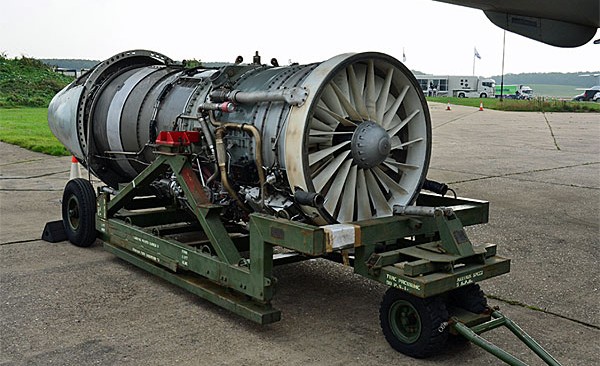
"Don't be silly" he responded. "You can't get a Conway on a VC-10".
"Well, it was a bit tight", I said.
And so we took off and headed back to Brize direct. 11 hrs 5 mins. DELAY: A total of 8 to 10 days on a two day task!
BACK AT LYNEHAM, FINALLY: But the story didn't end there. The morning after we got back to Lyneham we assembled in the crew room. A message came down that OC UKMAMS wanted to see me - right away - in his office. "Bloody Hell. What have I done now?" I thought.
"Turley, don't you know you can't get a Conway onto a VC-10?" he said.
"Errrrr", I said, or words to that effect.
"Get your team together and go over to Brize and offload the bloody thing. Base movements can't do it. Oh, and JATE will be there to see how it's done!"
So we did.
"Well, it was a bit tight", I said.
And so we took off and headed back to Brize direct. 11 hrs 5 mins. DELAY: A total of 8 to 10 days on a two day task!
BACK AT LYNEHAM, FINALLY: But the story didn't end there. The morning after we got back to Lyneham we assembled in the crew room. A message came down that OC UKMAMS wanted to see me - right away - in his office. "Bloody Hell. What have I done now?" I thought.
"Turley, don't you know you can't get a Conway onto a VC-10?" he said.
"Errrrr", I said, or words to that effect.
"Get your team together and go over to Brize and offload the bloody thing. Base movements can't do it. Oh, and JATE will be there to see how it's done!"
So we did.

From: Ron Turley, Davao
Subject: More Memories
Hello again, Tony,
I have a few other UK MAMS yarns I must write up when I get a moment:
1. How we blocked the main road of a town in Denmark with a Condec.
2. The magic Form 252, Miscellaneous Payments Form or how to manage a sub-imprest. I can probably tell this as the statute of limitations will have been exceeded.
3. Loading the Gazelle with no skids. This also involves dropping flares from the Gazelle into the swimming pool of our hotel.
4. The story of tipping a C130 at Ottawa.
I also wondered if you might be interested in a couple of non-MAMS stories that deserve to be recorded somewhere:
1. The air movements side of getting the Victors from Marham out to Ascension Island. I was just off MAMS at the time and was called in to take the Marham side. MAMS, some, did pitch up later.
2. I was SAMO at Gutersloh during the Gulf War. BBC et al showed lots of footage of aircraft leaving the UK going to the Gulf. In fact they flew to RAFG to pick up BAOR and its kit to take them out to the sandpit. Movers at Laarbruch and Gutersloh did a truly amazing job!
Thanks for the great work,
Ron
Subject: More Memories
Hello again, Tony,
I have a few other UK MAMS yarns I must write up when I get a moment:
1. How we blocked the main road of a town in Denmark with a Condec.
2. The magic Form 252, Miscellaneous Payments Form or how to manage a sub-imprest. I can probably tell this as the statute of limitations will have been exceeded.
3. Loading the Gazelle with no skids. This also involves dropping flares from the Gazelle into the swimming pool of our hotel.
4. The story of tipping a C130 at Ottawa.
I also wondered if you might be interested in a couple of non-MAMS stories that deserve to be recorded somewhere:
1. The air movements side of getting the Victors from Marham out to Ascension Island. I was just off MAMS at the time and was called in to take the Marham side. MAMS, some, did pitch up later.
2. I was SAMO at Gutersloh during the Gulf War. BBC et al showed lots of footage of aircraft leaving the UK going to the Gulf. In fact they flew to RAFG to pick up BAOR and its kit to take them out to the sandpit. Movers at Laarbruch and Gutersloh did a truly amazing job!
Thanks for the great work,
Ron


A Memory From Singapore - Circa 1970 - The Laughing Bag!

From: Meirion (Taff) Jones, Barry, Glamorgan
Subject: Down Route and Unserviceable
Hi Tony,
Be careful what you wish for…
1976 started off very quiet for A team, a blank board until the end of the month, there are only so many sandbags you can sit on in the crew room,
or cruise past ops in vain hope.
1) Finally, on the 9th January, Pete Clayton and I were to accompany Terry Randel on a bottle exchange to Goose Bay. "Draw plenty of cold weather clothing, it's a bit cold over there; but it shouldn't be a problem as the aircraft will be pulled into the hangar".
So on the 10th we boarded Herc XV217 for an 8 hours 15 minute flight to Goose Bay. On arrival it began to unravel, the expected hangar space was occupied by a Belfast which had gone unserviceable whilst we were on our way over. Ah well, out in the cold it was going to be. We were told it was already -32ºC and dusk was not going to improve matters. By the time we had completed the offload and backload it was -46ºC, and boy was that cold!
Next morning we boarded the a/c for our return to Lyneham. However the loadmaster advised us not to get our hopes up, as apparently the prop feathering mechanism on a Herc did not take kindly to such a severe cold soak. And so the mild ping on start up did not surprise, announcing that we were u/s also. The next few days were spent dashing between the mess, NAAFI or general office to keep the squadron abreast of our situation.
Now Terry and myself, being gentlemen, insisted on Peter always going out first, there would be a short pause before we joined him, and depending on how much ice he had on his Mexican style moustache we would gauge the severity of the temperature (SORRY Peter!)
Finally, on the 15th, the Belfast XR368 was serviceable and we departed for Brize Norton along with a number of wives who had indulged out for Christmas with their husbands.
2) Between October 31st and November 6th 1976, Cliff Weeks, George Lynes and I were on a grand tour anti-clockwise around the USA. Moffett Field Naval Air Station (San Jose) jumped out on this itinerary as it was only 50 miles from San Francisco.
On the penultimate stop before Moffett (Bergstrom), a small engine problem arose, but because we were light, and Moffett had P-3 Orions with similar engines to the Herc, the captain elected to carry it in the hope that a quick fix was possible (that was his story and he was going to stick with it!). Unfortunately, it was not a quick fix, and a wonderful 4 days were spent exploring the amazing city of San Francisco - mind you, we had to get over the initial shock of the weather forecast, followed by the earthquake forecast! The hotel front desk girl advised us to forget about it as the percentage figures vary every night, and nothing has happened yet.
The tram car rides were a hoot - the ticket collector and driver had a double act and repartee amusing us passengers. Having being recently engaged and as a good Welsh boy, the cheaper American prices allowed me to add nicely to our bottom drawer.
We eventually arrived home on the 10th. Happy days!
Best regards
Meirion (Taff) Jones
A team 1974-77
Subject: Down Route and Unserviceable
Hi Tony,
Be careful what you wish for…
1976 started off very quiet for A team, a blank board until the end of the month, there are only so many sandbags you can sit on in the crew room,
or cruise past ops in vain hope.
1) Finally, on the 9th January, Pete Clayton and I were to accompany Terry Randel on a bottle exchange to Goose Bay. "Draw plenty of cold weather clothing, it's a bit cold over there; but it shouldn't be a problem as the aircraft will be pulled into the hangar".
So on the 10th we boarded Herc XV217 for an 8 hours 15 minute flight to Goose Bay. On arrival it began to unravel, the expected hangar space was occupied by a Belfast which had gone unserviceable whilst we were on our way over. Ah well, out in the cold it was going to be. We were told it was already -32ºC and dusk was not going to improve matters. By the time we had completed the offload and backload it was -46ºC, and boy was that cold!
Next morning we boarded the a/c for our return to Lyneham. However the loadmaster advised us not to get our hopes up, as apparently the prop feathering mechanism on a Herc did not take kindly to such a severe cold soak. And so the mild ping on start up did not surprise, announcing that we were u/s also. The next few days were spent dashing between the mess, NAAFI or general office to keep the squadron abreast of our situation.
Now Terry and myself, being gentlemen, insisted on Peter always going out first, there would be a short pause before we joined him, and depending on how much ice he had on his Mexican style moustache we would gauge the severity of the temperature (SORRY Peter!)
Finally, on the 15th, the Belfast XR368 was serviceable and we departed for Brize Norton along with a number of wives who had indulged out for Christmas with their husbands.
2) Between October 31st and November 6th 1976, Cliff Weeks, George Lynes and I were on a grand tour anti-clockwise around the USA. Moffett Field Naval Air Station (San Jose) jumped out on this itinerary as it was only 50 miles from San Francisco.
On the penultimate stop before Moffett (Bergstrom), a small engine problem arose, but because we were light, and Moffett had P-3 Orions with similar engines to the Herc, the captain elected to carry it in the hope that a quick fix was possible (that was his story and he was going to stick with it!). Unfortunately, it was not a quick fix, and a wonderful 4 days were spent exploring the amazing city of San Francisco - mind you, we had to get over the initial shock of the weather forecast, followed by the earthquake forecast! The hotel front desk girl advised us to forget about it as the percentage figures vary every night, and nothing has happened yet.
The tram car rides were a hoot - the ticket collector and driver had a double act and repartee amusing us passengers. Having being recently engaged and as a good Welsh boy, the cheaper American prices allowed me to add nicely to our bottom drawer.
We eventually arrived home on the 10th. Happy days!
Best regards
Meirion (Taff) Jones
A team 1974-77


From: John Furney, Dymock, Gloucestershire
Subject: Hard Luck Stories!
Hi Tony,
It would take a book to list all the Beverley flights that either diverted en route, broke down at a staging stop (the nearer to the French Riviera the better) or never returned on time from their finale destination due to “technical difficulties”.
For example, I was on a typical Beverly flight to El Adem and in no particular hurry, just overhead Sicily - bingo! - an engine problem caused us to divert to Palermo. Unfortunately, Palermo had just refurbished its aircraft pans which were sparkling white. Of course, after a Beverly engine change, the white turned to black which was visible from 30,000ft and the RAF were not welcomed back. But it was a nice couple of days beachside holiday for some whilst we waited.
However, the most memorable good luck trip was during the annual Westabout proving exercise with Britannia's from Brize to Changi via Canada and the States etc. I don’t remember why a MAMS team was on one of those flights, but one of the transiting stops was Hickam Air Force Base in Honolulu, Hawaii. I expect you are ahead of me by now, but yes, the propeller of an aircraft ahead of us had hit a ground power unit and needed a propellor replacement. This of course meant that, much against our better judgement, we were forced to disembark at Hickam AFB to await the arrival of another Britannia carrying a new propellor. After a couple of days we were roused from our sightseeing and sunbathing to meet the incoming propeller. After a slight altercation with the Americans who insisted that because the Britannia was a nose landing gear aircraft it had to have an anti tip strut fitted before any offloading could be done and they would not accept the alternative of chaining a tractor to the nose wheel, so a strut had to be found. It was, and the offloading happened and the new propeller fitted.
Not the end of the story...
To our great dismay, after an engine ground run, it was found that in fact the engine had to be changed as well and not just the propeller. What? More time bay watching, or Pearl Harbour Museum, waiting for an new engine to arrive from the UK. The hardships were mounting. The engine eventually arrived and because the Americans did not have any high sided cargo aircraft, there were no suitable heavy lift forklifts, nor was a Britannia Freight Lift Platform (BFLP) deployed (thank heavens!), it was the classic crane and slowly swinging the engine out without taking the open -hinged aircraft cargo door with it. Back loading the old engine dangling from a crane with a coordinated swing and some quick and hard pulling was not for the faint hearted!
Job done - well not quite; the last Britannia through had only three seats availlable and we were a team of six, plus Christmas was only a week away. It just happened that the team had three bachelors and three married members. Who stayed?
The bachelor plans for a memorable Christmas week in Hawaii were unfortunately thwarted by some terribly considerate person in HQ Transport Command, who thought he was doing us a favour by diverting a recently introduced VC-10 on a proving flight to Changi from its return to the UK westabout and sending it eastabout to Hickam to pick us up. As it was empty, except for us, to fly direct from San Francisco to Fairford to arrive on the night of Christmas Eve, much to the displeasure of HM Customs who rummaged the crew but left us passengers alone.
In reflection I think we were we lucky to serve at a time when the RAF transport fleet was slower and more limited in range than the aircraft of today. It offered us the benefit of more stopovers and the perhaps the chance for unplanned downtime in some off route exotic places?
All the best
John
Subject: Hard Luck Stories!
Hi Tony,
It would take a book to list all the Beverley flights that either diverted en route, broke down at a staging stop (the nearer to the French Riviera the better) or never returned on time from their finale destination due to “technical difficulties”.
For example, I was on a typical Beverly flight to El Adem and in no particular hurry, just overhead Sicily - bingo! - an engine problem caused us to divert to Palermo. Unfortunately, Palermo had just refurbished its aircraft pans which were sparkling white. Of course, after a Beverly engine change, the white turned to black which was visible from 30,000ft and the RAF were not welcomed back. But it was a nice couple of days beachside holiday for some whilst we waited.
However, the most memorable good luck trip was during the annual Westabout proving exercise with Britannia's from Brize to Changi via Canada and the States etc. I don’t remember why a MAMS team was on one of those flights, but one of the transiting stops was Hickam Air Force Base in Honolulu, Hawaii. I expect you are ahead of me by now, but yes, the propeller of an aircraft ahead of us had hit a ground power unit and needed a propellor replacement. This of course meant that, much against our better judgement, we were forced to disembark at Hickam AFB to await the arrival of another Britannia carrying a new propellor. After a couple of days we were roused from our sightseeing and sunbathing to meet the incoming propeller. After a slight altercation with the Americans who insisted that because the Britannia was a nose landing gear aircraft it had to have an anti tip strut fitted before any offloading could be done and they would not accept the alternative of chaining a tractor to the nose wheel, so a strut had to be found. It was, and the offloading happened and the new propeller fitted.
Not the end of the story...
To our great dismay, after an engine ground run, it was found that in fact the engine had to be changed as well and not just the propeller. What? More time bay watching, or Pearl Harbour Museum, waiting for an new engine to arrive from the UK. The hardships were mounting. The engine eventually arrived and because the Americans did not have any high sided cargo aircraft, there were no suitable heavy lift forklifts, nor was a Britannia Freight Lift Platform (BFLP) deployed (thank heavens!), it was the classic crane and slowly swinging the engine out without taking the open -hinged aircraft cargo door with it. Back loading the old engine dangling from a crane with a coordinated swing and some quick and hard pulling was not for the faint hearted!
Job done - well not quite; the last Britannia through had only three seats availlable and we were a team of six, plus Christmas was only a week away. It just happened that the team had three bachelors and three married members. Who stayed?
The bachelor plans for a memorable Christmas week in Hawaii were unfortunately thwarted by some terribly considerate person in HQ Transport Command, who thought he was doing us a favour by diverting a recently introduced VC-10 on a proving flight to Changi from its return to the UK westabout and sending it eastabout to Hickam to pick us up. As it was empty, except for us, to fly direct from San Francisco to Fairford to arrive on the night of Christmas Eve, much to the displeasure of HM Customs who rummaged the crew but left us passengers alone.
In reflection I think we were we lucky to serve at a time when the RAF transport fleet was slower and more limited in range than the aircraft of today. It offered us the benefit of more stopovers and the perhaps the chance for unplanned downtime in some off route exotic places?
All the best
John


From: Tony Gale, Gatineau, QC
Subject: Down Route and Aircraft Impounded!
Hello All,
16th March, 1973, Foxtrot Team UKMAMS had been assigned to a round-the-world tasking on board Belfast XR365.
Our itinerary was: Brize Norton > Akrotiri > Masirah > Colombo > Tengah > Darwin NT > Richmond NSW > Williamtown NSW > Darwin NT > Iswahyudi > Darwin NT > Tontouta > Pago Pago > Honolulu HI > Sacramento CA > Charleston SC > Gander NL > Brize Norton.
We had three main tasks:
1) Delivery of a WWII Spitfire from the UK to RAAF Base Richmond, NSW.
2) Delivery of a Sabre jet flight simulator from RAAF Base Williamtown NSW to the Indonesian Air Force Base, Iswahyudi.
3) Delivery of a WWII Sea Walrus from Darwin NT to the UK (for the Hendon Museum).
It was on the leg between Pago Pago, Samoa and Hawaii that our problem surfaced. A couple of hours into the flight, there was a strange looking spider seen to be crawling up the tail fin of the old Sea Walrus. Someone suggested that it was a "Black Widow" spider and was also of the "jumping" variety. Well, that was enough for the team, we weren't about to go near it. We proceeded to empty a spray can of DDT insecticide in the general direction of the spider, but it kept climbing! Just then the Flight Engineer came back to see what all the excitement was about. He took one look at the spider, took off his shoe and *Splat* the spider was no more.
When we arrived in Honolulu the aircraft was taxied to an isolated area and U.S. Department of Agriculture Inspectors boarded. It would appear that the spider had many relatives hidden in the fuselage and that they were of a type that would not be welcomed. The aircraft was impounded for fumigation and we were to be stuck in Hawaii for three days.
The Ambassador Hotel on Waikiki Beach was our home for the next few days. Being British servicemen, we were not at all flush in the money department, so we had to find ways to entertain ourselves in this paradise that didn't involve putting our hands in our pockets. To our delight, we did find many events that we could enjoy that cost nothing at all. We were able to get a "Rent a Wreck" car for just $6 a day which was a real bonus as it meant that we didn't have to rely on public transport. We went over to Pearl Harbour where the U.S. Navy had complimentary tours of the harbour which included a visit to the U.S.S. Arizona.
We drove around the Island and saw, amongst other things, the giant pineapple that adorns the roof of one of the pineapple processing factories. Some would say that the pineapple is the one thing that made Hawaii what it is today. We also saw Diamond Head, but I honestly could not see what all the fuss was about. The afternoon and evening was spent lounging about on Waikiki Beach. We managed to crash a beach party that night which turned out to be a really unforgettable time for us.
The following morning, bright and early, we made our way out to the "Kodak Shell". This outdoor (free) theatre had been running several times a week for the past 35 years. We were seated around what appeared to be a circus ring, perhaps 500 seats in all. Then the drums started beating and the girls, dressed in traditional grass skirts, danced their way into our hearts. The clapping was so loud we couldn't hear the drums anymore - but no one was clapping. Almost everyone in the audience had a camera pressed to their face and what we thought was clapping was actually the sound of 500 or so camera shutters opening and closing - that was quite amazing. Sales of Kodak film were very brisk!
On 30th March we re-commenced our homeward bound journey arriving back at Brize Norton on the 2nd April. It was quite amazing that the Belfast suffered no major technical issues during this wonderful adventure!
Subject: Down Route and Aircraft Impounded!
Hello All,
16th March, 1973, Foxtrot Team UKMAMS had been assigned to a round-the-world tasking on board Belfast XR365.
Our itinerary was: Brize Norton > Akrotiri > Masirah > Colombo > Tengah > Darwin NT > Richmond NSW > Williamtown NSW > Darwin NT > Iswahyudi > Darwin NT > Tontouta > Pago Pago > Honolulu HI > Sacramento CA > Charleston SC > Gander NL > Brize Norton.
We had three main tasks:
1) Delivery of a WWII Spitfire from the UK to RAAF Base Richmond, NSW.
2) Delivery of a Sabre jet flight simulator from RAAF Base Williamtown NSW to the Indonesian Air Force Base, Iswahyudi.
3) Delivery of a WWII Sea Walrus from Darwin NT to the UK (for the Hendon Museum).
It was on the leg between Pago Pago, Samoa and Hawaii that our problem surfaced. A couple of hours into the flight, there was a strange looking spider seen to be crawling up the tail fin of the old Sea Walrus. Someone suggested that it was a "Black Widow" spider and was also of the "jumping" variety. Well, that was enough for the team, we weren't about to go near it. We proceeded to empty a spray can of DDT insecticide in the general direction of the spider, but it kept climbing! Just then the Flight Engineer came back to see what all the excitement was about. He took one look at the spider, took off his shoe and *Splat* the spider was no more.
When we arrived in Honolulu the aircraft was taxied to an isolated area and U.S. Department of Agriculture Inspectors boarded. It would appear that the spider had many relatives hidden in the fuselage and that they were of a type that would not be welcomed. The aircraft was impounded for fumigation and we were to be stuck in Hawaii for three days.
The Ambassador Hotel on Waikiki Beach was our home for the next few days. Being British servicemen, we were not at all flush in the money department, so we had to find ways to entertain ourselves in this paradise that didn't involve putting our hands in our pockets. To our delight, we did find many events that we could enjoy that cost nothing at all. We were able to get a "Rent a Wreck" car for just $6 a day which was a real bonus as it meant that we didn't have to rely on public transport. We went over to Pearl Harbour where the U.S. Navy had complimentary tours of the harbour which included a visit to the U.S.S. Arizona.
We drove around the Island and saw, amongst other things, the giant pineapple that adorns the roof of one of the pineapple processing factories. Some would say that the pineapple is the one thing that made Hawaii what it is today. We also saw Diamond Head, but I honestly could not see what all the fuss was about. The afternoon and evening was spent lounging about on Waikiki Beach. We managed to crash a beach party that night which turned out to be a really unforgettable time for us.
The following morning, bright and early, we made our way out to the "Kodak Shell". This outdoor (free) theatre had been running several times a week for the past 35 years. We were seated around what appeared to be a circus ring, perhaps 500 seats in all. Then the drums started beating and the girls, dressed in traditional grass skirts, danced their way into our hearts. The clapping was so loud we couldn't hear the drums anymore - but no one was clapping. Almost everyone in the audience had a camera pressed to their face and what we thought was clapping was actually the sound of 500 or so camera shutters opening and closing - that was quite amazing. Sales of Kodak film were very brisk!
On 30th March we re-commenced our homeward bound journey arriving back at Brize Norton on the 2nd April. It was quite amazing that the Belfast suffered no major technical issues during this wonderful adventure!

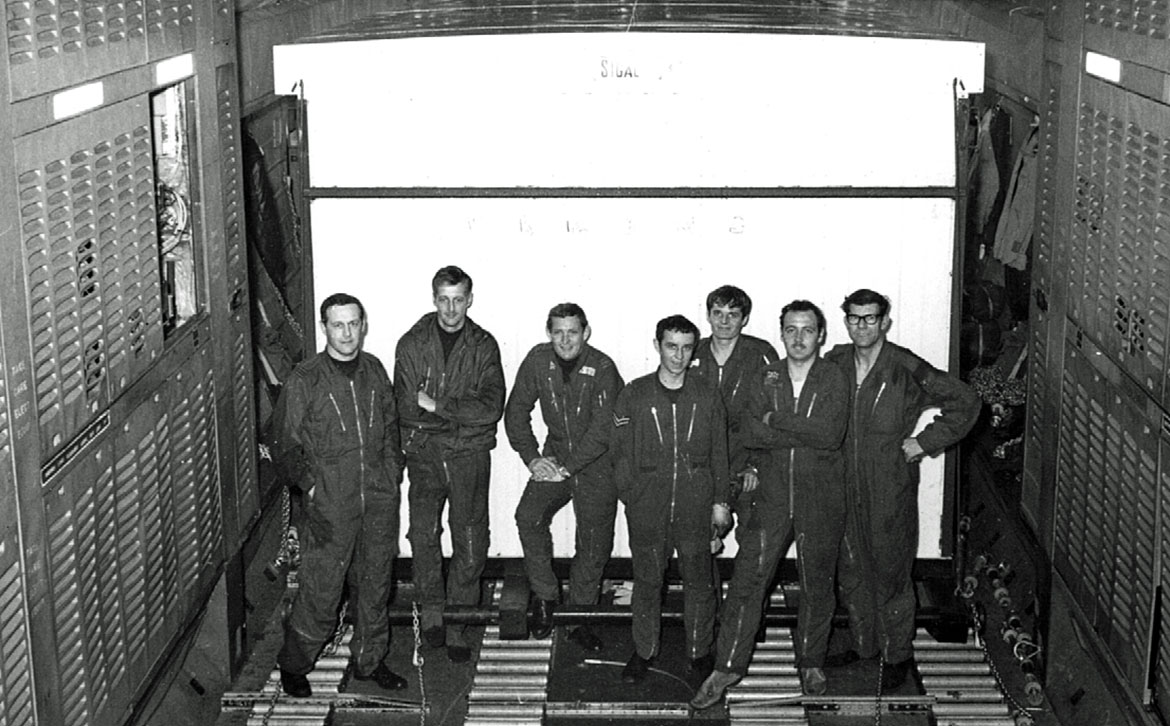
24th March 1973 - We had just loaded the Sabre jet flight simulator bound for the Indonesian Air Force.
The team: Bryan Morgan (OC UKMAMS) N/K (Ground Engineer) Chris Twyman, George Lynes, Tony Gale, Tony Moore and John Evans.
The team: Bryan Morgan (OC UKMAMS) N/K (Ground Engineer) Chris Twyman, George Lynes, Tony Gale, Tony Moore and John Evans.
Very Happy Days!
Tony
Tony

From: Keith Hubbard, Kilgetty, Pembrokeshire
Subject: The following came from Edwin Bowen, 51st Entry Supplier
Hi Tony,
Subject: The following came from Edwin Bowen, 51st Entry Supplier
Hi Tony,
The only colour is green
When I served in the RAF, my life was in the hands of black, brown, red, yellow and white toned people.
We were friends, we were combatants and we had each other’s back when the hammer slammed the anvil.
We trained, we sweated and we bled together. We came together from all parts of the World ; we came together from all religions.
We were a society unto ourselves.
We worked as a team, a well-oiled machine. We fought for our brothers and sisters through thick and thin.
We protected each other, that was what we did. The only colour we saw was Green
We were friends, we were combatants and we had each other’s back when the hammer slammed the anvil.
We trained, we sweated and we bled together. We came together from all parts of the World ; we came together from all religions.
We were a society unto ourselves.
We worked as a team, a well-oiled machine. We fought for our brothers and sisters through thick and thin.
We protected each other, that was what we did. The only colour we saw was Green


From: Mick Craner, Yeovil, Somerset
Subject: A Good Friend Lost
Hello Tony,
I have been told that a very good friend has passed away. He was my boss when we were crewed up on 48 Sqn Hastings at Changi.
He was Flt Lt Paul Jenner, who was an ace pilot and we did a lot of supply dropping in Borneo. Later he was a Captain on Cathay Pacific, living in a grand company house - all air conditioned and with a large pool; a great place to visit. He retired to France and we would exchange views and comments every month.
Now, another retired phone number.
I needed to share, as I am sure you will understand.
Mick
Subject: A Good Friend Lost
Hello Tony,
I have been told that a very good friend has passed away. He was my boss when we were crewed up on 48 Sqn Hastings at Changi.
He was Flt Lt Paul Jenner, who was an ace pilot and we did a lot of supply dropping in Borneo. Later he was a Captain on Cathay Pacific, living in a grand company house - all air conditioned and with a large pool; a great place to visit. He retired to France and we would exchange views and comments every month.
Now, another retired phone number.
I needed to share, as I am sure you will understand.
Mick

This Newsletter is Dedicated
to the Memories of:
Jim Brett (RAF)
Paul Jenner (RAF)
Stuart Mitchell (RAF)
-and-
John "Paddy" Hemmingway (RAF)
(Last surviving pilot of the Battle of Britain)
to the Memories of:
Jim Brett (RAF)
Paul Jenner (RAF)
Stuart Mitchell (RAF)
-and-
John "Paddy" Hemmingway (RAF)
(Last surviving pilot of the Battle of Britain)
Tony Gale
ukmamsoba@gmail.com
ukmamsoba@gmail.com
.

From: Tony Gale, Gatineau, QC
Subject: I have a problem
Dear all,
I have a problem. My beautiful little car, a 2016 Kia Soul SX, is off the road and in need of an engine replacement. It’s going to cost me mega bucks which I just don’t have. I would be really devastated if I were to lose my Soul Mate and would really appreciate any help you may offer. Please click on the Donate button.
Many thanks,
Tony
Subject: I have a problem
Dear all,
I have a problem. My beautiful little car, a 2016 Kia Soul SX, is off the road and in need of an engine replacement. It’s going to cost me mega bucks which I just don’t have. I would be really devastated if I were to lose my Soul Mate and would really appreciate any help you may offer. Please click on the Donate button.
Many thanks,
Tony

